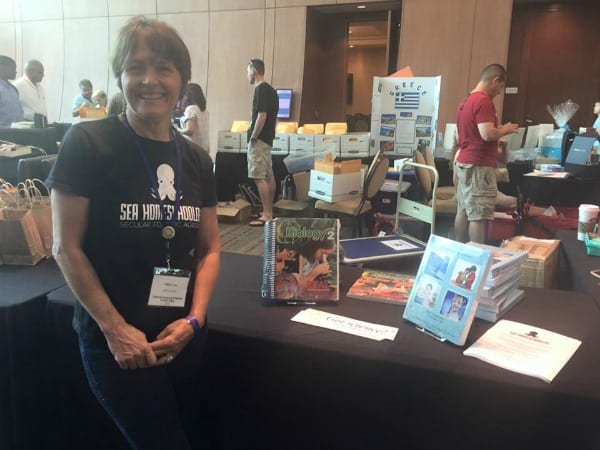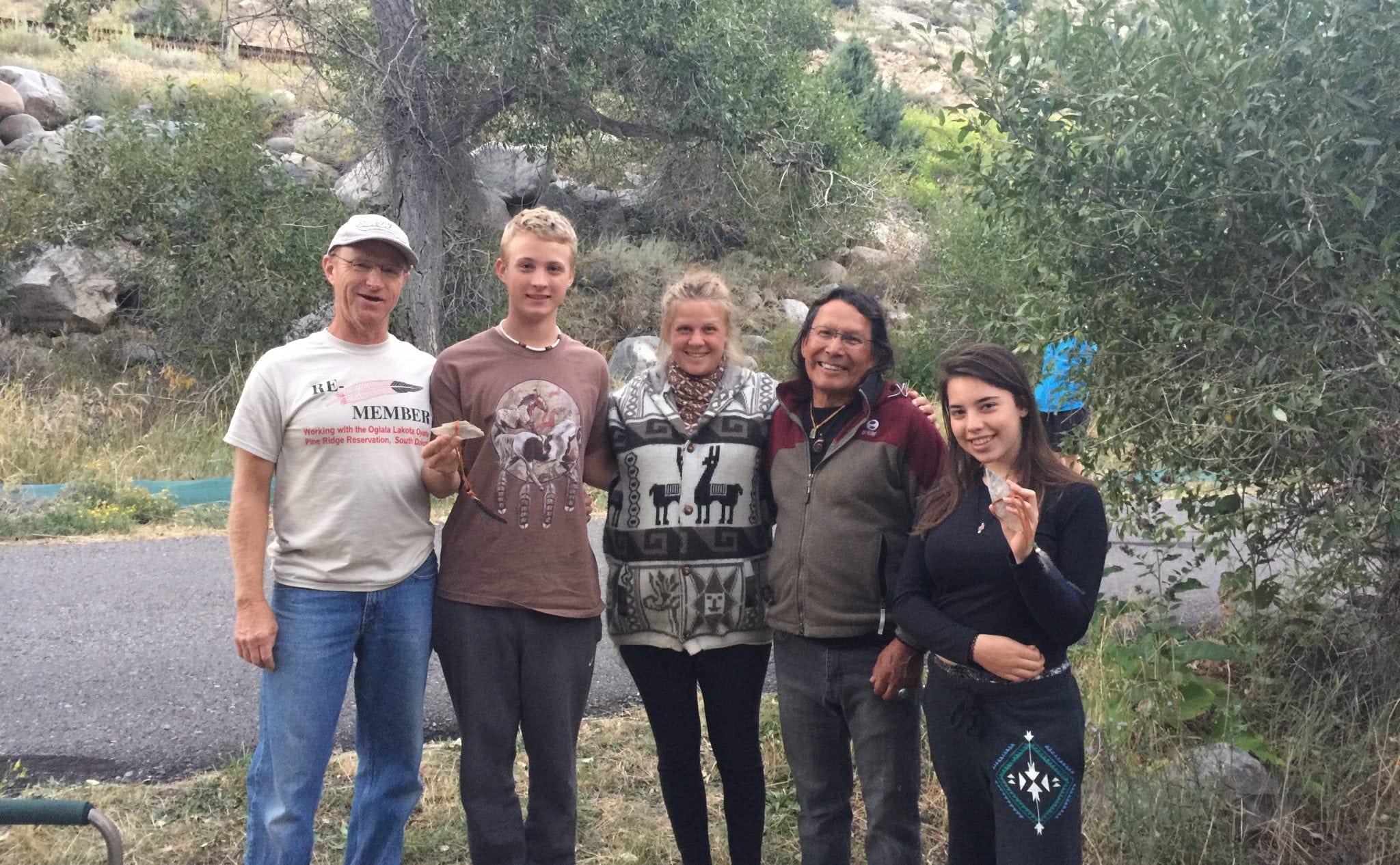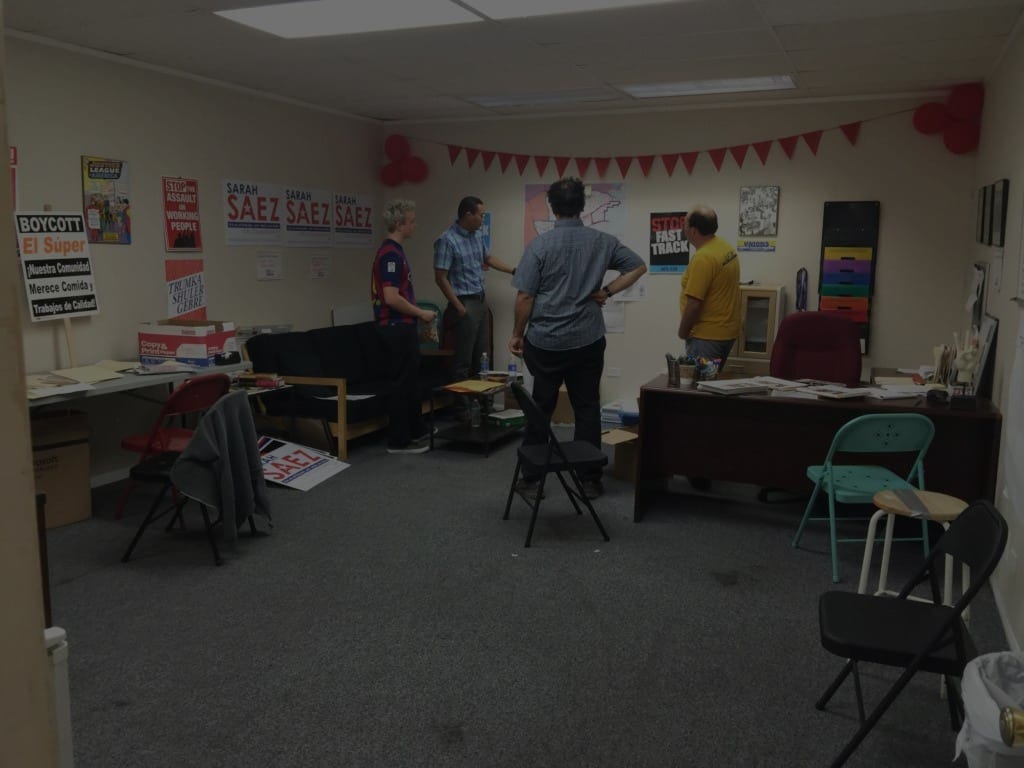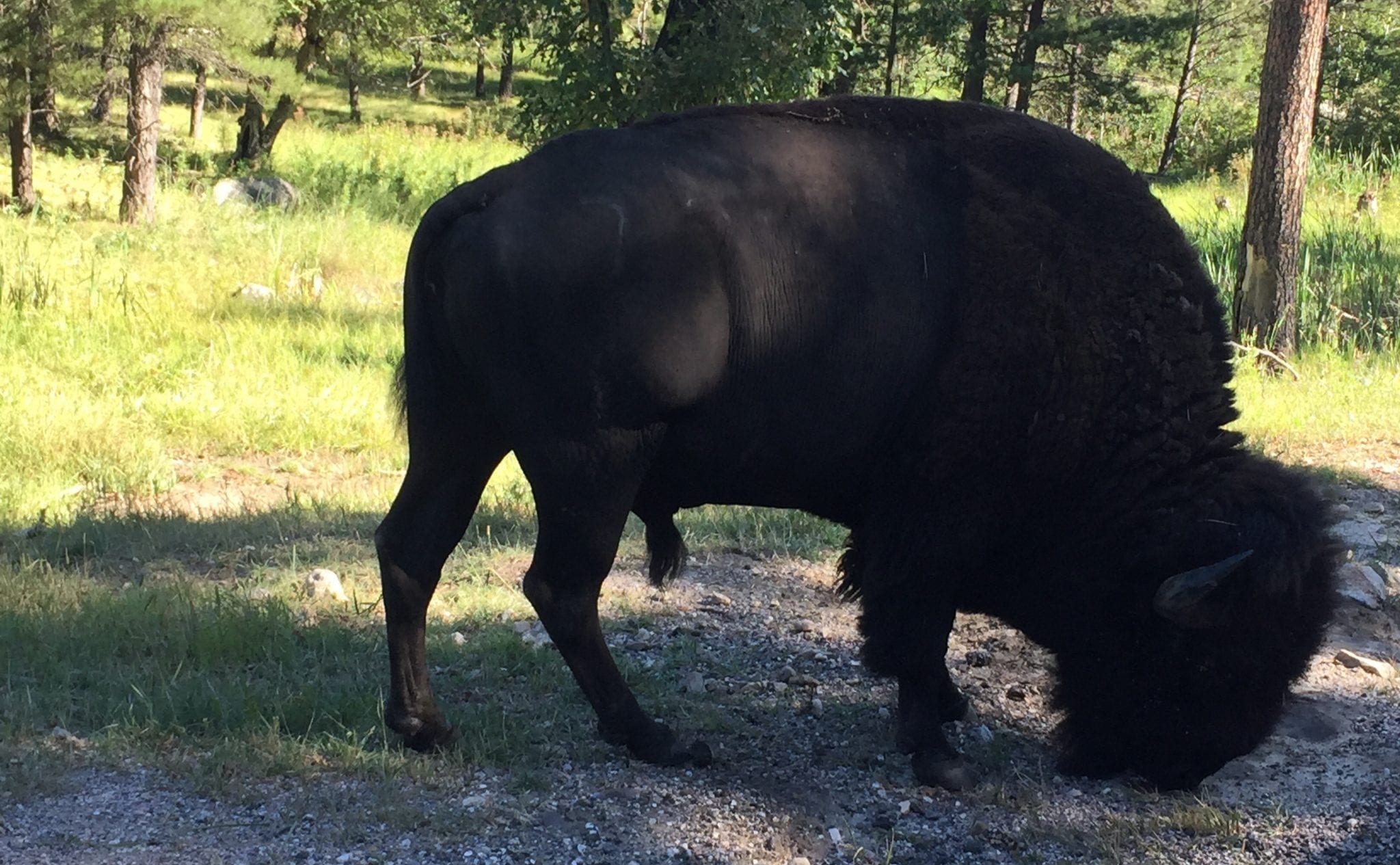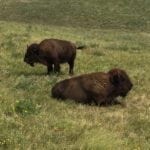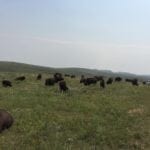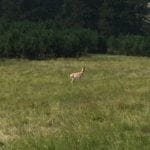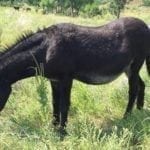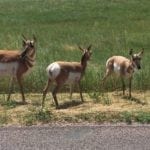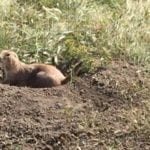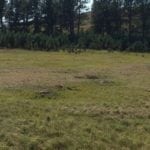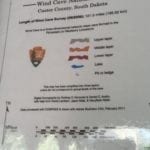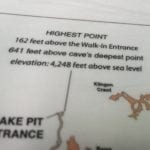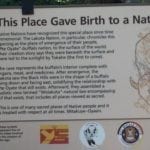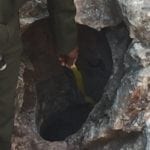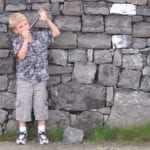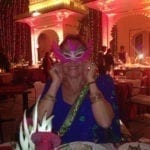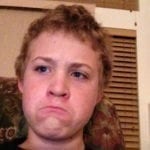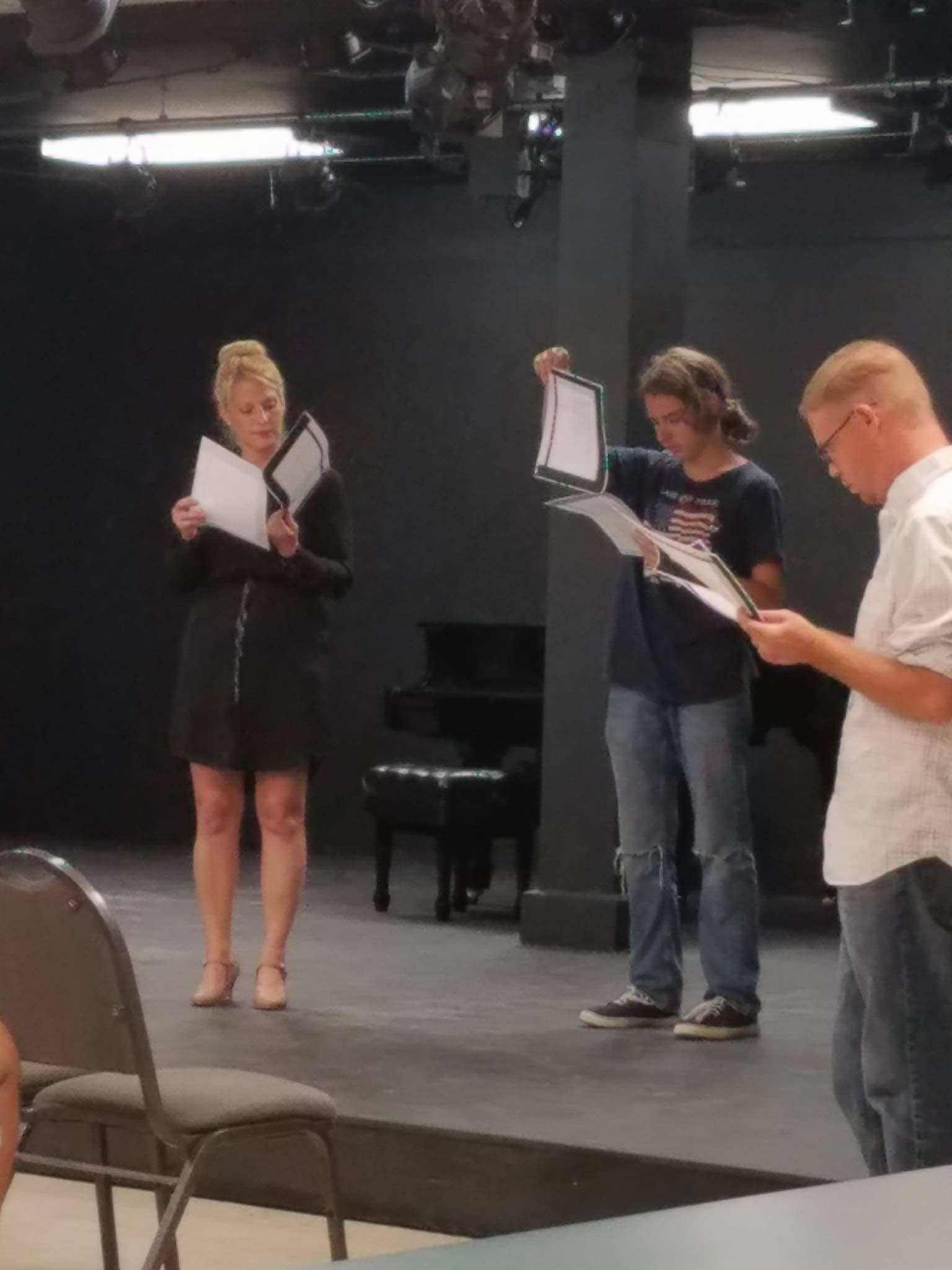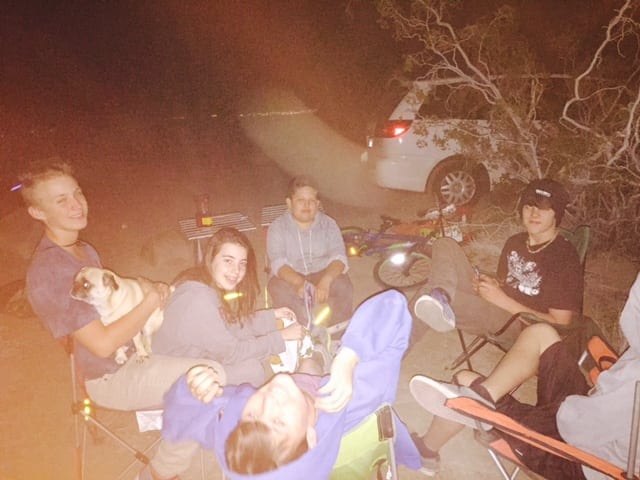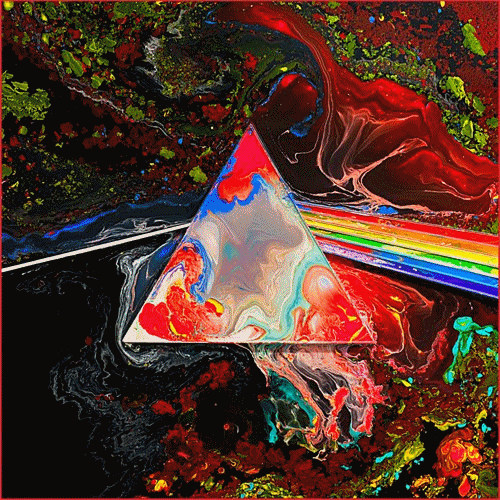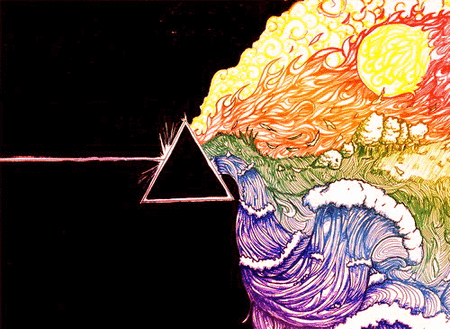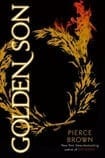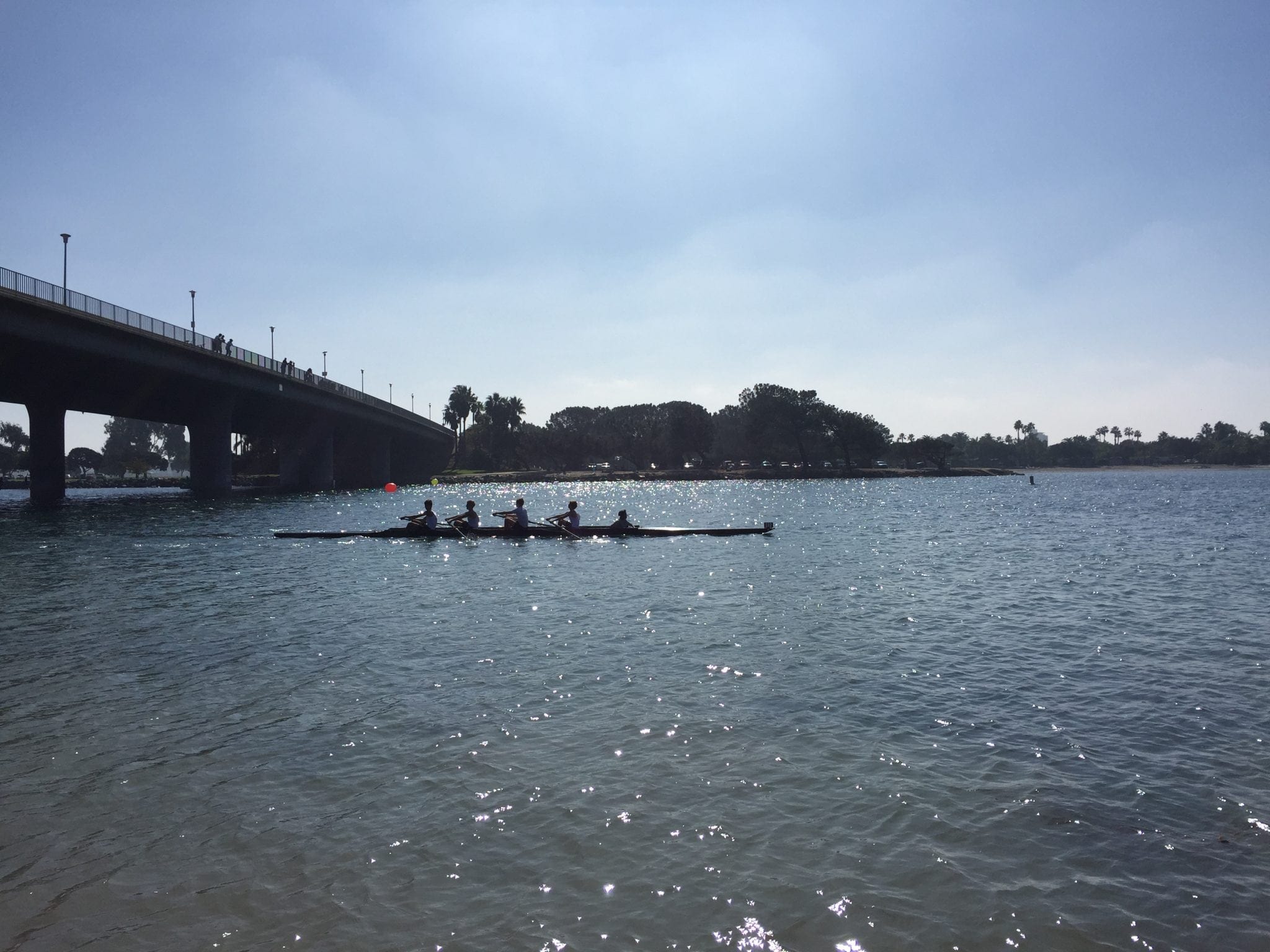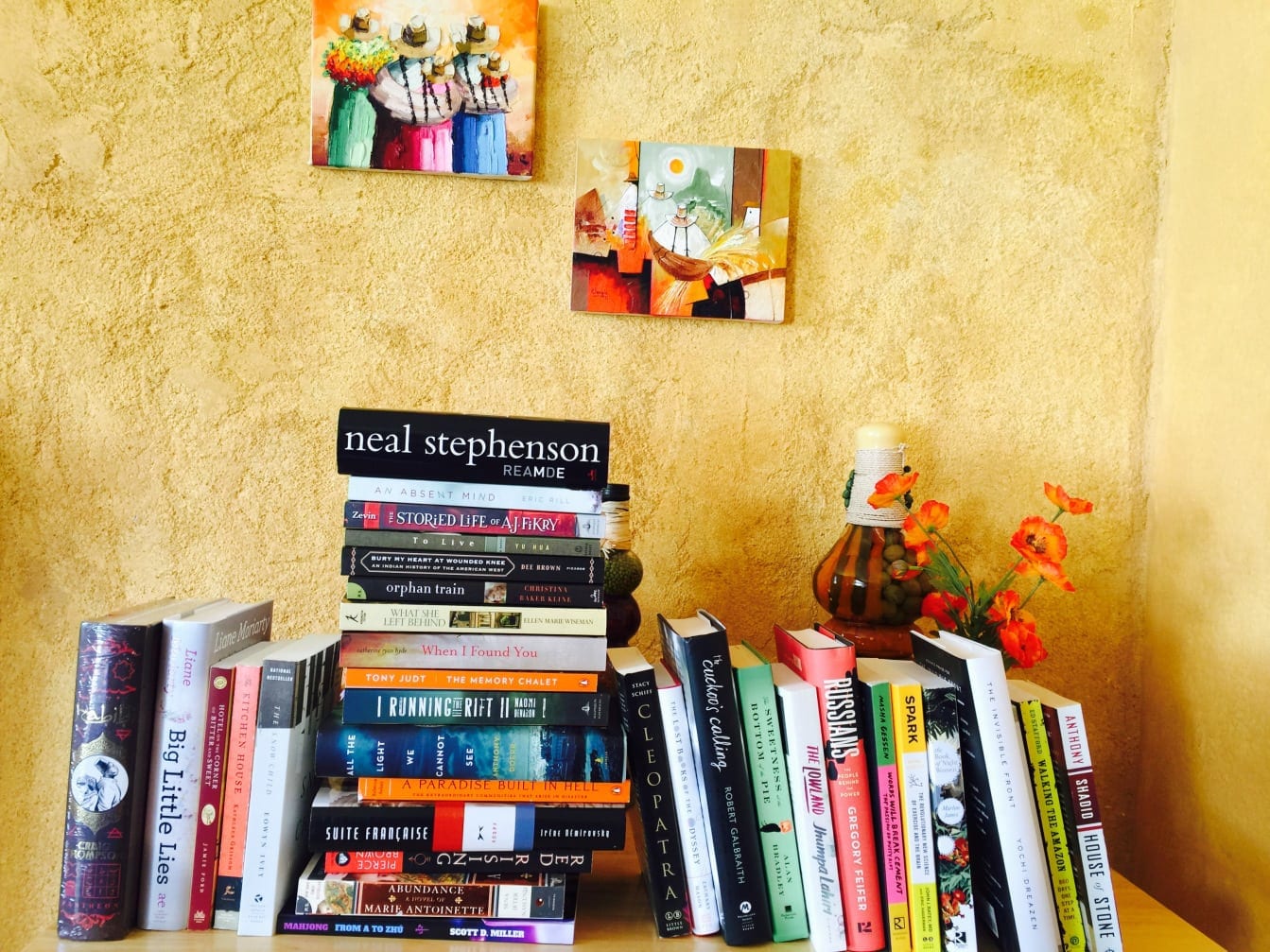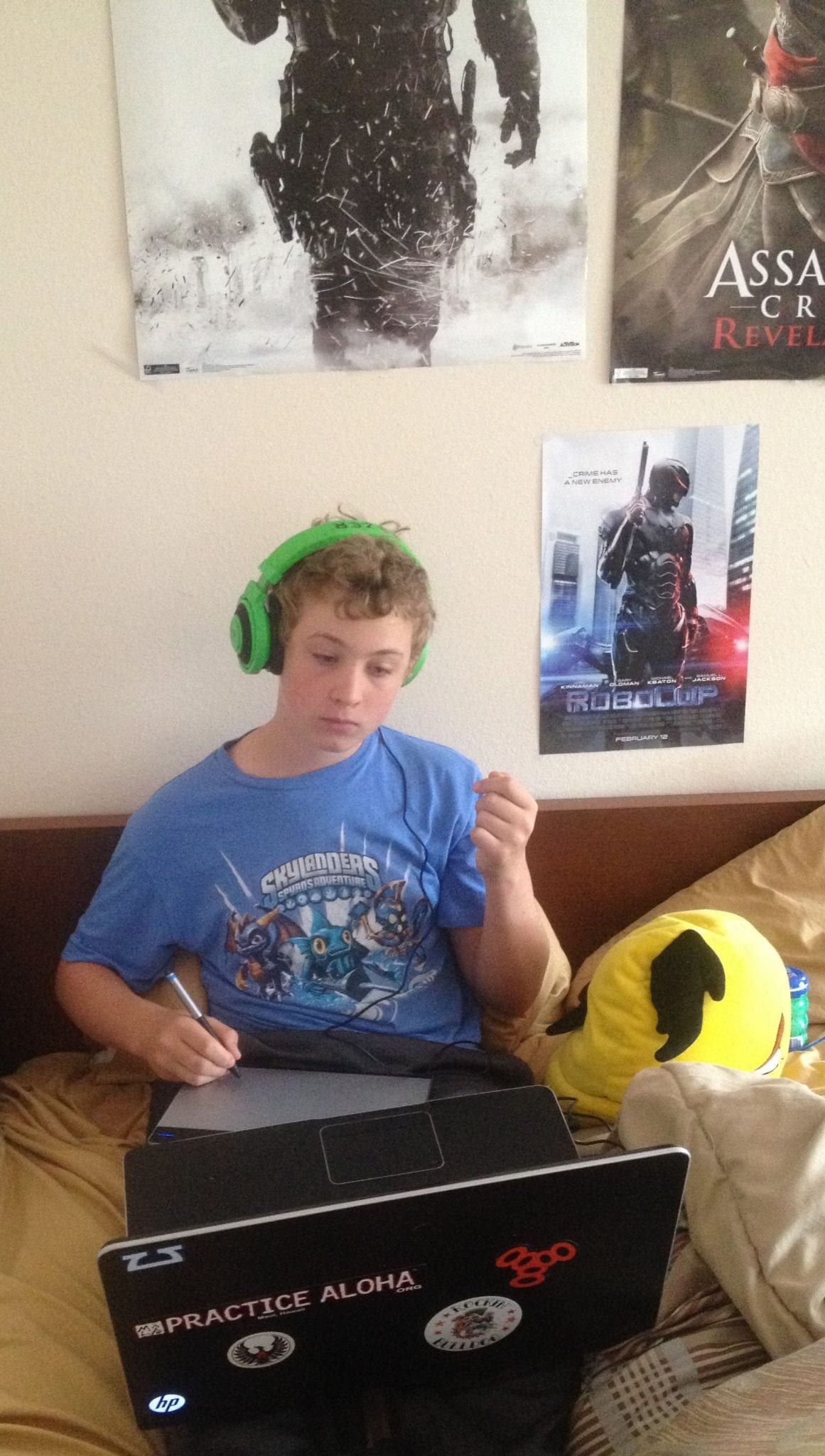-
Use the labs and readings in Bio 2 and pair them with Khan Academy High School Biology.
-
Lab reports mandatory
-
Use Show What You Know problem sets as quizzes, and have students take tests that you grade
-
Document experiments – you can use photos for this and lab reports; I think it’s a good idea to make students accountable for this documentation. Good documentation is a part of good science. By being responsible for documenting their work, students, in a practical way, come to understand that.
-
Practice science: This has a specific meaning in science education. It refers to people being able to use what they know to design an experiment where they “practice” science that follows the scientific method. I have included links to articles I’ve written to use as projects where students can practice the science they are learning.Science Fair: you can do this even if it’s just you and your child. Choose 1 question and have him or her design an experiment based on that question.
-
Electron transport chain during photosynthesis – You should expect students either in writing, as an additional question to a test, or through discussion to explain this concept. It is important for high school students to understand that the electron transport chain, at its most basic, is the method cells use to generate energy. It is through something as simple as a cascading release of electrons going from molecule to molecule that organisms get the energy to do everything associated with life.
-
For each unit choose a focus in addition to the material kids are covering. Make it something meaningful for them and relevant from the standpoint of current science. This is something that kids will do on their own. You can choose what your child reads. (I recommend at least giving them one starting article). You need to read the article too, or at least be familiar with the topic, and then discuss it. I am giving suggestions below. If your child has a different interest, they should learn about that topic.
-
Unit 1: study viruses – AIDS virus, Zika virus, Ebola virus – all of these are great choices. If you have multiple students, consider letting each student choose a virus they read about, and then discuss. I like to tell Sean teach me about it. You learn so much more when you are trying to educate someone on a topic.
-
Unit 2: choose something related to cells and chemistry – I have included a possible extracurricular study for this looking at lead toxicity. https://www.facebook.com/notes/967260989961360/Lead%20and%20the%20harm%20it%20causes%20organisms/1112073012146823/
-
Unit 3: if you can afford it, have your child send his or her DNA to be analyzed. Use the analysis to study this topic. If you can’t, then a good choice would be to learn more about Neanderthals and the current understanding about the differences in their chromosomes compared to modern humans. Or you could study this very interesting topic, and have kids watch lesson 1: part 1 through part 5, https://www.youtube.com/playlist?list=PLfc2WtGuVPdmhYaQjd449k-YeY71fiaFp
-
Unit 4: during this, the longest unit of the book, kids will work on the practice of science by designing two of their own experiments. I would spend the time focusing on designing experiments and how to apply the specifics of the scientific method to their experiments. This is a good lead-in because in Unit 5 kids are first introduced to the formal definition of the scientific theory. Without a clear understanding of how science is practiced and the specific parts that go into the practice of science, the specific application of the word theory in science is often confused with its common use outside of science. A very interesting, to me, LOL but hard, activity that I wrote can be found at the link below. If you have a math loving child he or she might love this. It’s a great demonstration too. Contact me at blair@seahomeschoolers.com if you need someone to walk you through it. Why Are We All so Different: High School Genetics Activity
-
Unit 5: Your Inner Fish from HHMI – watch it and discuss it. If your child is into videography, a great project would be to have them make their own video about evolution.
-
Unit 6: have students choose an environmental topic or environmentalist and learn about that, him, or her. It can be one of the environmentalists from the famous science series in this Unit. They are all really cool people.
-
Unit 7: Because so many high schools don’t even teach this, it would be easy to argue that this already is at a high school level. The main difference between the high school level courses I have seen, those that do teach this, in the way this is taught is that the cladogram’s use biochemical and genetic markers instead of the more apparent physiological markers I chose. If you have a student who is very strong in science, I recommend looking up cladograms that use those, otherwise I would stick with the cladograms as written. The unfamiliar chemical terminology can make the cladograms seem harder than they are, and many kids find them challenging as written.
-
There is a research report that students work on in Unit 7. This paper is based on one I wrote in the first evolutionary biology class I took when I was in college. High school students should be expected to write this report with more emphasis on the evolutionary history of the organism.
A Handcrafted Education The High School Years
A Handcrafted Education: The High School Years
Oh No! The dreaded “H” word (and I don’t mean handcrafted)! If there is one thing that causes homeschooling parents to panic it is the thought of homeschooling through high school. What if we get it wrong? What if somehow we fail our children, and they cannot … cannot … cannot … wait, cannot what exactly? How is it that we as homeschoolers fall into this trap so common to traditional school parents?!? Why I sometimes wonder, even though I do it myself, did we all drink the Kool-Aid and continue to perpetuate the myth that there is one known path that will guarantee our children’s ability to be successful as adults. We only have to look around us to know that’s not true. We all know people who are very happy and well-adjusted who never spent one day in college. We all know people who are desperately unhappy who have advanced college degrees.
Don’t get me wrong. I value education a lot actually. My husband would tell you I value it more than most people. Learning and working with knowledge are two things that I really enjoy, and I want to pass that passion along to my child. My point is that there is no one path, because every child is an individual; every path is going to be individual. As you will learn, if you follow this blog, my son is on a college-bound path. But my heart would not be broken if he didn’t go to college at all, or waited a few years and went. It’s his life, not mine. I’ll start living his life when I get mine all figured out.
With this in mind, it might seem pointless for me to blog about our journey. Here I am though, blogging about it 🙂
This is the first of a four year series of posts about our handcrafted high school education. It is not meant as a template, and I’m not advocating a path or series of programs, but I thought people might like to see what our journey looks like. I intend to blog over four years, but I can’t make any promises about the frequency of the blog posts. Handcrafting a high school education is time-consuming, and I have other writing obligations. In fact, right now, Astronomy and Earth Science 2 (as I now call the second book in the middle school series) is not being written because I am writing this blog post instead.
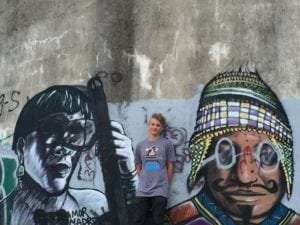
Before I Begin
Most people reading this blog only know me through my writing. I want to make sure that you know I understand each path really is uniquely different. As an example, I am going to give you the 30 second rundown of my own journey. I was a good student and my parents expected me to go to college. In my junior year of high school my mother passed away, and I didn’t cope with it well. I started under-performing in school and skipping school. My father was not a lot of help dealing with this emotional time. Now as an adult I understand he was going through his own stuff, obviously. But it wasn’t so obvious then. I did not graduate from high school. I am not a high school graduate. I never went back to pick up that degree. I supported myself as a waitress and bartender in the intervening years, until I was 27, when I started at community college. In California, you don’t need a high school degree to get into community college. You need to take a series of placement tests. I spent two years at community college and then transferred to UCSD. I graduated Magna Cum Laude from UCSD with a bachelor’s degree in biology and a bachelor’s in chemistry after three years and a quarter there. I was accepted to graduate school at UCSD with the intention of getting a PhD in environmental chemistry through the physical chemistry department. I did not like the nuts and bolts of daily lab work, but I did love teaching chemistry. (Graduate students in the chemistry department at UCSD are required to do some teaching.) I let go of my dreams of a PhD, graduated with a Masters, and got a job teaching at community college. I loved teaching chemistry and biology at community college! If you ever want to know the story in more detail, stop by when you’re in town. I will make a pot of tea or pour a glass of wine and we can talk about it. I am the social type, and trust me when I tell you that I want to hear your story too!
How We Came to Be Homeschooling High School
We actually debated about whether to homeschool through high school or not. We visited two very nice schools in the fall of 2014. If you’re wondering why we visited schools, one of the schools was a Creative and Performing Arts School in San Diego that, although public, has kids go through an application process. They do not accept all the kids who apply. Sean was thinking of applying to their creative writing program.
I believe there are pluses and minuses to every choice. So, after visiting those schools, we sat down and made a list of the pluses and minuses for each of those schools and continuing homeschooling for high school. My husband, who is the one member of our family not intimately involved in homeschooling, came out early in favor of continuing homeschooling. He felt strongly that Sean’s education through homeschooling was superior. I don’t mean superlative. By this, I don’t mean he is getting an education in every subject that would rival any school. My husband’s reasoning was that the unique handcrafted education Sean is getting is special in a way no school could match for just one student.
I gave us until November 1, 2014 to decide. All three of us decided to continue homeschooling through high school. It turned out to be a very easy decision with all of us agreeing completely with no doubt about it. We are four months into it, and we don’t regret the decision at all. I feel done right a homeschooled high school education can be superior because I believe in handcrafting an education. It is a lot of work though… Really a LOT of work!
A Few Things Up Front
- I am into a breadth of knowledge over a wide range of topics and issues. As my child’s primary teacher, a broad knowledge base is where we start our academic planning. My ultimate purpose and goal for my child’s education is that, at the end of it, he is well-educated. The caveat is my son and I are defining what well-educated means for him. The recipe for Sean’s handcrafted education is being designed for his strengths, weaknesses, and passions, as well as the passions and interests of his family.
- I look at an education as the gateway to options. The more options the better. Even when Sean is passionately focused on an area, I make sure there is time for other areas. Maybe not that particular day or week, but we do get to a range of subjects in a meaningful way over the course of a school year. I want him to have as many options as possible later in life. After all, we do spend most of our lives as adults. With homeschooling I am trying to find a balance between making sure his childhood gives him plenty of time and space to know the joys of childhood, while at the same time, making sure he has lots of options when he enters adulthood and beyond.
- I am not trying to recreate a public school education, but I do use the bits from public school that work for us. In fact, I incorporate every teaching methodology in some form into how we approach our academics. Each methodology has strengths and weaknesses. What they are depends on the student and the subject matter.
- Some of the issues I write about will relate specifically to homeschooling in California, my home state. We use a private school affidavit. We do not use a charter school or receive any support from our state. In California, if you homeschool through a state run charter school they will help pay for your child’s educational expenses. I do not use a charter school because:
- We did not start homeschooling in California, we started in Nevada, and I got used to doing my own thing as is done in Nevada.
- When we started homeschooling all the materials available were religious oriented or public school materials. I only want religion taught to my son as a part of philosophy class, history class, or in church. I am not a fan of most public school texts. I won’t go into it in detail other than to say I do not find most of them accessible for students or their teachers unless the teacher is an expert in that subject. Because I wasn’t interested in getting materials from them, there didn’t seem a compelling reason to participate in them. I will go into the materials we use for each course as I write about them.
- As California did begin to have more and more homeschool charter schools, they did not at first hire people with homeschooling experience to work for them. This bothered me because it felt disingenuous that they were really trying to help homeschoolers negotiate the ins and outs of homeschooling. I felt that without hiring people who understood the specific issues homeschoolers face, these charters could not give new homeschoolers the support they needed. Even though we were not new to homeschooling this bugged me too much to want to participate in the system. I have been told this reason makes me sound a bit kooky, but this is my blog and my particular kook will shine through every once in a while. 😉
- In California, the charters want students to take standardized tests. I am not a big fan of these tests. I watched a couple of homeschooling friends whose kids were in charters put everything aside the month before the test to teach to the test! It was not until last year that Sean started working on test taking skills as a lead up to his taking the SAT/ACT.
- But the main reason: I love doing my own thing. One of the mottos I live my life by is that, “Time is the money of life.” If I am going to put all this time, the money of my life, into educating my child, I want to get as much joy as possible out of it. I am a very creative person, and I get joy out of creating unique things.
What you will read about next are the specifics of how I am handcrafting an education for my son. It is a recipe that is working very well for us. If you have any thoughts or questions just ask. Share the love and trust me, I WANT TO hear from you! I loved teaching college in part because I love discussing academic issues with other adults!
Check out our post on a fun game in honor of banned book week here.
Project Based Learning: through the Lens of Politics and Activism
Project Based Learning is a teaching method in which students gain knowledge and skills by working for an extended period of time to investigate and respond to an engaging and complex question, problem, or challenge. http://bie.org/about/what_pbl
This year we used Project Based Learning, PBL, for one of the most dynamic and exciting years of all the 10 years we have been homeschooling. Several times this year, my son told me he had never been so proud of himself. Our journey through homeschooling has had highs and lows. What happened this year to make it such a high?
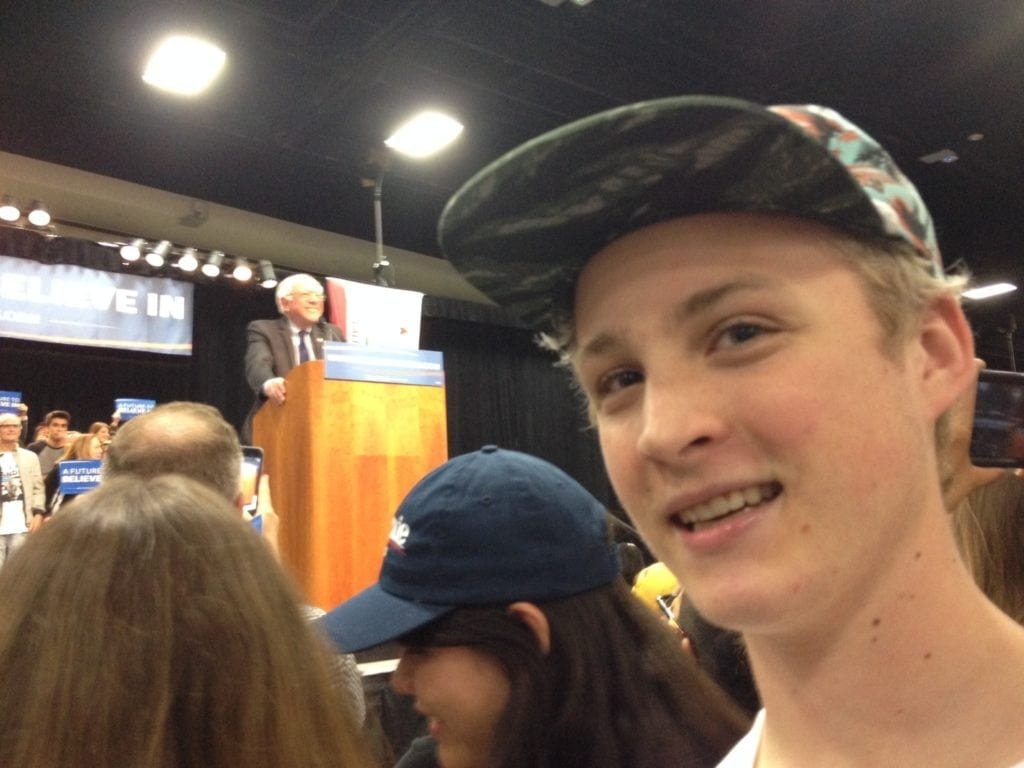
What happened was we embarked on an academic project that was big, powerful, and meaningful. I keep saying we, because even though we didn’t always work together, this project required a lot of hard work, brainstorming, and collaboration from both my son and me. While it was one of the more independent things my son has done academically, there were components directed completely by me. The most surprising part to all of this is how easy the academic planning was. There have been many instances this year when the line, “Yet knowing how way leads on to way,” from Robert Frost’s poem The Road Not Taken came to mind.
Way led on to way, led on to way, until the project looked radically different from what I envisioned two years ago, when I started planning the project.
Sean’s project focused on politics and activism in the United States. This was an exciting area to focus on this year, but it doesn’t matter what area the project focuses on if you follow some key steps. I know of many people who use PBL that focuses on science, engineering, robotics, computer programming, and the arts including writing.
Step 1: Think of a project. This important first step depends on the student and the family. The project works best if it is a collaboration. I came up with the overall focus for the project and the plan for the academic subjects we incorporated into it. Sean chose the candidates, issues, marches, and causes he focused on.
- Make it meaningful: Our family cares about politics. It’s only natural our son shares this value. This shared value helped make this project meaningful. My son’s feeling of pride in himself most likely stemmed from him working in an area that our family feels is important in a larger context outside of “just school”.
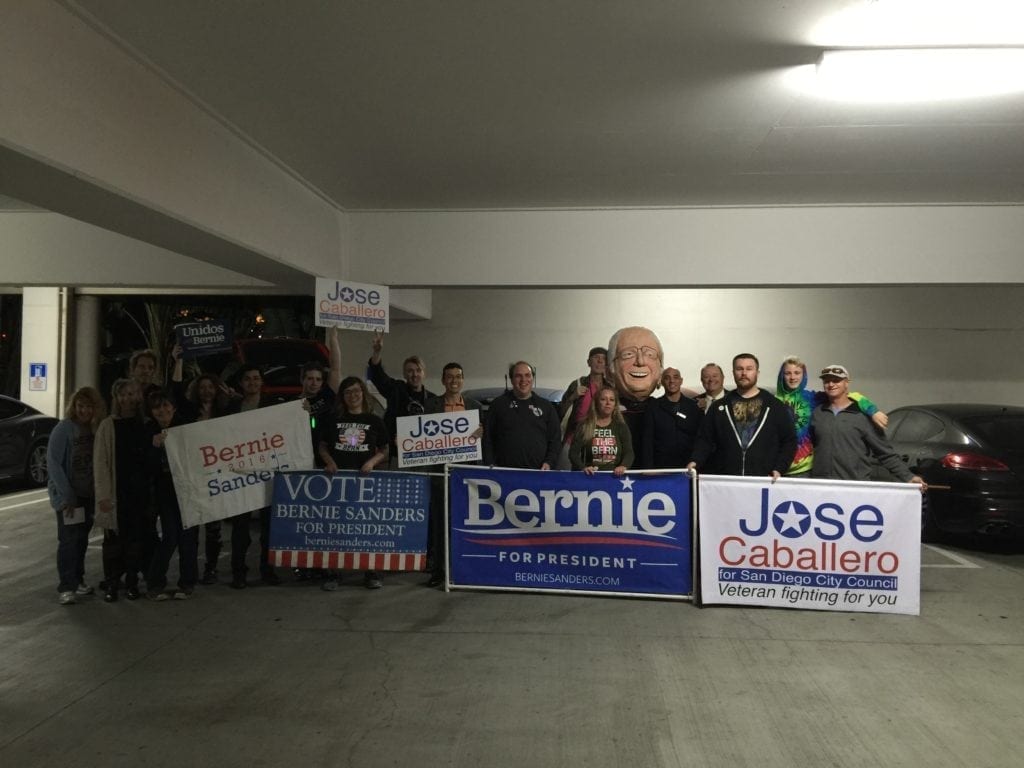
- Think big: As a part of this project, Sean was expected to volunteer. I wasn’t sure how welcoming people would be about Sean volunteering. We learned age isn’t as important to being welcomed as the level of engagement; this is another reason to make it meaningful.
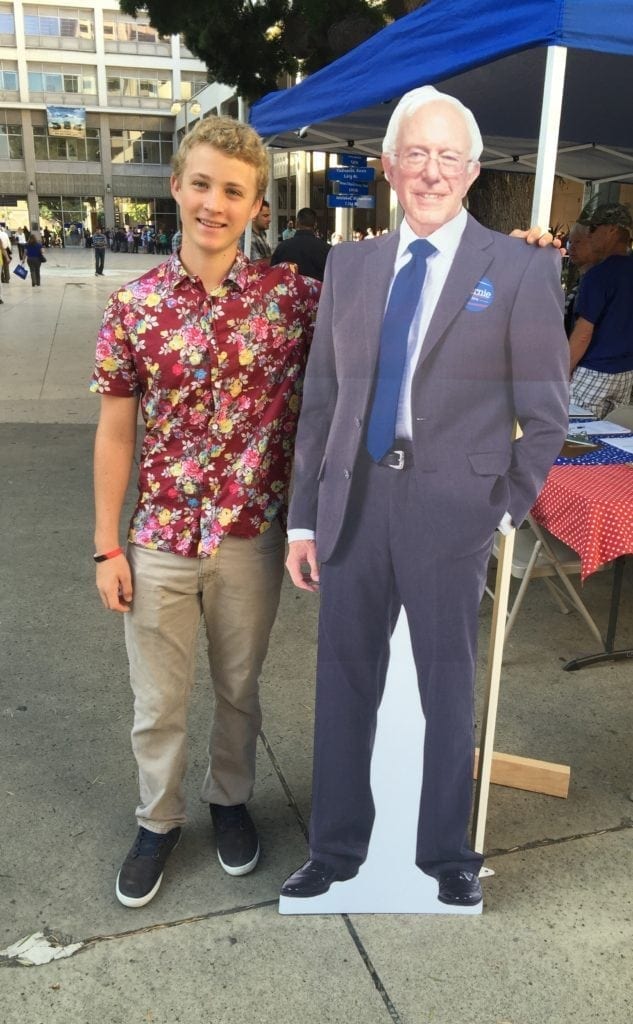
- Figure out a way to roll other academics disciplines into the project: Language arts, history, computer programming, documentary film making, and speech were incorporated into the project. Sean completed a focused course of study, for example, on writing an expository essay during the first 8 weeks of 10th grade. To have the amount of time necessary to devote to the project it is essential that many core academic disciplines are incorporated into it. One of the most profound benefits of using PBL comes from the application of skills that are often learned in an abstract setting. In the case of a project like Sean’s it became clear to him why nonfiction writing is an important endeavor to work on.
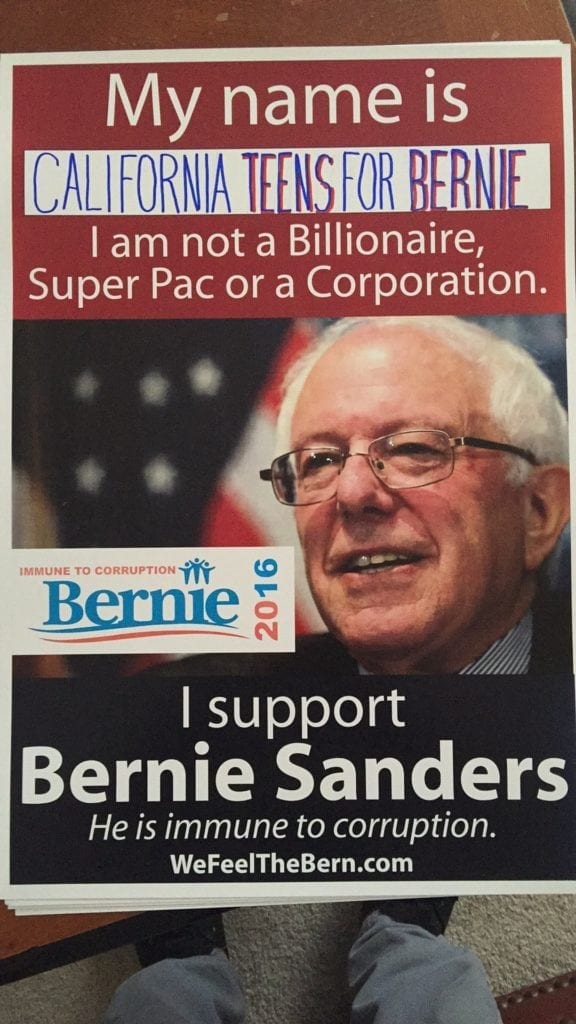
Step 2: Getting Started
- With PBL there are benefits to focusing in the beginning on the core academic skills that will be incorporated into the project. This maximizes the amount of time spent working on these skills. Once the project gets started, it can be hard to find a cohesive stretch of time.
- Blend independent work with collaboration: Sean was 15 when this project started. He didn’t always see the big picture. I often had better insight about the direction the project should head and why. In order for him to stay engaged and committed, I had to find a balance where his ownership over the project was coupled with thoughtful and low-key direction from me.
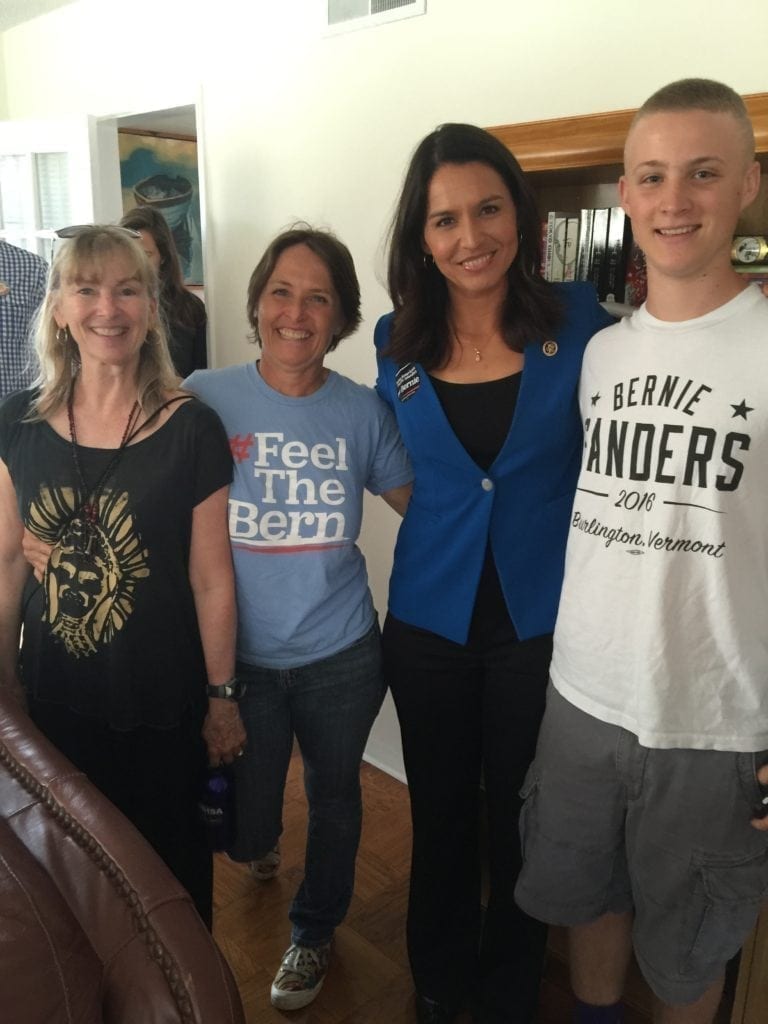
Step 3: The Middle
- Allow the project to take over your life. An academic project your child becomes immersed in is a special chapter in his or her journey through learning. It is rare for a young person to experience the joy of taking academic skills they have spent a large amount of their life learning and applying them to a real-world situation in a meaningful way.
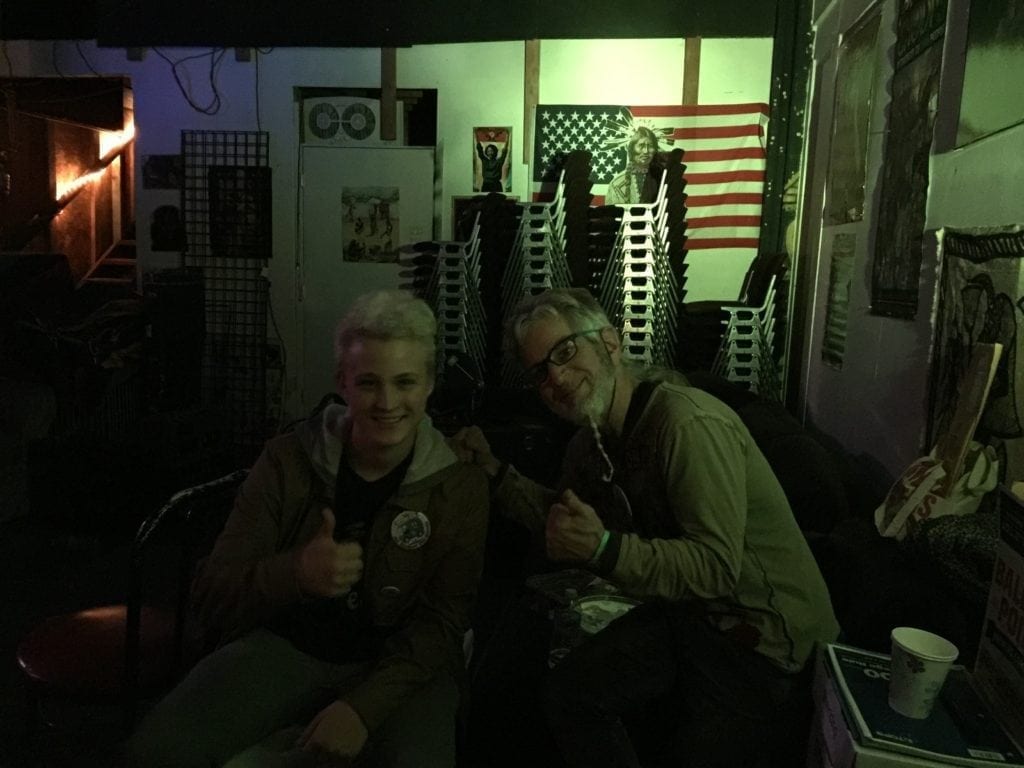
- Do not be afraid to drop everything for an opportunity. These opportunities are another reason to front-load academic skills.
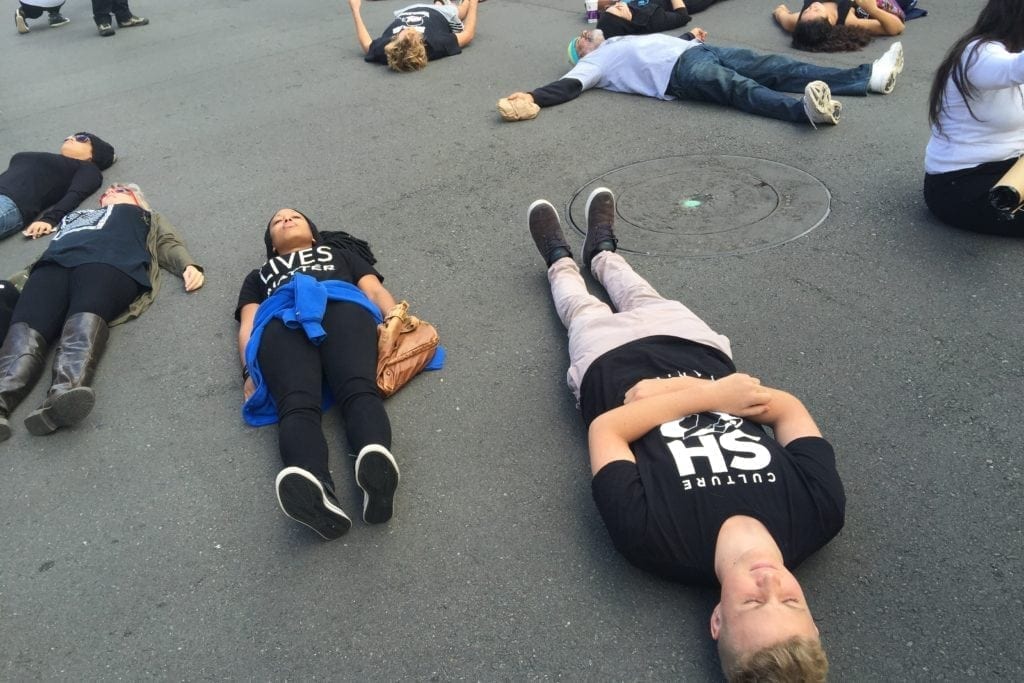
“Mom, can we go to a Black Lives Matter march tomorrow?”
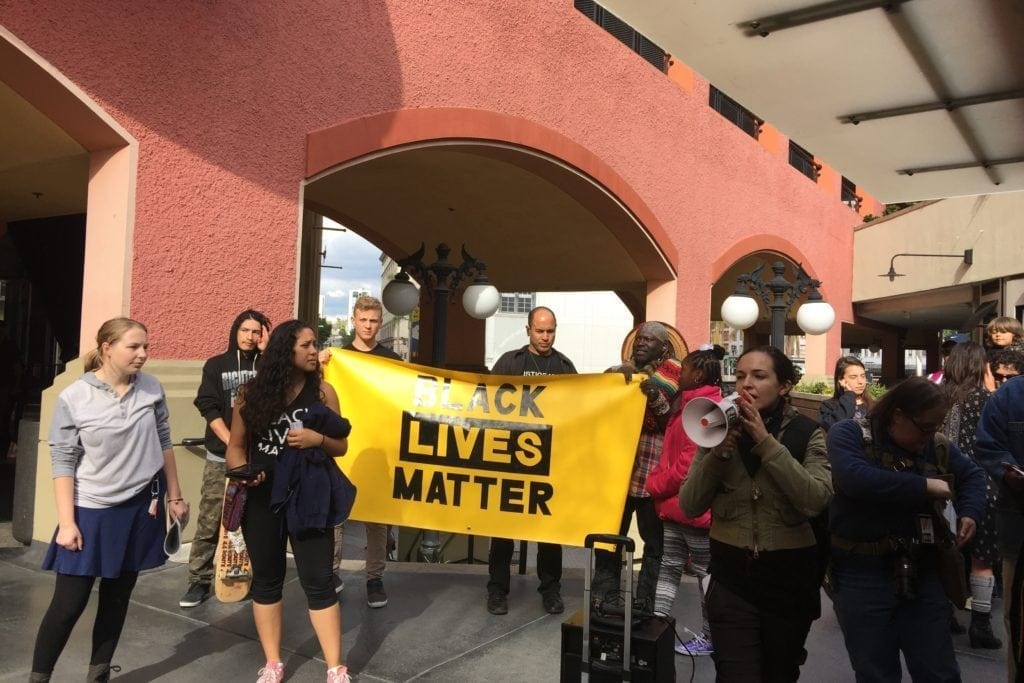
- Document everything and collect contacts: A documented portfolio from the project is important for your child to have when applying to college, a job, or an internship. Collecting the names, addresses, and emails of people your child works with is an important part of the documentation process.
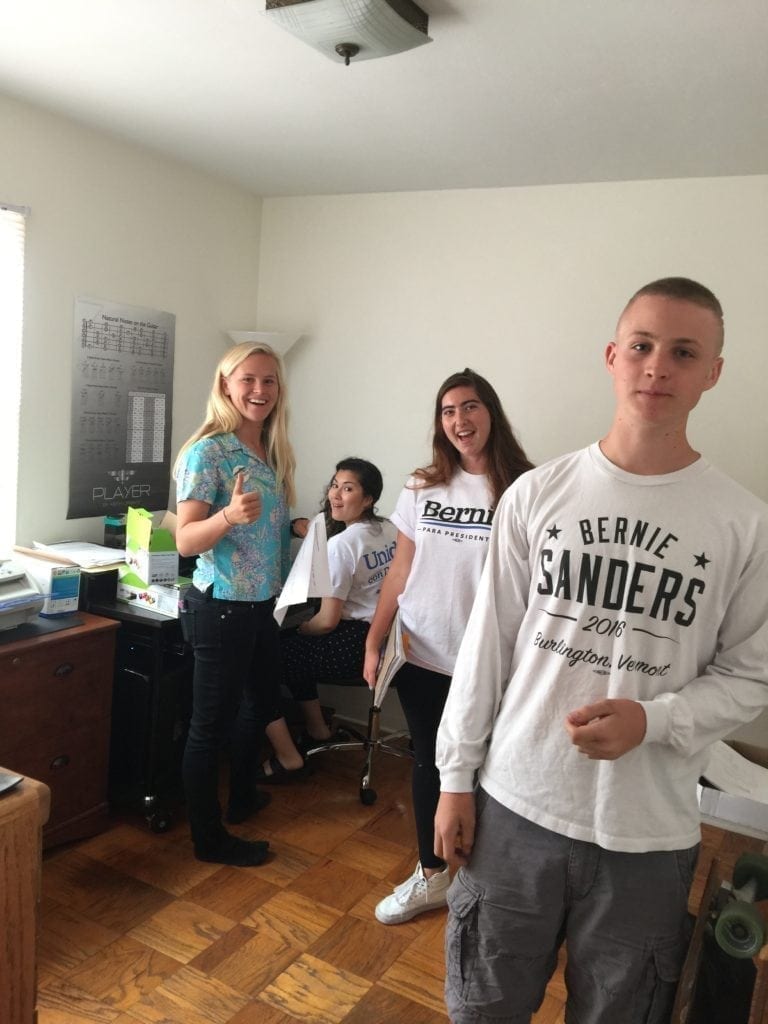
- Tweak constantly: The more organic and free-flowing the project is, while still working on the application of skills, the bigger the project can become.
- Seemingly ancillary endeavors can be incorporated into the project as long as your reasoning is well documented. For example, we started the year with a volunteer trip to the Lakota reservation at Pine Ridge. I consider this a part of Sean’s project. I think there are many important lessons to be learned for today and in the past looking at how US government policies have impacted Native Americans. With this explanation it becomes clear how this volunteer trip adds an important element to the entire project.
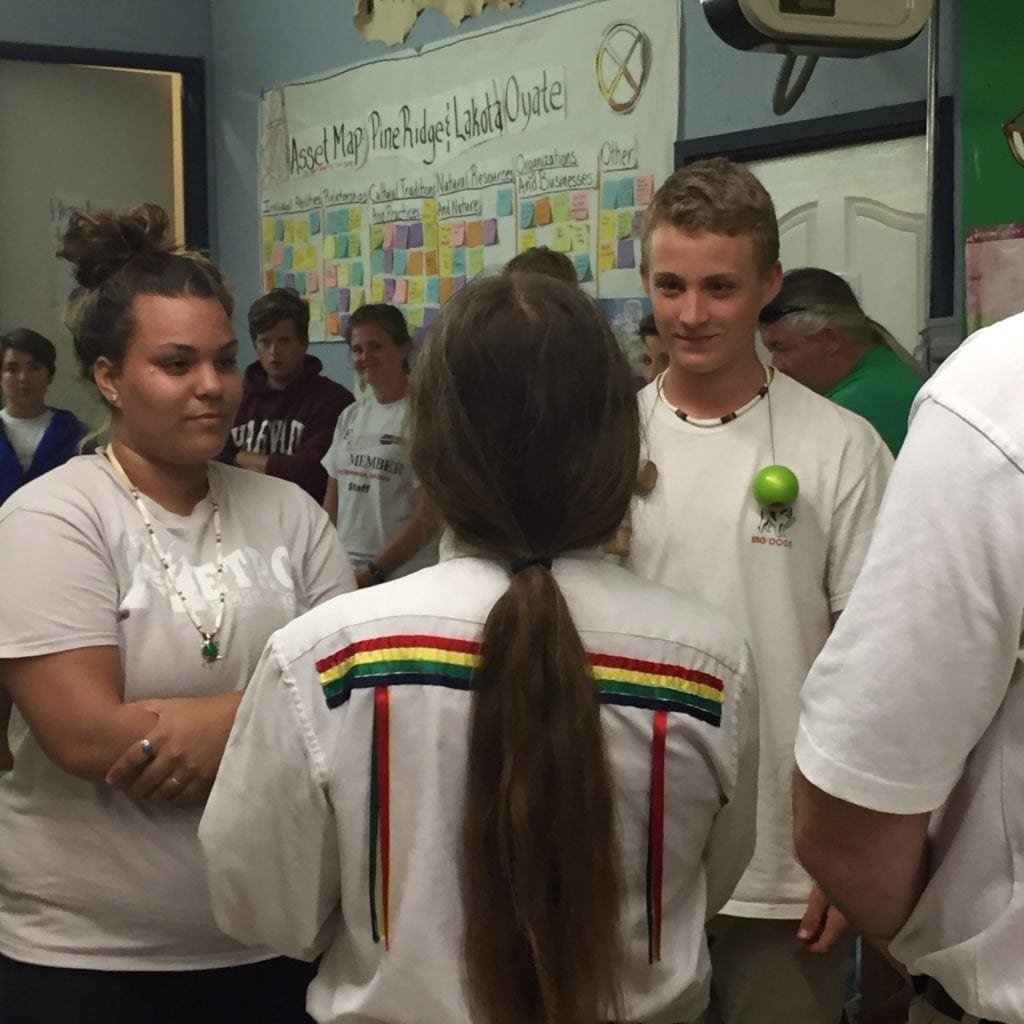
- Some parts of the project are more fun than others. There are a lot of important lessons to having your child work on both the super fun part and the less than exciting part.
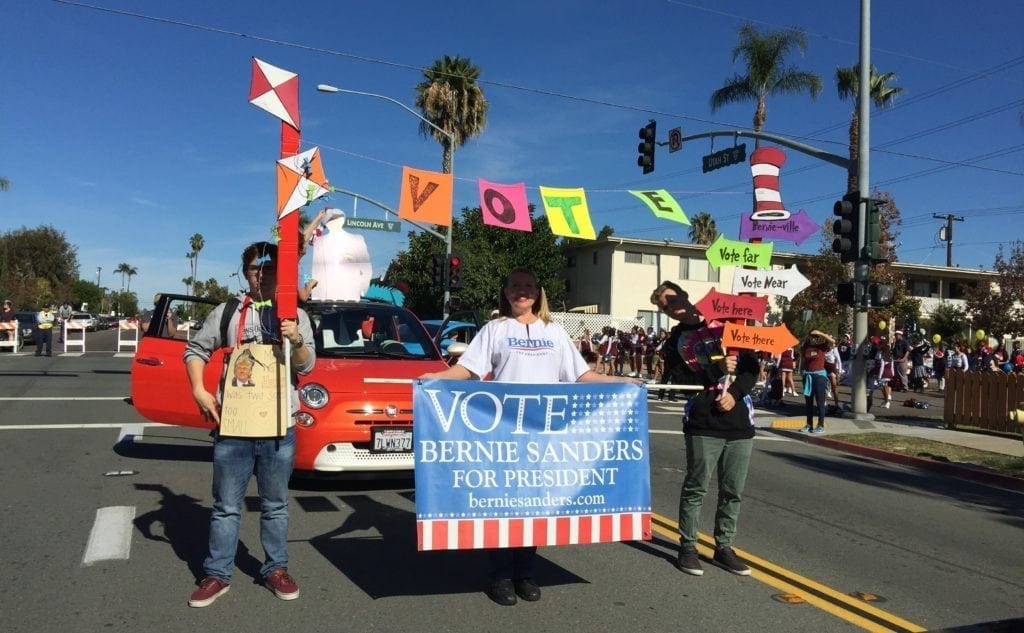
Step 4: There really is no end
- Do not put an artificial timeline on the project. If this project is important enough to devote significant time to, it is important to see it through to the end.
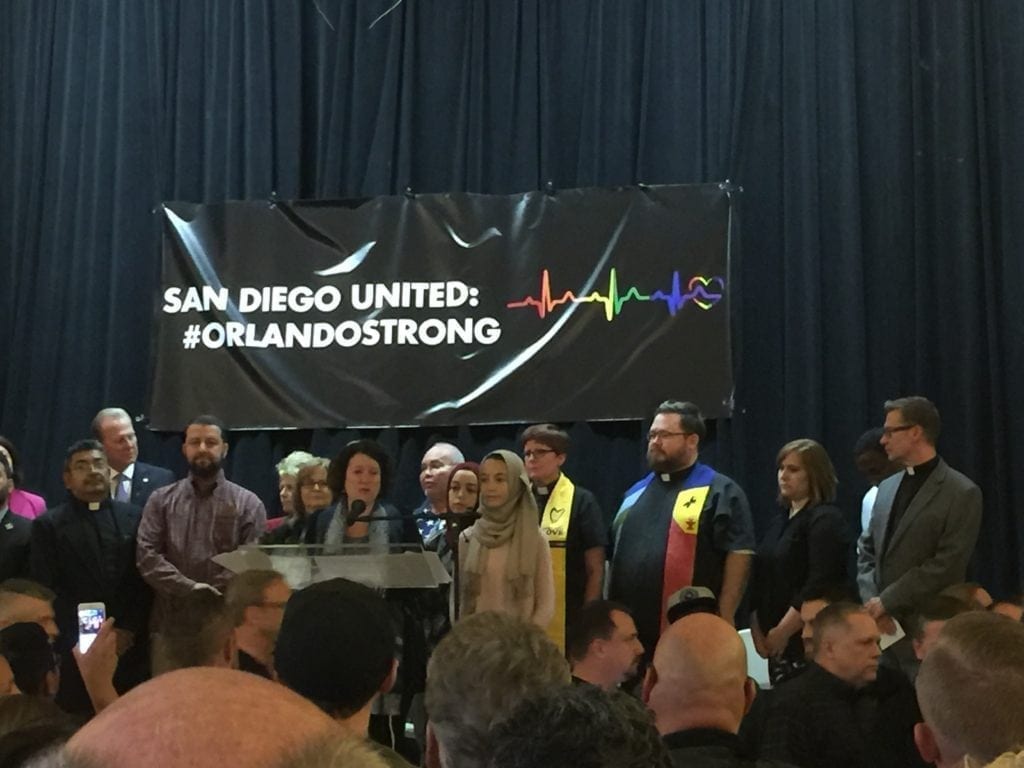

- This project opened your child’s world and mind, continue to make connections. Your child, and you, devoted a considerable amount of time becoming an “expert’ in the area surrounding their project, refresh those skills and make connections going forward.
“It’s what you learn after you know it all that counts.” John Wooden
Blair Lee loves to read, cook, laugh, hang out with friends, and homeschool. In 2015, she co-founded Secular, Eclectic, Academic Homeschoolers SEA Homeschoolers on Facebook. Blair writes for the Real Science Odyssey Series, RSO, as well as blogs and magazines. Blair speaks about eclectic, academic homeschooling, science, and travel at homeschool conventions. You can follow her at blairleeblog, Twitter, and Facebook.
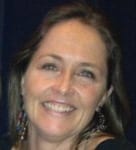
Handcrafting High School: Year 2, Custer State Park
Handcrafting High School: Year 2, Custer State Park
I think the year you study geology and environmental science, you should spend time outside looking at the subject of your studies, so we did. I did not keep a daily journal, because I had writer’s block. Something I had never experienced before. It gave me insight into what happens for kids who have good ideas but can’t get them onto a page. My writer’s block made me feel like my brain was constipated. I had so many ideas running around in my head I had trouble getting anything out at all. It made me scattered and feel a little crazy. By the time I would get to my computer to write something down, I would forget it in the jumbled, spaghetti noodle, chaotic manner that sometimes has plagued Sean’s writing. This led to a light bulb as I realized what part of Sean’s problem was. The other problem with writing all this down was that National and State Parks, for the most part, had terrible cell service and internet.
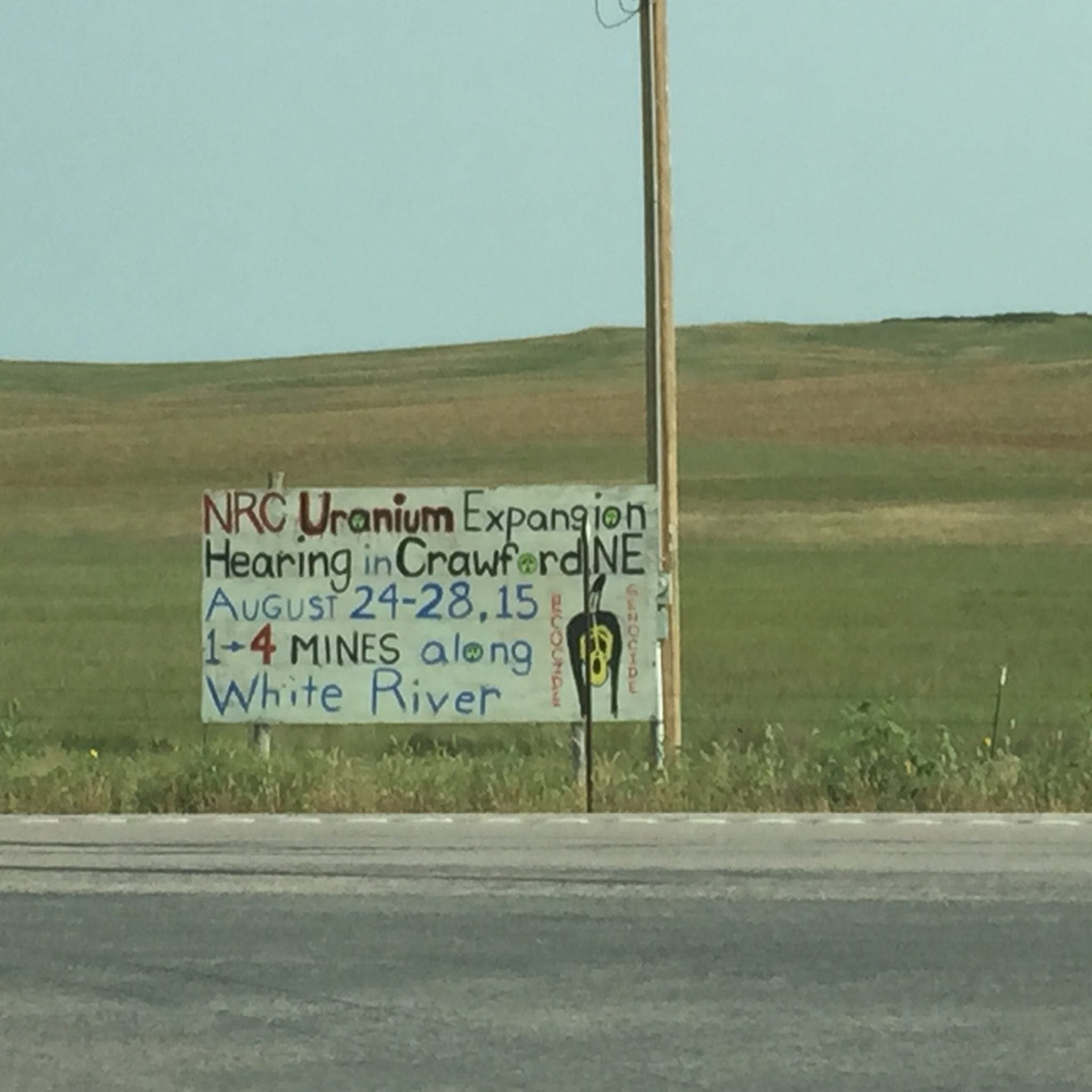
86 miles from Pine Ridge nestled in the heart of the Black Hills sits the absolutely beautiful state park, Custer State Park. Both the name of the park and the beauty of it are hard to stomach, especially when you realize the Supreme Court has agreed the Black Hills, including the land this park is on, was illegally taken from the Sioux, but they cannot have it back. Talk about historical trauma! The two photos are symbolic of this. The sign is in protest of the uranium mine built just outside the reservation that is polluting their water. In the park is the residence where Calvin Coolidge spent 3 months during one of the summers he was President, Summer White House in South Dakota. The water at it is not being polluted with radioactive waste.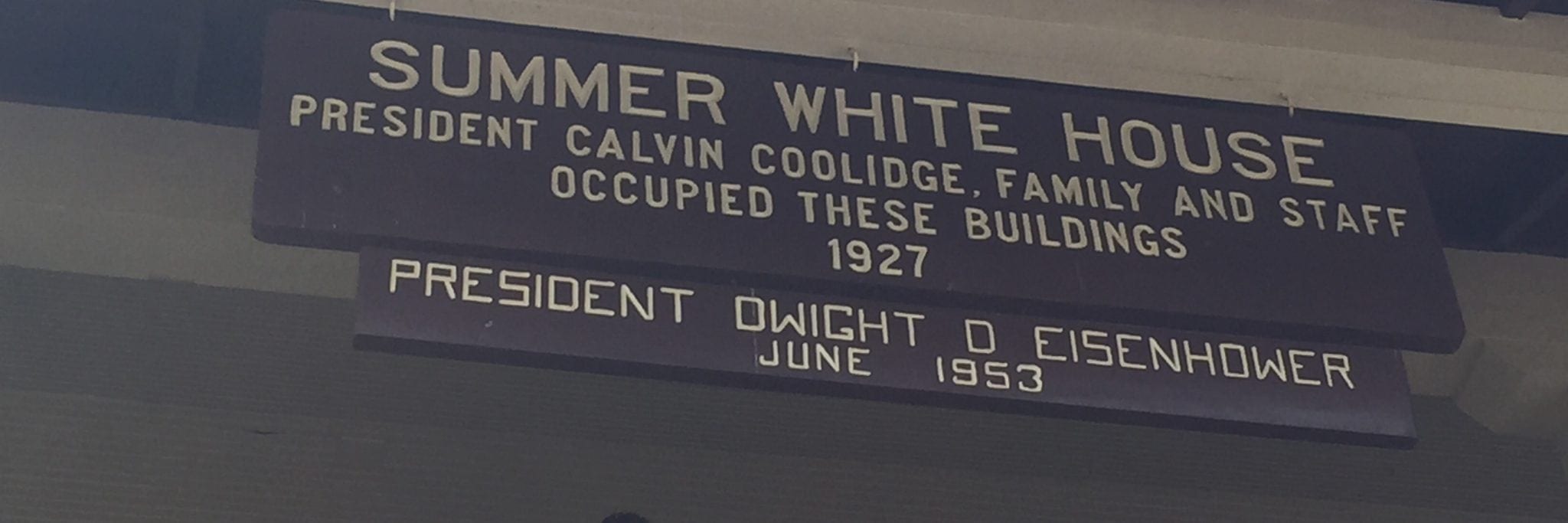
8/21-22: Custer, SD
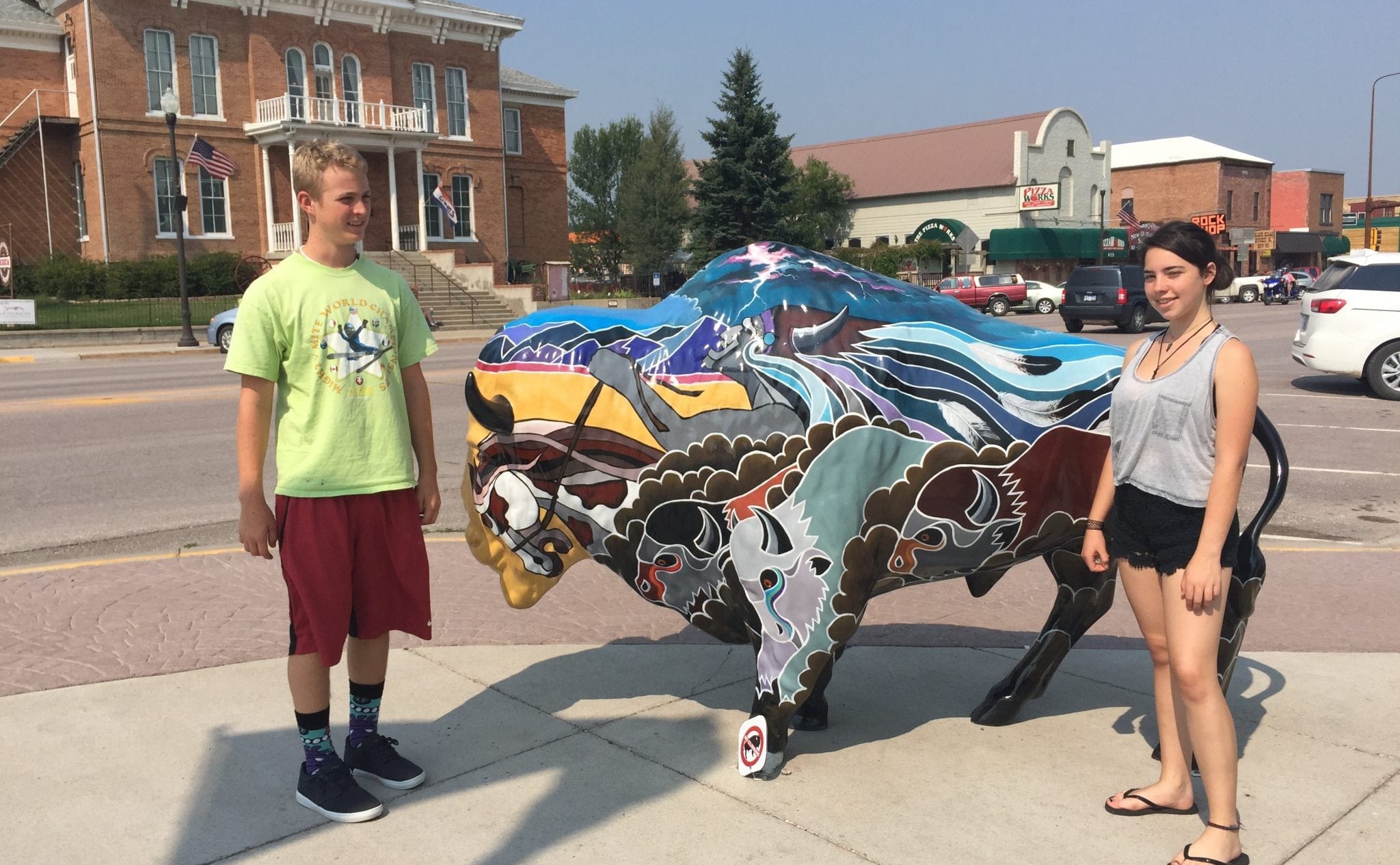 We went into the town of Custer, South Dakota to wash clothes, do a little shopping, and stock up on groceries. The people were lovely. We wondered though, how it would be if Sean and Sophia looked like a Native Americans. We had read about and heard so many stories about racist actions toward the Sioux in South Dakota, and they made us recognize and acknowledge the white privilege conferred on us. The kids began to think of stereotyping as a dangerous thing to do, even though Sean told us everybody does it, and you have to think about it not to do it.
We went into the town of Custer, South Dakota to wash clothes, do a little shopping, and stock up on groceries. The people were lovely. We wondered though, how it would be if Sean and Sophia looked like a Native Americans. We had read about and heard so many stories about racist actions toward the Sioux in South Dakota, and they made us recognize and acknowledge the white privilege conferred on us. The kids began to think of stereotyping as a dangerous thing to do, even though Sean told us everybody does it, and you have to think about it not to do it.
This Park is has great wildlife viewing in it.
The next day we drove around the wildlife loop and to an area just outside the park where someone told me about a large prairie dog town.
Just outside Custer State Park is Wind Cave National Park. Wind Cave is huge. In fact it is so huge that wind occurs at its natural opening. Whether the wind blows into or out of this opening depends on the atmospheric pressure outside of the cave. When the pressure is high, wind blows into the cave, and when it is low, it blows out of the cave. Wind Cave has over 100 miles of passageways. As you can see from the yellow tape our guide is holding, the pressure on this day was higher outside the cave than inside it, which is why the yellow tape is being sucked into the opening.
Native Americans consider(ed) Wind Cave a sacred place.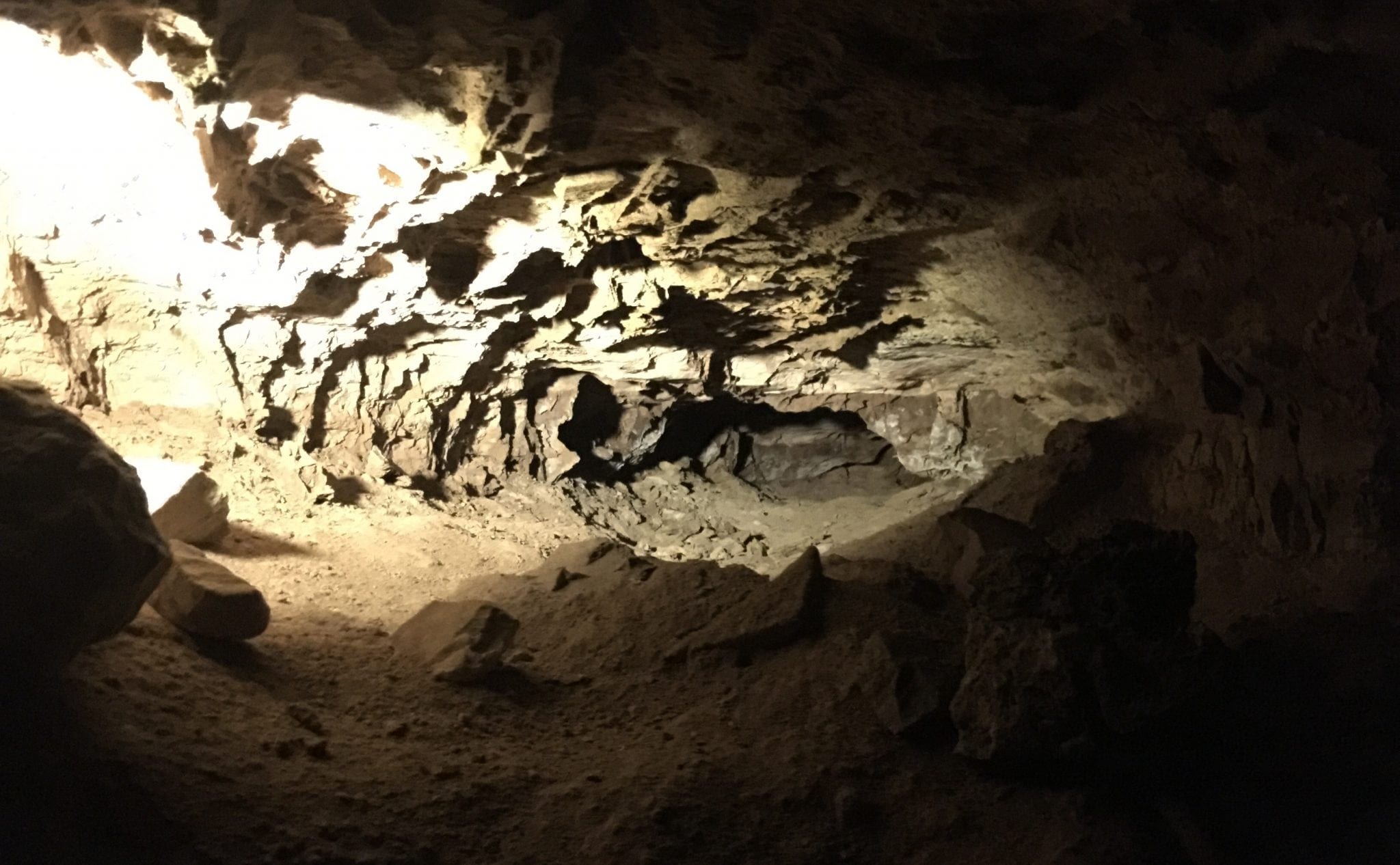
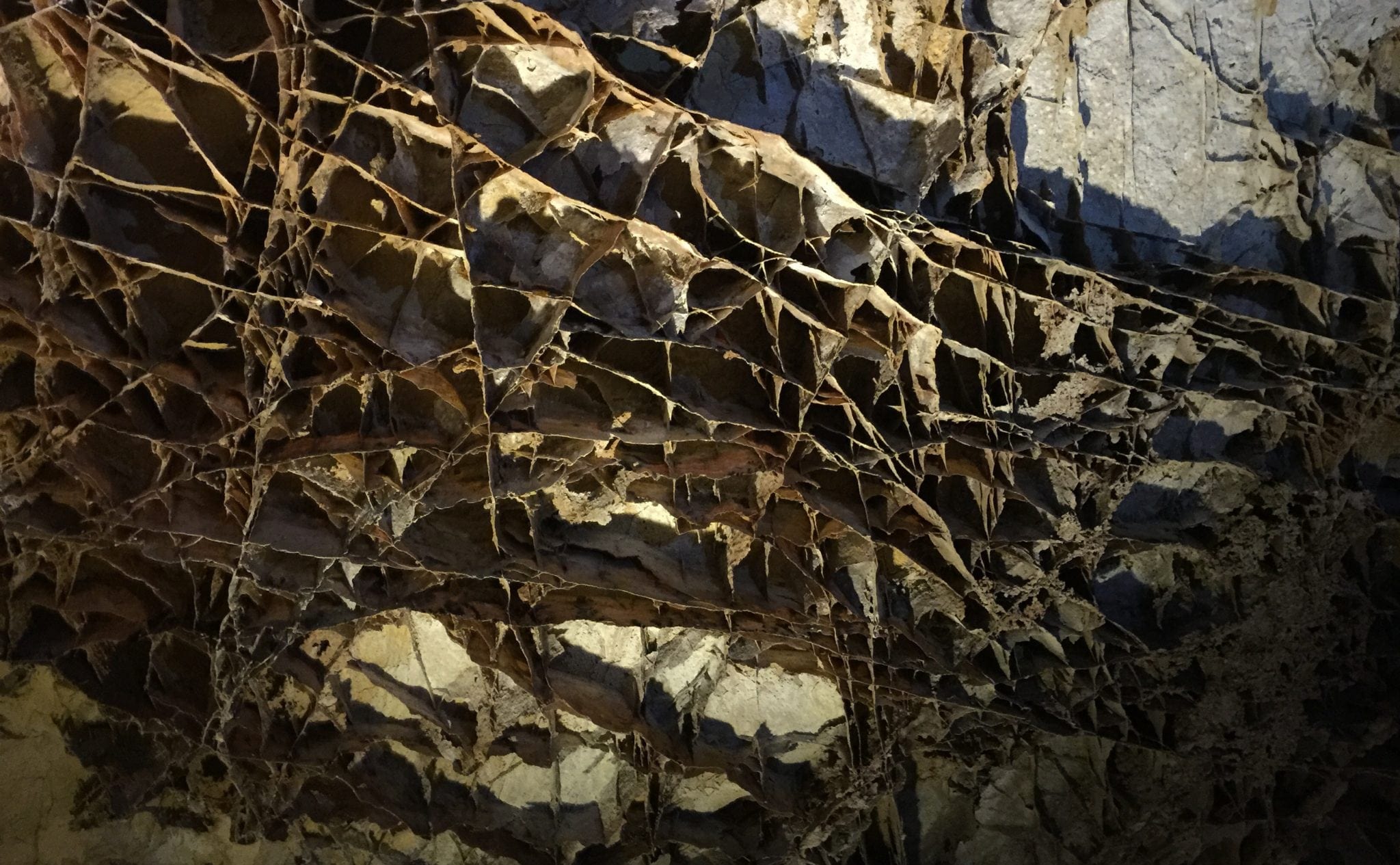
These boxwork formations are rare in caves, boxwork . Boxwork remains after the rest of the cave has dissolved away because of differences in solubility of the mineral calcite, which is what boxwork form from, and the minerals that surrounded them.
After two days at Custer we headed toward Jackson Hole, home to an old family friend of mine. There had been some discussion about seeing Mount Rushmore, and I said, “No Way!” I just couldn’t. The man who originally carved Mount Rushmore was in the KKK, Mount Rushmore, the KKK, and sanitized American history. After learning this, it was unanimous. We stopped outside of the Crazy Horse Monument, but we didn’t pay to visit there either. It didn’t look to me like that monument benefited the Native Peoples in South Dakota, and we were all done with supporting businesses in South Dakota that did not give back to the Native Community.
Check out our previous homeschooling high school post here.
Handcrafting High School: Year 2, Month 1, Dinosaur National Park
Handcrafting High School: Year 2, Month 1
The first month of tenth grade might have been the best month we ever spent homeschooling. You might be thinking, “Well, Yeah! You were traveling and hanging out. How could that not be great?” 🙂 That is true, of course, but it was more than that. The planning and intent for this trip focused on enriched learning. The choices for where we stayed and what we did were planned with the intent that what we studied on the road would enrich our understanding of a situation in science, culture, and/or history. We were not disappointed.
I am behind in my writing so I can tell you from perspective, that this year is the best example of what I mean by the statement that for our homeschool the method we use is the one that works. The factors that go into deciding the method or mix of them are
- what my son is studying: different subjects require different methodologies.
- the best materials and/or programs I can find for the course. Even for subjects I know well, I like to find materials to reference.
- how he accesses information while studying the materials for that course of study. This is a mixed bag for him. Sean is a very creative person, and subject areas he considers creative he treats differently than those subjects, like math, that he does not consider creative endeavors.
- how I am best able to present that material, in other words, “the best way for me to teach it.” You have probably noticed I usually talk about learning, but I am Sean’s primary teacher, chooser of materials, and chooser of core courses. So, the materials and courses have to work for me too.
- and what comes along to be added in while we are engaged in the subject. This is the reason this blog post is late. Really cool opportunities keep coming up.
Each course of study gets its own special treatment. If my son and I think something is important enough to include in his academic journey, then I will work to figure out the best course of study for him for this subject. Sometimes this “best method” is universal for most students, sometimes it is specific to my son or people who access information similar to him, and sometimes what looks like the “best” on the outside does not end up being the best after we get started with it. If what we do sounds good to you I think there are two things to recognize. 1. It is a lot of work to give someone a handcrafted education, and 2. the results are so worth it! Over the years it has been hard to judge this from time to time, but now in tenth grade I am able to see I mostly got it just right.
There is also a big difference between mostly right and all right, when it comes to my relationship with my son’s journey through learning. I think a lot of problems can occur when homeschooling parents assume they have figured out a course that is all right. It is too easy to become attached to paths when that happens. Because I assume with a lot of work, the best I will ever attain is mostly right, I keep working hard to figure out what best is and what it looks like. This results in us adding and discarding parts without getting too attached to them as I continually work to get the journey mostly right. This work is where and when the magic happens.
Because we have already incorporated so many methods into this year’s homeschool journey, I will try to discuss them as I go along. My goal with my 10th grade blog articles will be to focus more on the process we use. I get a lot of people asking me for more information about that aspect of our handcrafted education.
A year or two ago I decided to start tenth grade with a service project, followed by a driving tour studying local history, conservation, and geology, especially geology. Plate tectonics is a core concept of geology, but tectonic plates are so big, it is hard to see how slow moving rocks can lead to the formation of something massive like the Himalayas. I wanted to follow the Pacific Ring of Fire down the West Coast of the U.S. so that Sean could get an idea how large tectonic plates are. Besides, I think the year you study geology and environmental science, you should spend a lot of time outside looking at the subject of your studies. This illustrates the most common learning strategy I use. I will ask Sean to study the basics of a core concept, like plate tectonics, just the basics at this point, nothing intense. Next we learn about those basics in a practical manner, as we did with our driving tour. At that point he is fairly literate about this core concept. Then we will return to our course of study, in this case geology, with an understanding of this core concept. This gives you a place to bring everything together and take learning to a new level. It turned out to be everything I hoped for and more. You might be thinking, but how can I do that. There is no way I can spend 5 weeks on the road. Just remember field trips will work too. 🙂
I am going to write this using photos and short blurbs about where we were and why. I did write a few blog pieces focused on location. I will include those links.
Getting to the Service Project
8/11/2015: We packed up and got ready.
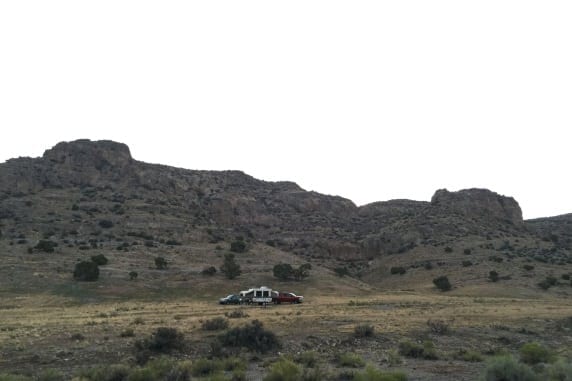
Five of us left together on our grand adventure. In addition to me, there was my son Sean, his best friend Sophia, my husband Jim, and our good friend Michelle. I love to pack for our adventures. We planned on spending 5 weeks on the road, most of that sleeping in our pop-up trailer. We would sleep in the dorms and eat in the communal dining hall at Re-member, but the rest of the time we would sleep and eat primarily from food we cooked in the pop-up. This would save us a lot of money, but it also made it easier because of the 5 of us, 2 are vegan, 2 are vegetarian, and Michelle, the only meat eater of the bunch, was leaving us after Re-member. Getting vegan food on the road in the U.S. is not easy. It is so much easier to do in other countries!
8/12 near Great Basin National Park, Nevada
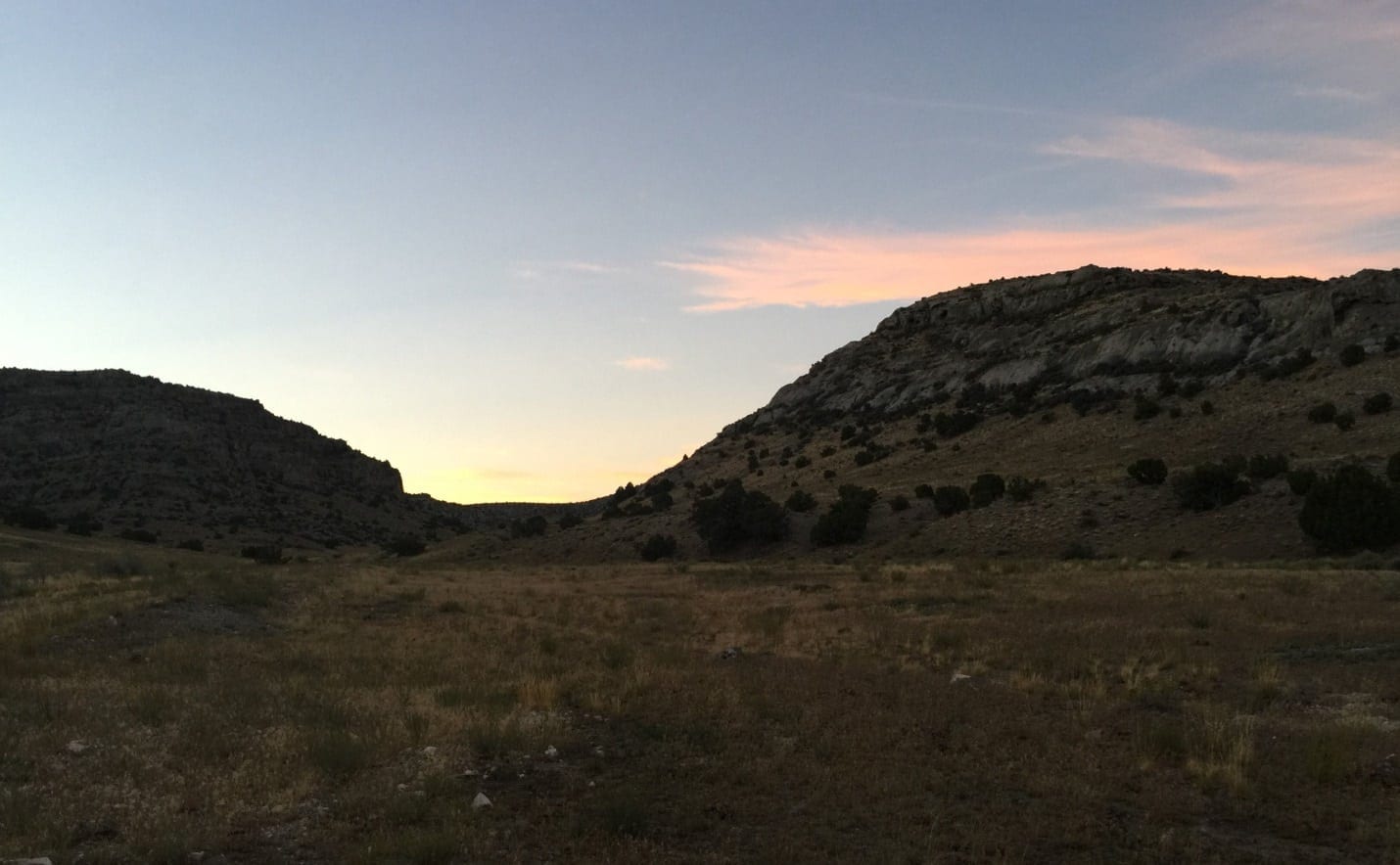
We started in Bridgeport, California at 5 in the morning. We packed up the night before so we could start early. We wanted to get on the road early, so we could find ourselves in the middle of nowhere a couple of hours before dark. We planned on waking up at 2 in the morning on 8/13 to watch the Perseid meteor shower, http://science.nasa.gov/science-news/science-at-nasa/2015/11aug_perseids/. It was a long hot drive and everyone was a bit crispy by the time we got to a spot we liked, but it was well worth it. The Perseids did not disappoint. 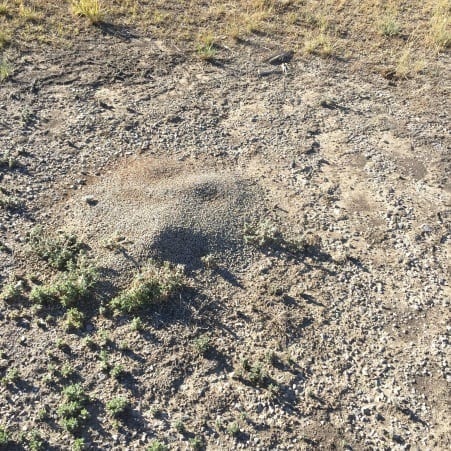
A good place to watch a meteor shower, away from any light pollution.
I wrote a blog post about it, https://seahomeschoolers.com/travels-with-sea-wheres-blair-great-basin-national-park-utah/
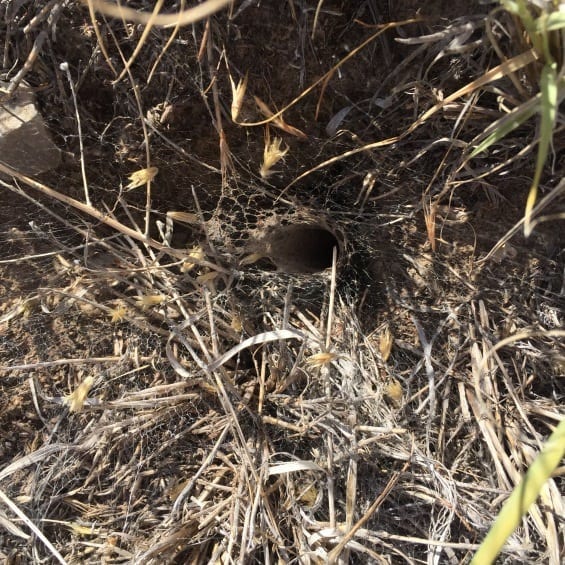
Scientists are as likely to be looking down as up, when they on vacation! I love spiders, and ants always make me think of E. O. Wilson!
8/13-8/14 Dinosaur National Monument Park
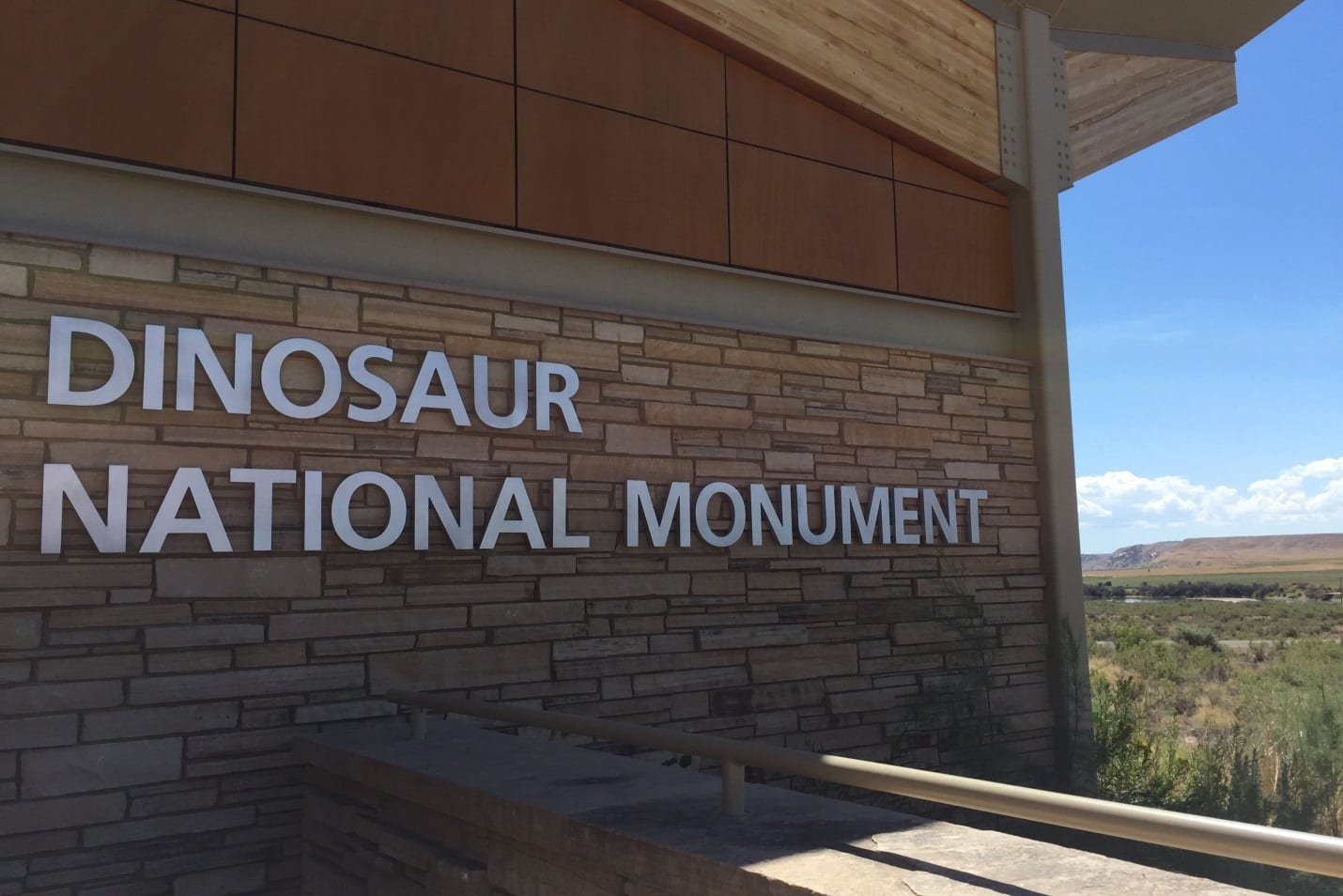
Our second stop was Dinosaur National Monument Park on the border of Utah and Colorado. It is an amazing testament to the constantly changing landscape of Earth. http://www.nps.gov/dino/index.htm. This link takes you to a blog post about this, https://seahomeschoolers.com/travels-with-sea-wheres-blair-dinosaur-national-monument-park/
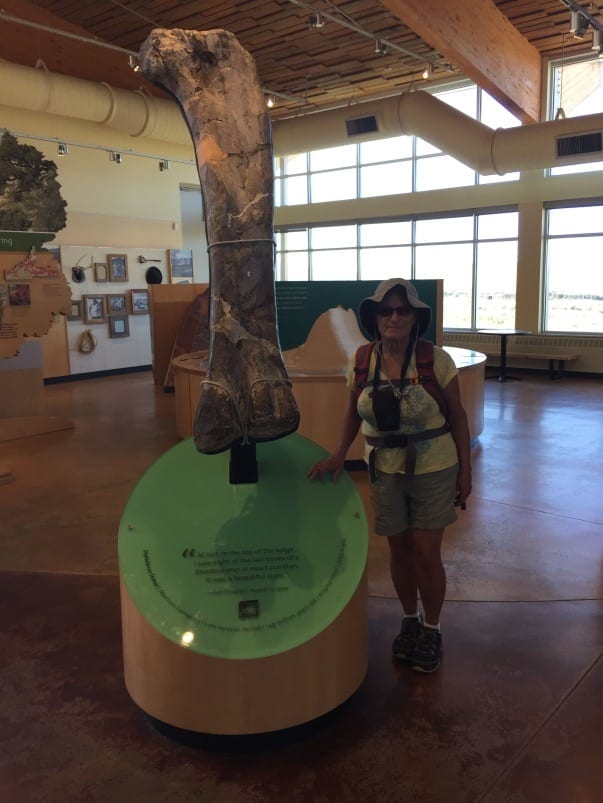
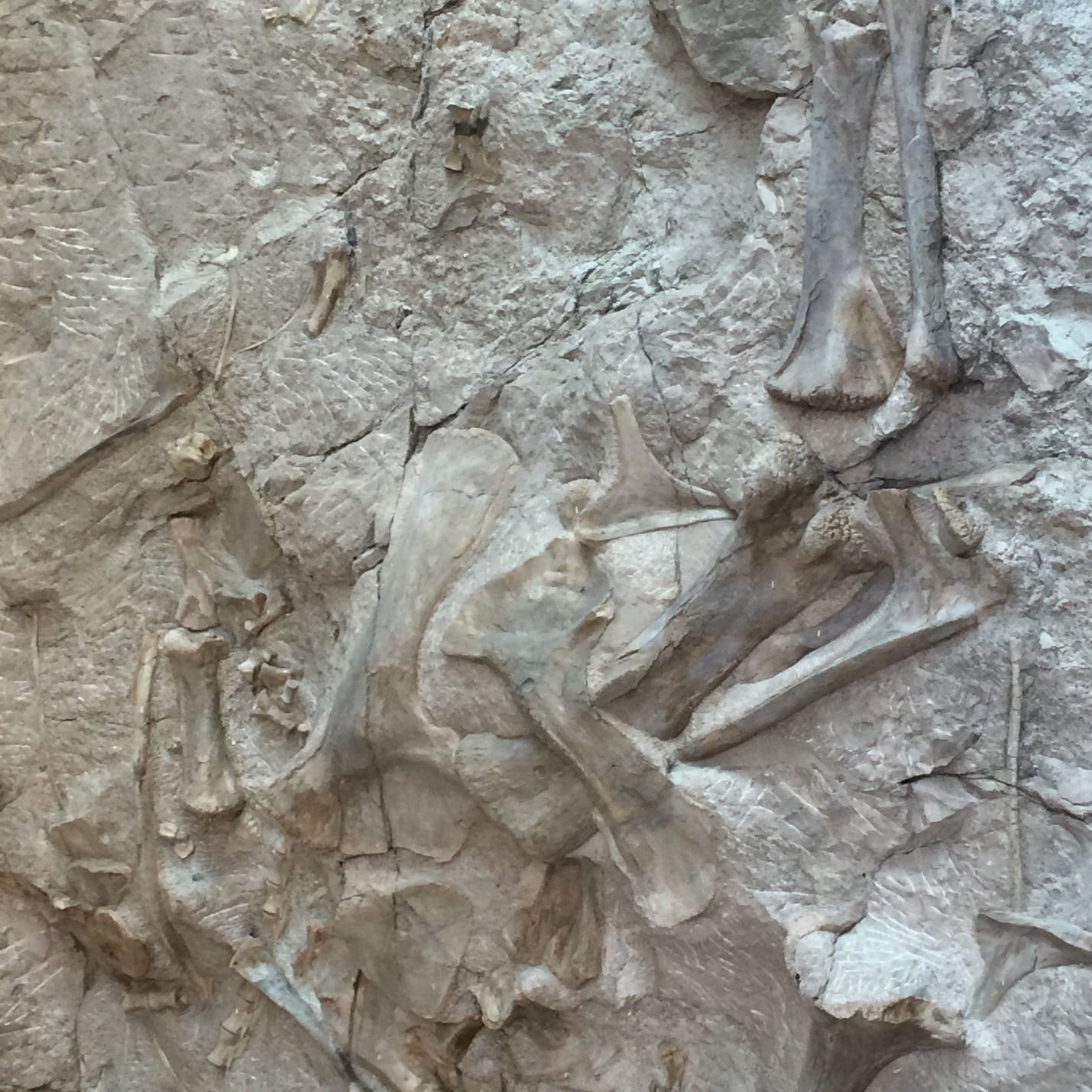
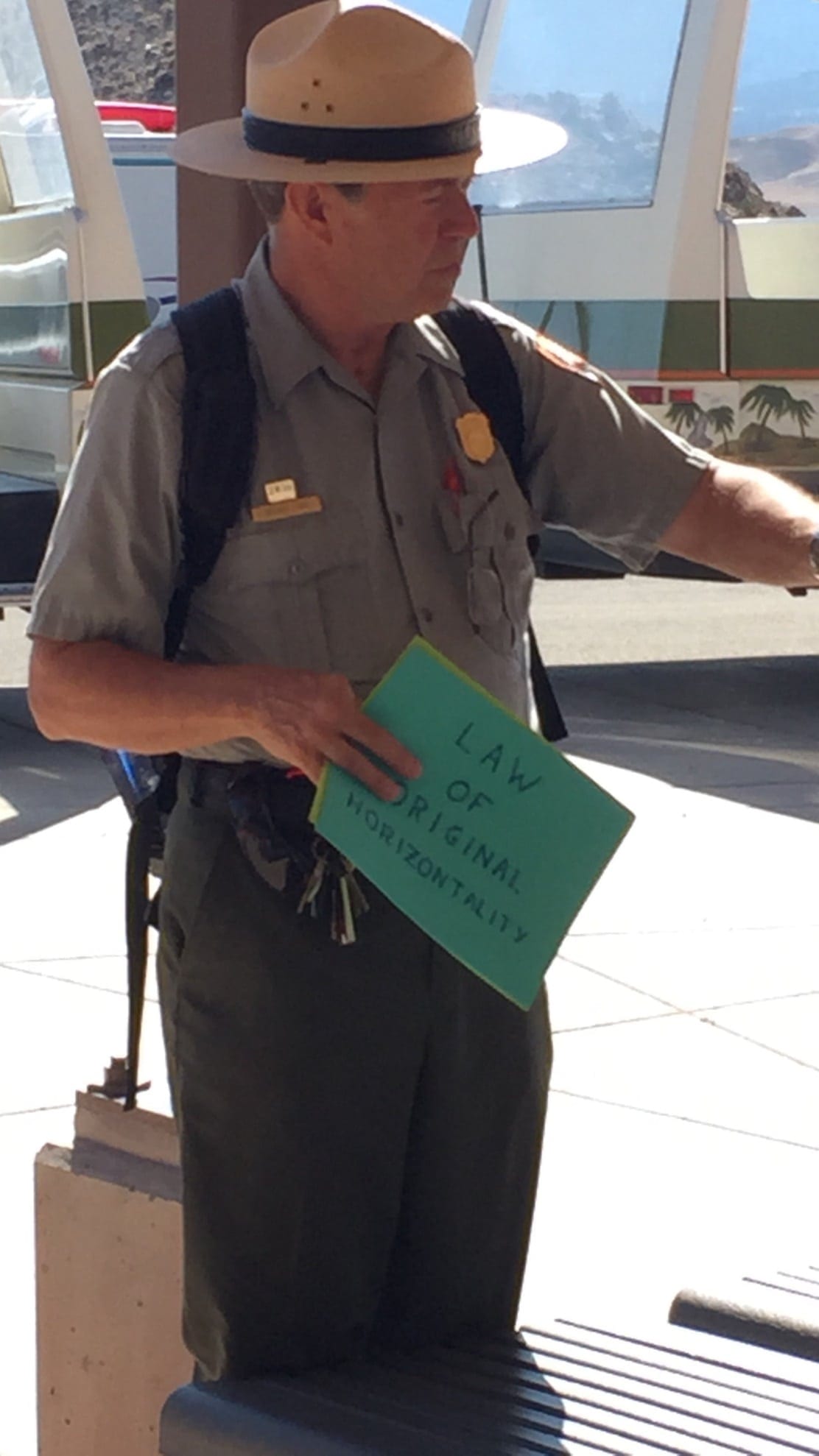
Sean complains, but I still make him go to guided talks with us. Jim complains too sometimes, but they humor me! I tell Sean he may not thank me as a teenager, but he will thank me when he is 30!
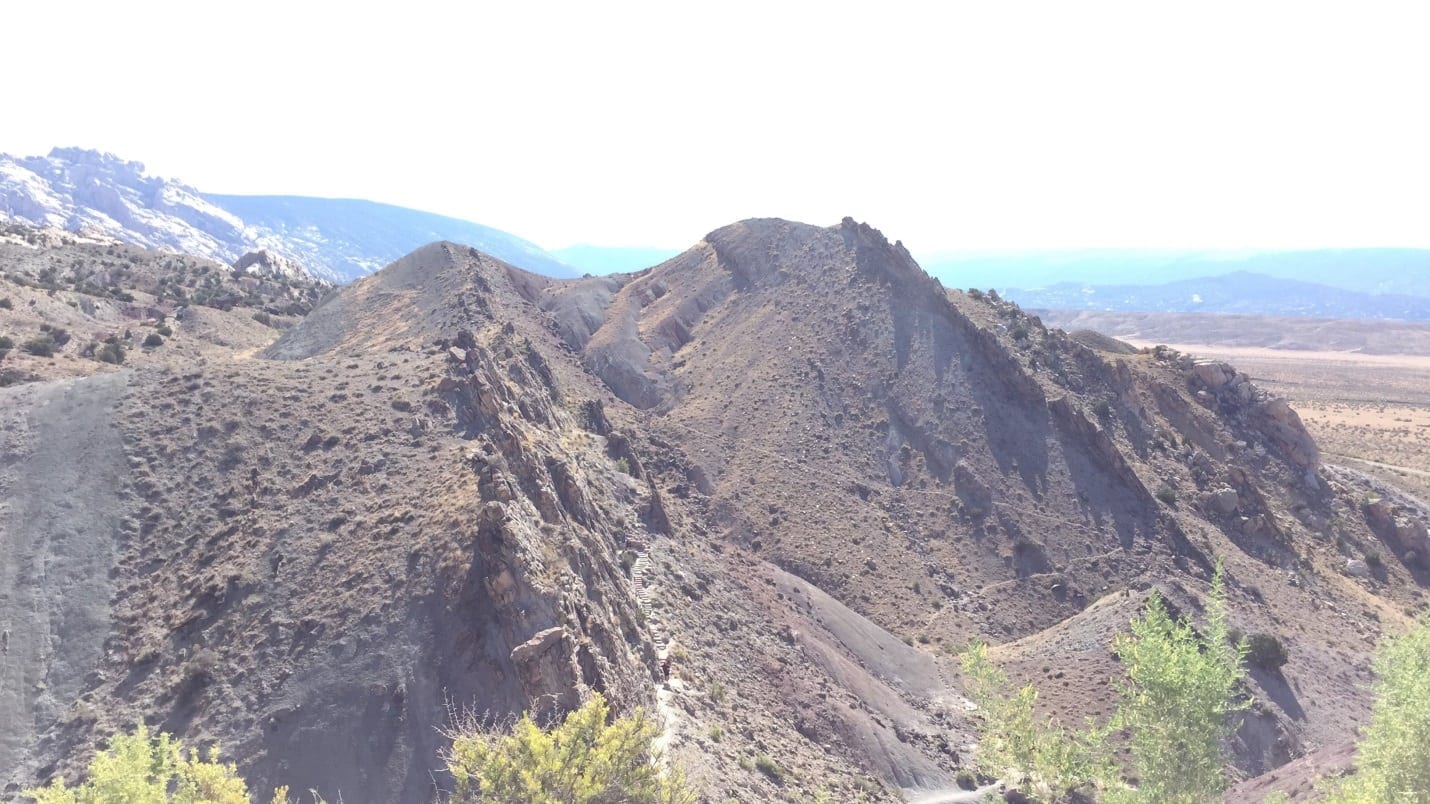
Look at the uplift! This area might be quiet now, but it hasn’t always been that way.
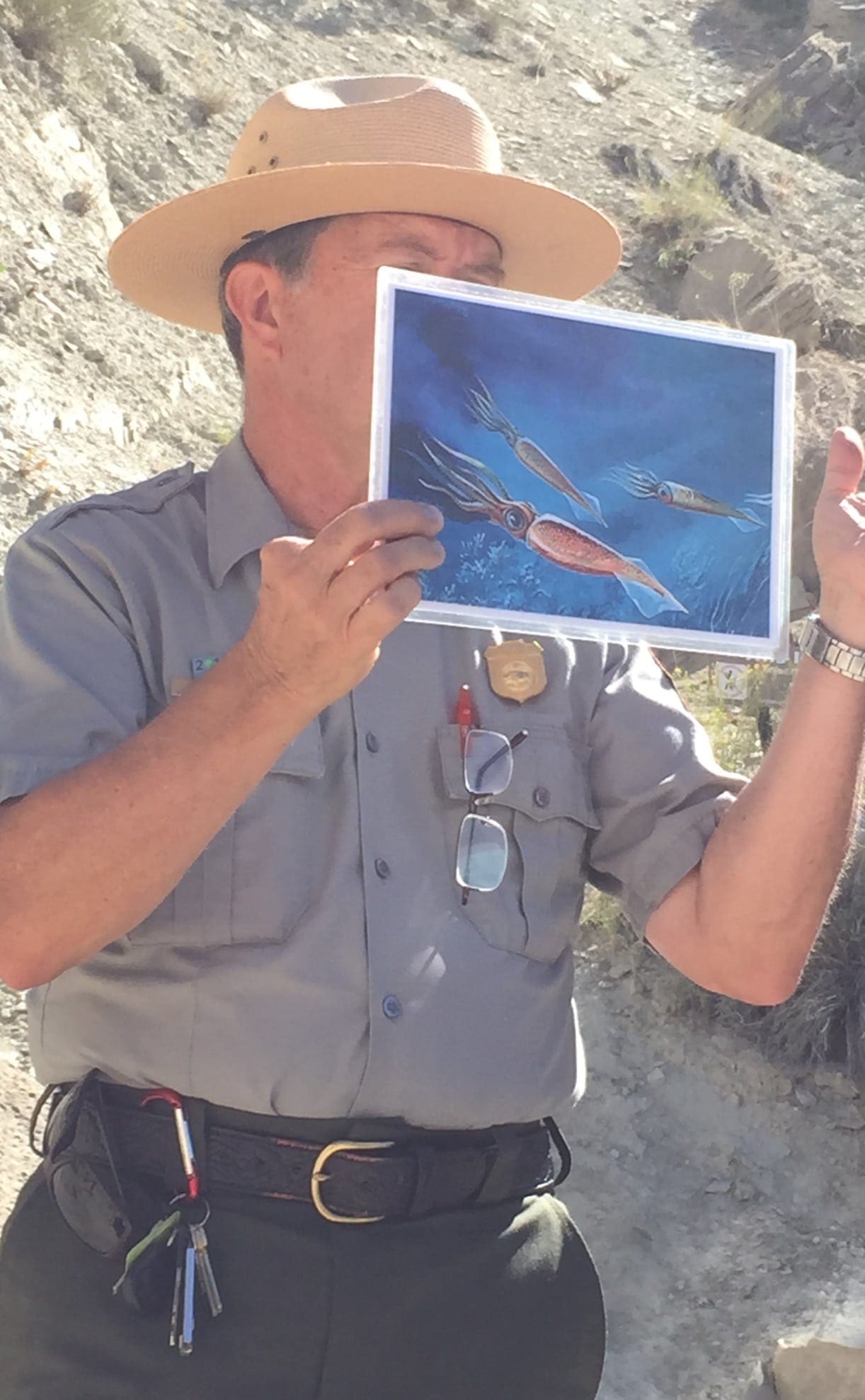
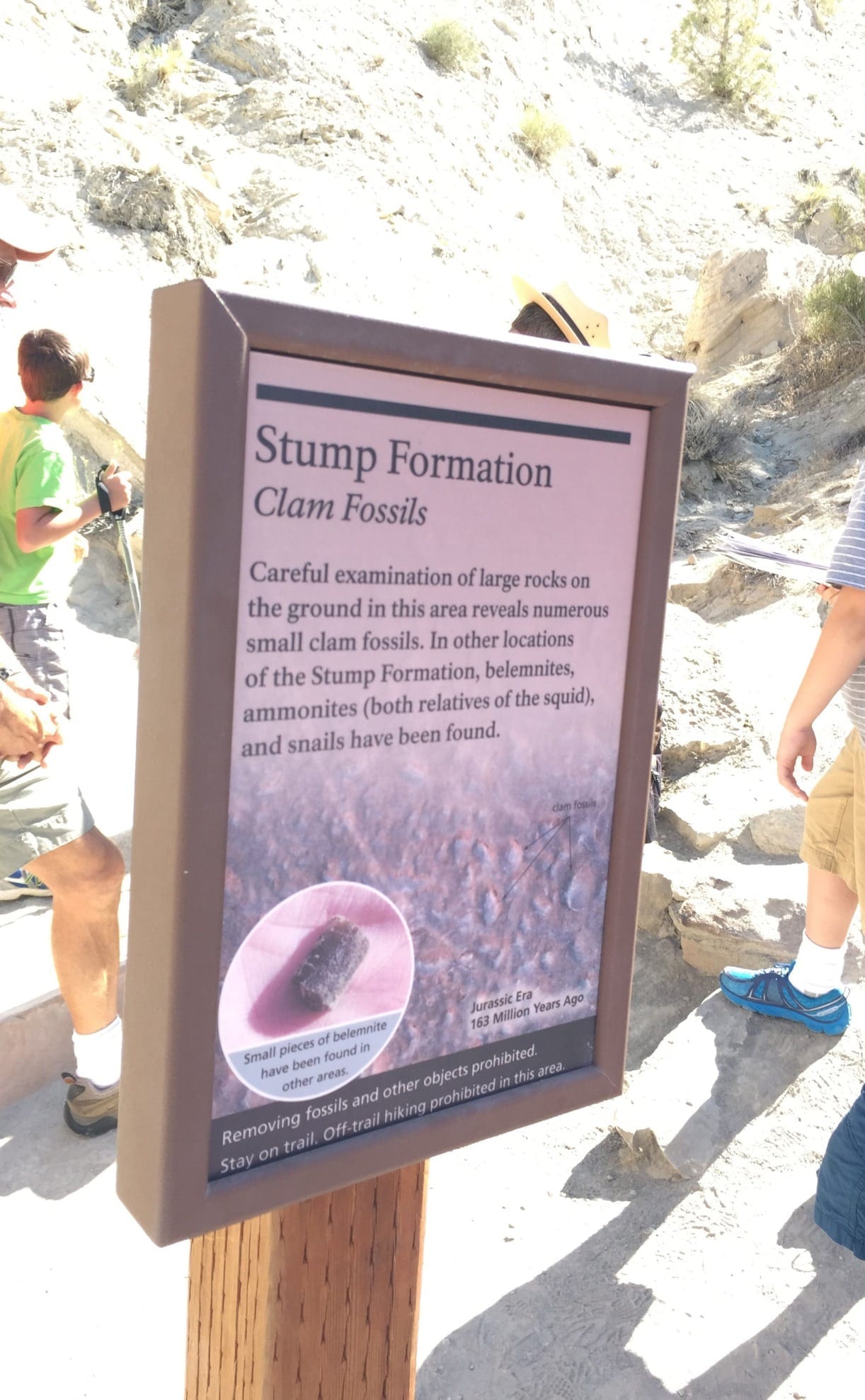
There is evidence that these organisms once swam where we are standing now. Inland seas, dinosaurs, volcanic activity, uplift, and now us standing on the ever-changing Earth!
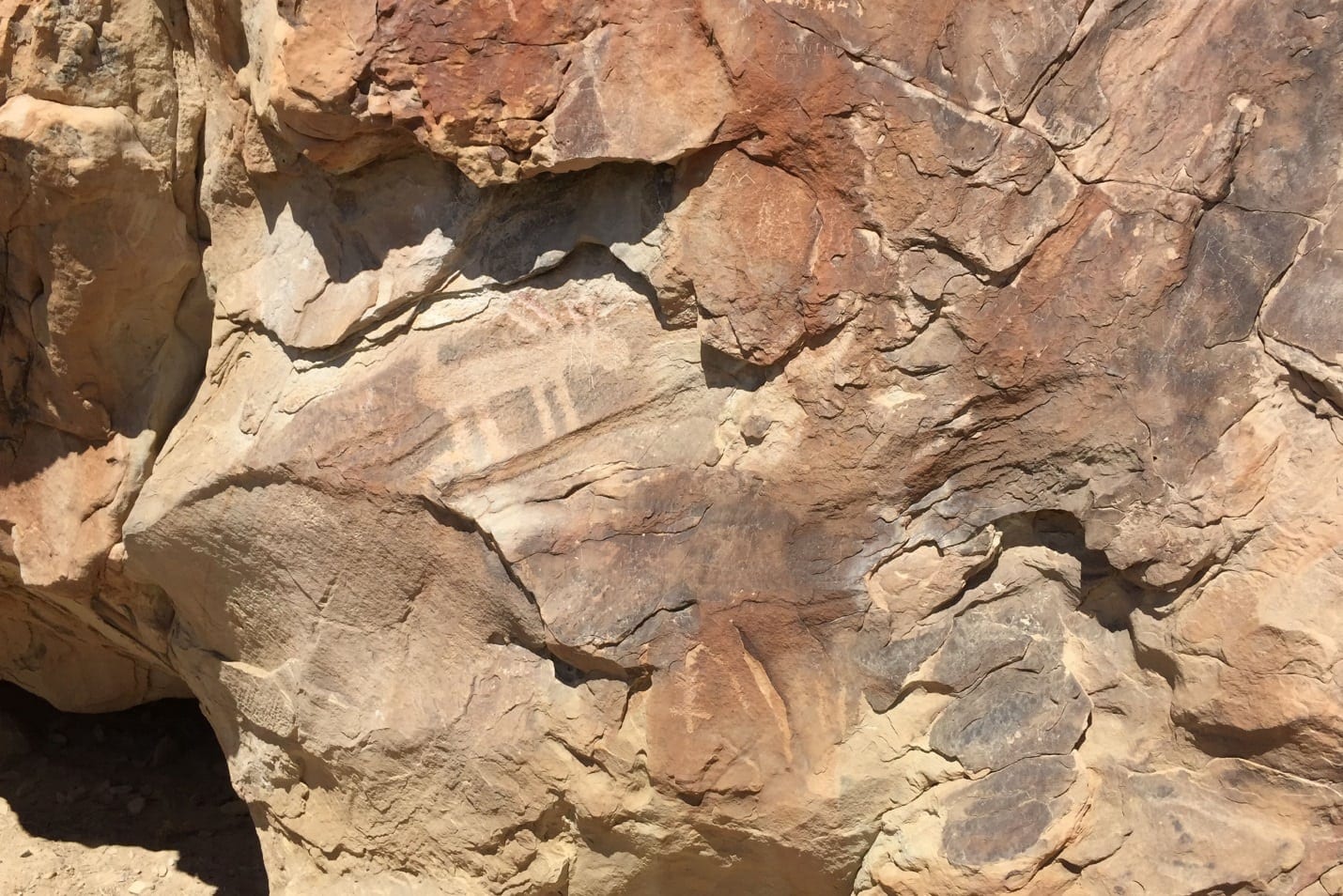
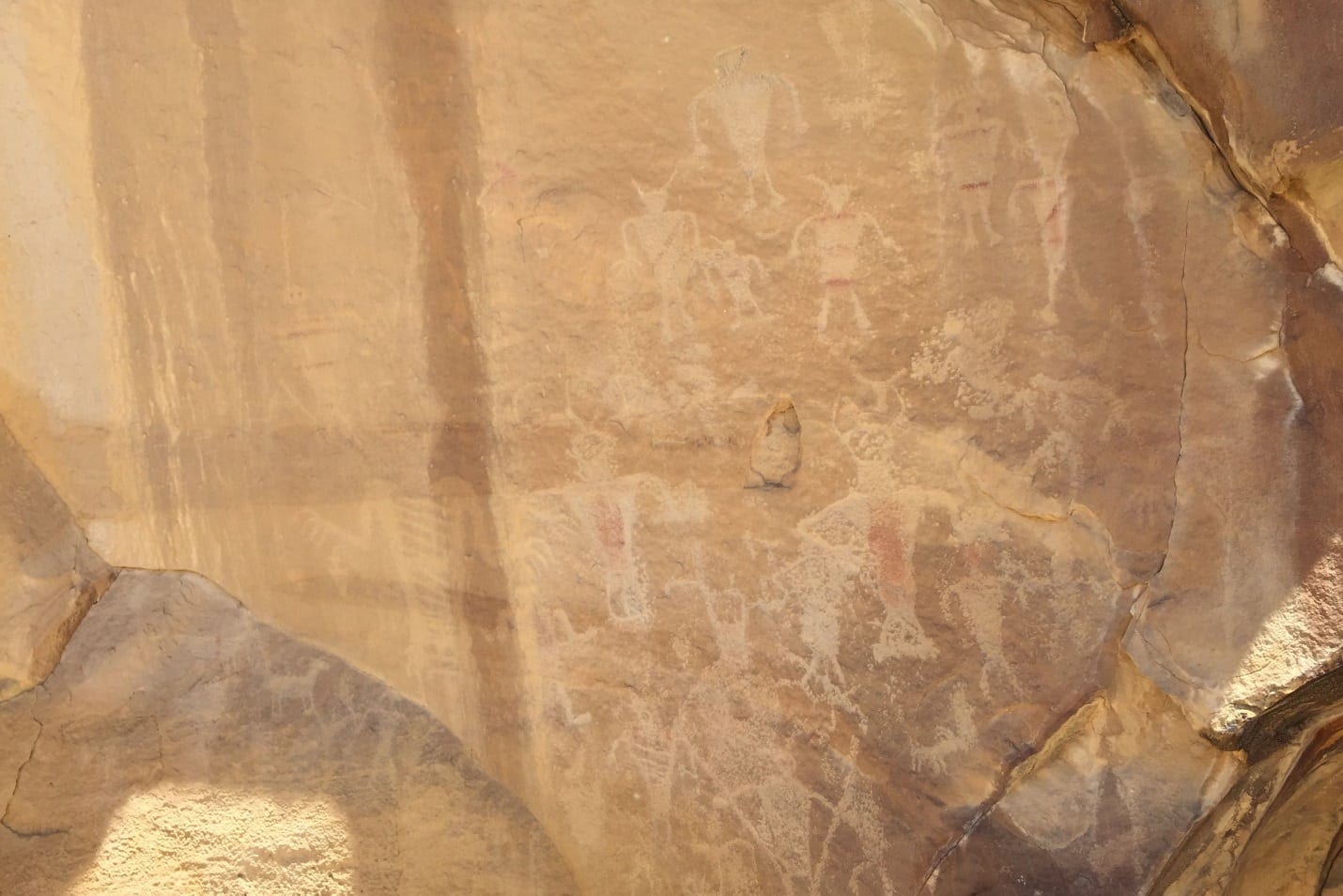
We saw petroglyphs too! Jim, my husband, and I love to hike and hunt out evidence of ancient civilizations. I was glad to see these on our way to Re-member. Too often the history of the North American continent is taught as if it started when Columbus “discovered” America. I wanted there to be a focus throughout this month on how history is interpreted and often distorted.
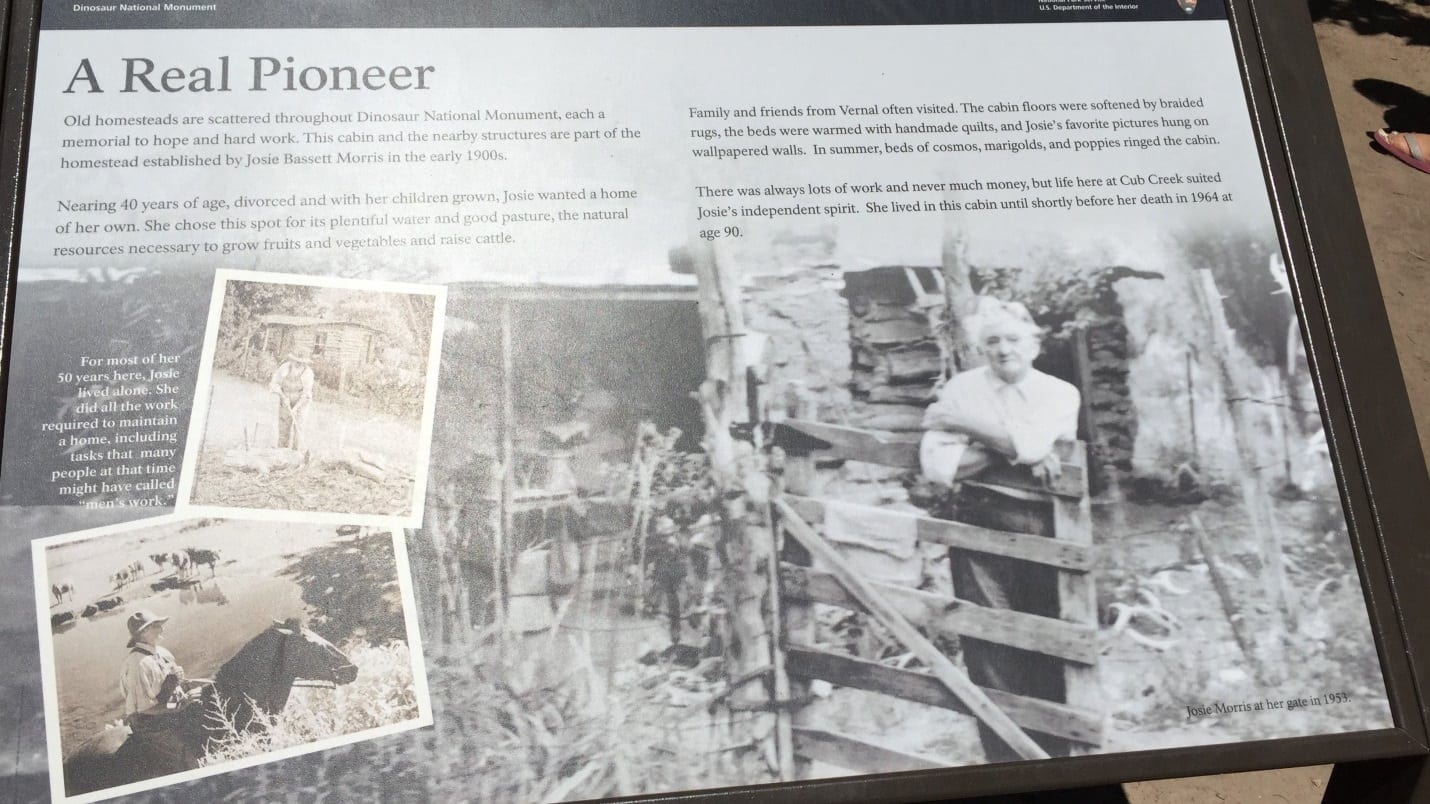
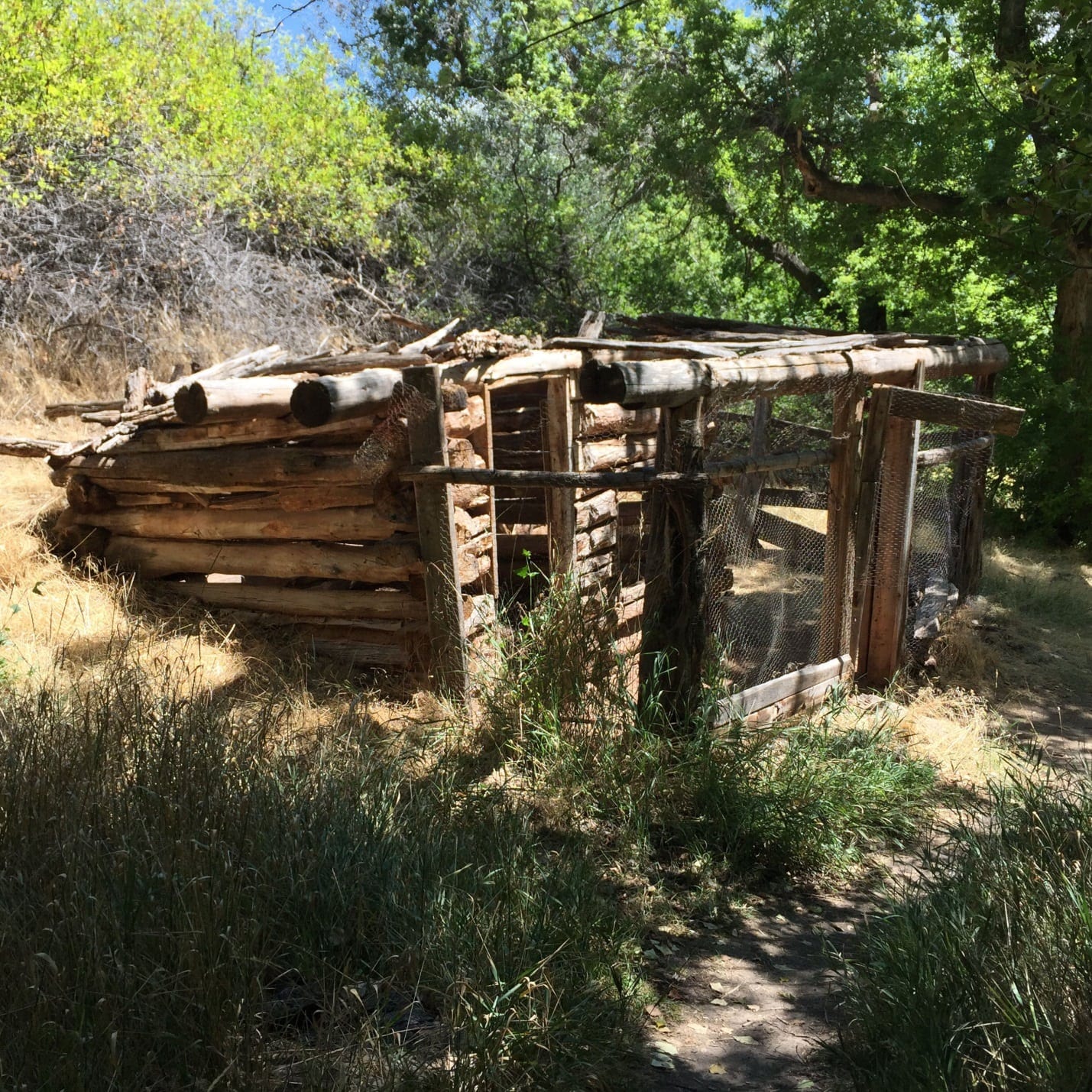
We went to check out an old homestead before heading back to our campsite. My family is all from Colorado. Many of the summers of my childhood were spent in the town of Eagle, Colorado. This homestead made me nostalgic for those days.
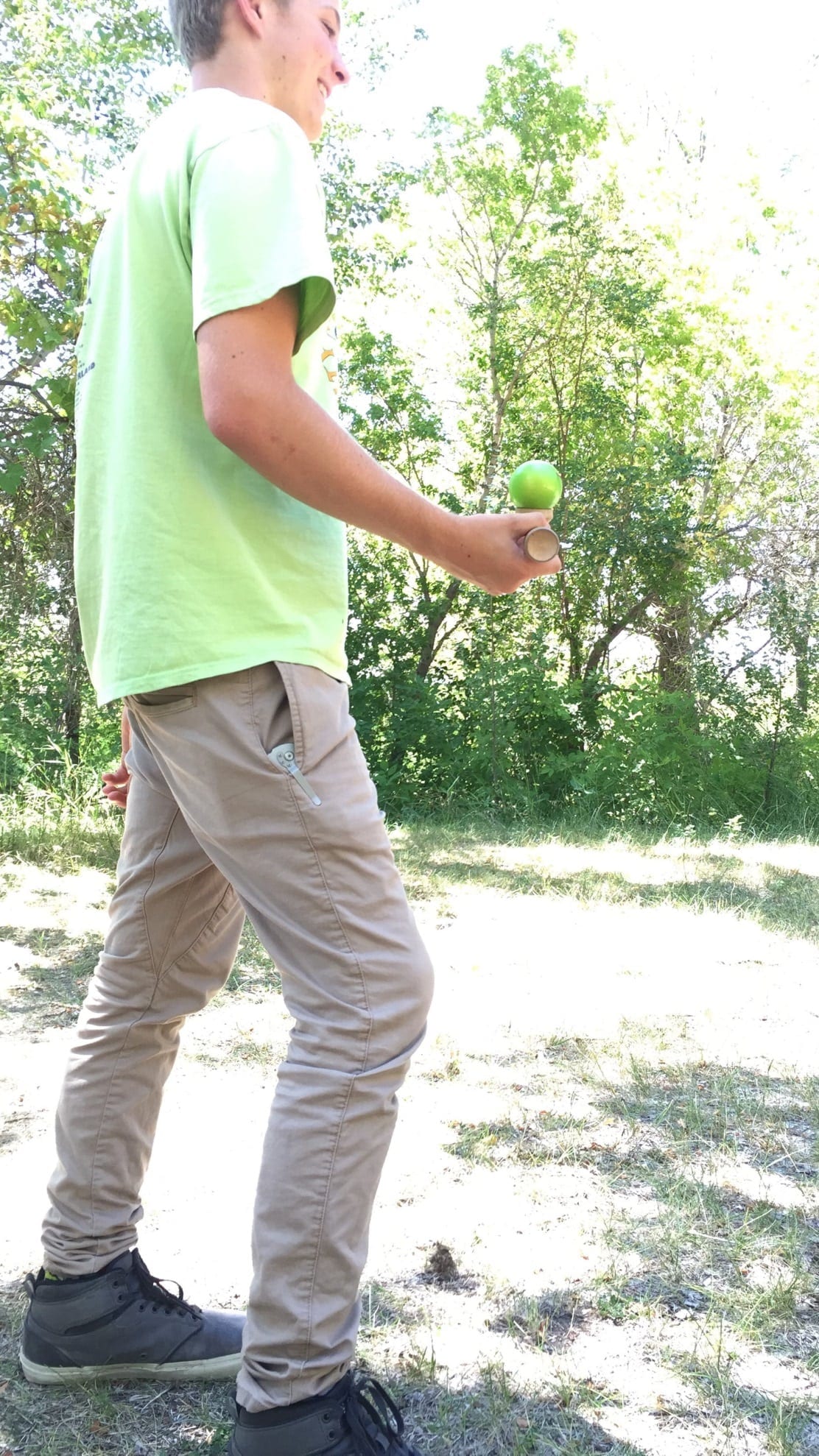
Working on kendama tricks was a major theme of the trip!
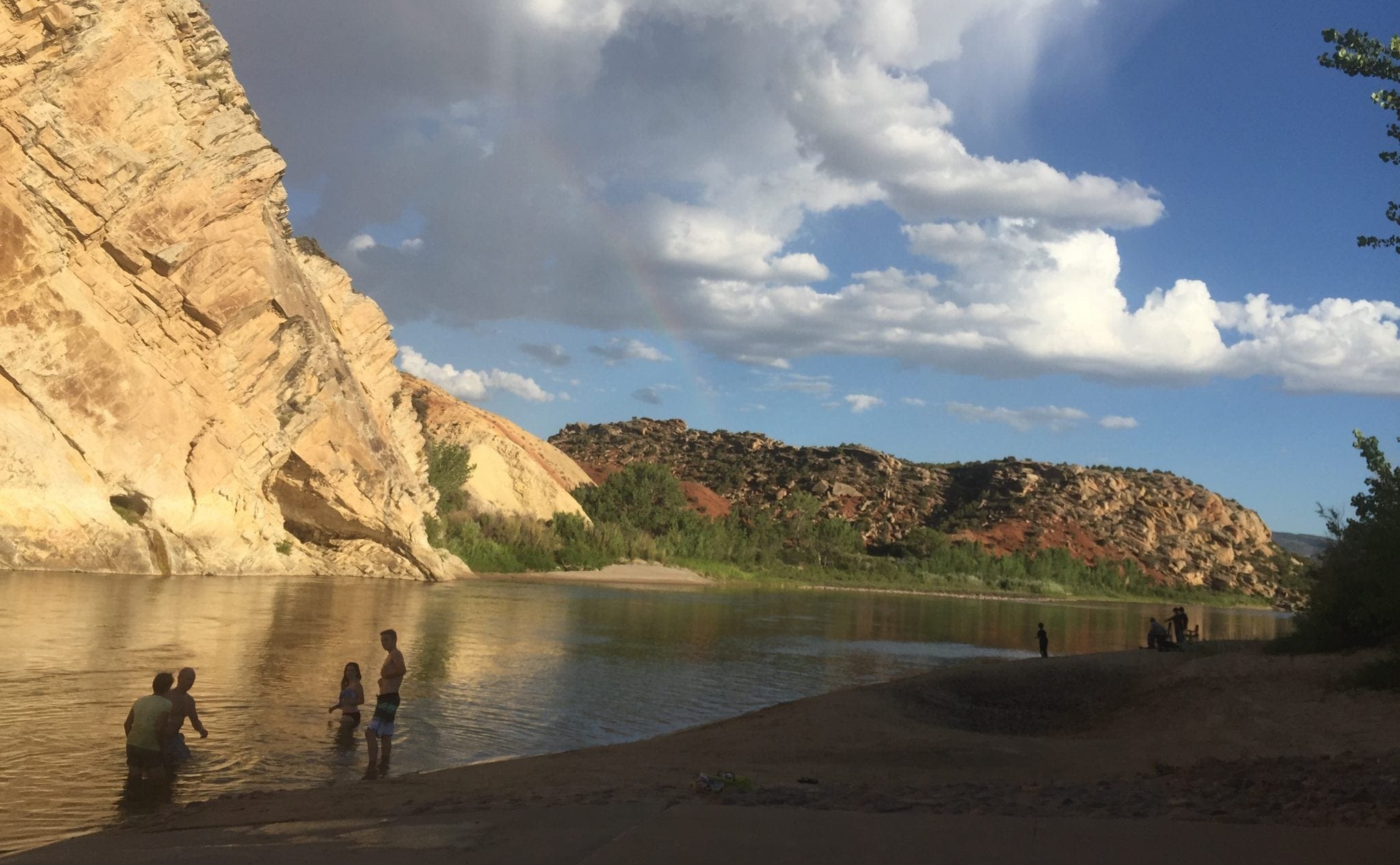
Cleaning the dust off in the Green River.
You might be curious about the planning for all this. If it looks like I have everything planned down to the nth, you might be surprised. Most of this is done haphazardly. My son will tell you I am the free-spirited type and often when we travel, figuring things out on the fly, on the road is best. Plans like the when and where for our service project, are figured out well ahead of time, but the rest is not. For example, the plan to go to Dinosaur National Monument Park was figured out two days before we left. I happened to read about it somewhere, none of us had heard of it before, and away we went.
Check out our post on an eclectic and effective approach to foreign language studies here.
Handcrafting High School: Year 1, Month 9
Handcrafting High School: Year 1, Month 9
We school year round with lots of breaks. That doesn’t matter to a planner like me though. Every year I have a start date and an end date. The year-end date for this year was the day we picked Sean up from Stanford. Our life was a whirlwind during the time leading up to that. Talk about eclectic! And academic! And we always keep it secular! Science is not a small part of our life!
Planning for next year
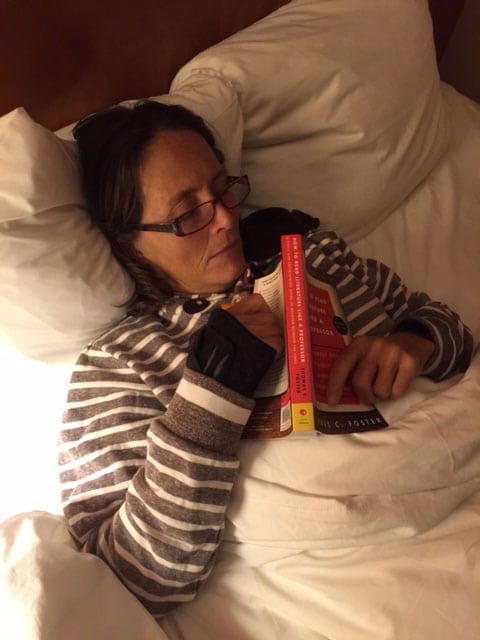
The previous month I had Sean work on some short nonfiction essays. As he was working on these I realized the structuring of his ideas was chaotic. What he had to say was good, but often it felt like he had dumped all of his ideas on a plate in a way that reminded me of cooked spaghetti noodles. This is something we will focus on next year. One of the most important things I do during the last scheduled month of our school year is assess where Sean is in the core subjects, and what specific things he needs to work on the following year. From this standpoint my scheduling makes sense. Maybe I should think of it as an assessment period instead of an endpoint. Especially since I change, tweak, and update the plan regularly.
Assessment is an important part of the teaching and learning process. It’s gotten a bad name in recent years because of the testing culture at traditional schools, but it is critical to evaluate someone’s progress when you are teaching them, especially if you are an eclectic, academic homeschooler. You can trust your child is at grade level if you use a good, solid textbook or course that is at grade level, but you’re still going to need to assess them to make sure they have learned the material. We like to mix it up as you know if you’ve been reading about our handcrafted education this year. Some of Sean’s best and most meaningful work is done without any outside guidance. The problem with evaluating that work is there is nowhere for me to go to get a feel for where Sean’s work is as far as “grade” level.
Evaluating Sean’s progress isn’t as difficult as it could be, because I’m not holding Sean to a standard designed by someone who does not know him. I let the evaluation and the plan for next year reflect Sean’s academic strengths and weaknesses. I find challenging material for him in those areas where he is strong and I am thoughtful and careful when choosing material for the areas where he struggles.
The most intense planning is for subjects I think people should just know. In eighth and ninth grade it was computer programming. In tenth grade it will be American government and politics. The longer I homeschool the more comfortable I am when I design a course that is most likely different from any other student is studying. I no longer worry if colleges will like the courses. It just isn’t about colleges’ approval for us. I am guided instead by what I consider essential knowledge in today’s world. These courses often include knowledge of topics where I think high schools are dropping the ball by not teaching them in a meaningful way. The low-level to non-existent computer programming skills being taught is one example. Another example is that kids are getting out of high school, at an age when they can vote, without an understanding of key issues in the political science of today. Issues being decided that, because of the difference in age, will affect them much more than the people deciding them. Because these are unique classes they take a lot of planning, and it is important to me that they be academic in addition to being enriching, which takes even more planning. If possible I weave necessary skill-building lessons into these areas, which takes even more planning.
May 1 to May 26, 2015
Math
We had three chapters of algebra to get through to be finished for the year. Math was a big part of this month. Algebra this year has been very interesting. My grandmother said to me once, “In our family math is either so easy you can work through it as easily as you can fall into a pool or you have to work at it.” Until this year Sean had to work at it. Something clicked this year. Math is still his least favorite subject, but he now thinks it is his easiest. If you think I am lucky because of this, I would agree with you, but you have no idea how much drama and angst there has been about math over the years.
Language Arts
Early this month Sean said to me, “I would like to write an article about programs teaching computer coding to help others who want their kids to learn to code. I have been so fortunate with the programs you have found for me, I want to give something back,” How to Get Started with Coding, Sean Lee. Sometimes there are glimmers of the adult he’s going to be, and then there’s the rest of the time. 😉
The rest of the writing for the month focused on politics, Spain, and the volunteer trip we would be taking in August on the Pine Ridge Reservation. Because Sean needed to work on structuring, I sent him a nonfiction article daily. I had him start his day reading this article. I would discuss the topic of the article with him, and the structuring the author used for the article.
I like to use other people’s writing when discussing Sean’s writing. We do not use these writings for copy work however. Sean has never enjoyed copy work. I am not a fan of it either. We both consider copy work drudgery. I understand that you can learn techniques from copying the work of others. Sean and I choose to learn those techniques in ways that do not include copy work though. I think of writing as a creative process. To me it is an art form. When you write something that comes from you, it is original. It is unique. It is something you created from your mind. I think creating your own original work is meaningful and special. I come from a family of visual artists and designers. I am the only member of my family who uses words to create their art. I am terrible at creating visual art. I do like to design things though. I want Sean to experience the beauty others use with the artistry of their words. I look for him to use some of the techniques he observes while he crafts his own writing instead of by copying those techniques directly.
Other writing techniques we will focus on in tenth grade are transitions between paragraphs, comma splicing, and concluding paragraphs.
Computer Science
Sean did not finish either of the Coursera courses he started. We ran out of time. Instead he spent his time reviewing the programs in his portfolio so he would be up to speed on these skills when he went to Stanford.
Science
What a wonderful time to be studying astronomy. There are so many new discoveries in this field of science being made every day it is hard to keep up with all of them. We gave it a good try though. Sean took topics out of my book and learned more about them. It was exciting to hear what he was learning. He also used Khan Academy focusing on the math used by astronomers.
Crew
This was a busy month of rowing. There were away races and practices were mandatory. Sean has loved this sport. It is much nicer living within biking distance too. Sean hops on his bike, rides to and from, and rows in the middle of his ride.
Eclectic, Academic World-Schooling: Spain
Raising our child to be a global citizen is one of the things my husband and I think is essential knowledge for today’s world. We mainly use travel to make this happen. I cannot lie and say the travel is just for him. I am a vagabond at heart. I absolutely love to see people’s differences. Travel lets us see how those differences are reflected in different cultures. Because of rowing, our trips this year were during the summer, rowing’s off-season.
Our reason for choosing Spain was more eclectic than academic, not that this affected the things I dragged everyone to. My husband has always wanted to go to Spain, and the exchange rate this summer favored the dollar. Spain was fantastic. It was my husband, Jim’s, favorite place we’ve ever travel to. It was one of Sean’s favorites. My favorite is still India. I love Spain, but there is something about India and the people of India that resonates with me like nowhere else I have ever been. You can read about our trip to Spain here, our stay in Spain and India here, our stay in India.
HSC Campout, June 20 to 26
One of the homeschool groups in California, HSC, has weeklong campouts throughout the year. These are so much fun to attend. One of these campouts started a couple of days before we got home from Spain. Sean begged us to let him go. I was receiving emails from friends asking me to go as well. There was no way I was going to get home from Spain and immediately camp for a week. Sean on the other hand had someone pick him up the day he got back from Spain so he could go camping. I might just be raising a vagabond! Camping with HSC
The CHN Conference, June 27 to 28
I picked Sean up on the way to a homeschool conference where I was speaking. One of the perks of having a mother who speaks at homeschool conferences is that you get to attend them. I had heard from other homeschoolers over the years that one of the highlights of their year was attending an annual homeschool conference. I did not take that very seriously until we had attended our first. They are a blast for kids and their parents. In addition to being fun to attend, conferences are a great place for homeschoolers to meet other homeschoolers, make friends, and share ideas. Homeschoolers are a spread out bunch. It is rare to find a group of us together at the same time. I think conferences are important for homeschoolers with a homeschool related business or endeavor for networking. I also think the talks geared toward parents are a sort of academic enrichment. Of course you have to find talks on topics that bring something to your homeschool. If you can find those, you can learn new techniques and tips and gain insight into issues affecting your homeschool situation.
This conference I had a big surprise coming. In the middle of April, I started the Facebook Group Secular, Eclectic, Academic Homeschoolers. I did not realize how many people were going to want to talk to me about the group and the content in the article I wrote that led to the formation the group. I brought 50 copies of the article, just in case someone wanted to read it. The copies were gone in a couple of hours. Honestly I was so busy at this conference I barely had time to go to or eat.
The attention I was getting did not go unnoticed by the conference organizers. They asked if I would help them arrange and find speakers for an academic track for their 2016 conference! How exciting! They are looking for talks about Science, Mathematics, Social Studies, Computer Science and other STEM areas, History, and Language Arts. The talks should offer practical information such as curriculum recommendations, online or outside resources (i.e. museums), why it is important to learn certain subjects and where this knowledge can take your child.
If you are interested, please send a Speaker Proposals to: CHN speaker’s proposal.
There will also be a Curriculum Library in the room where the Homeschooling 101 sessions will be held. I am a big fan of looking over materials before buying them. This is a great idea. I will make sure they have a full complement of Pandia Press’ products. If there are materials you would particularly like to look over contact Diane or Martin Forte, CHN curriculum library.
Stanford Pre-Collegiate Computer Simulations and Artificial Intelligence Program, AKA Where Sean Learned to Dance!
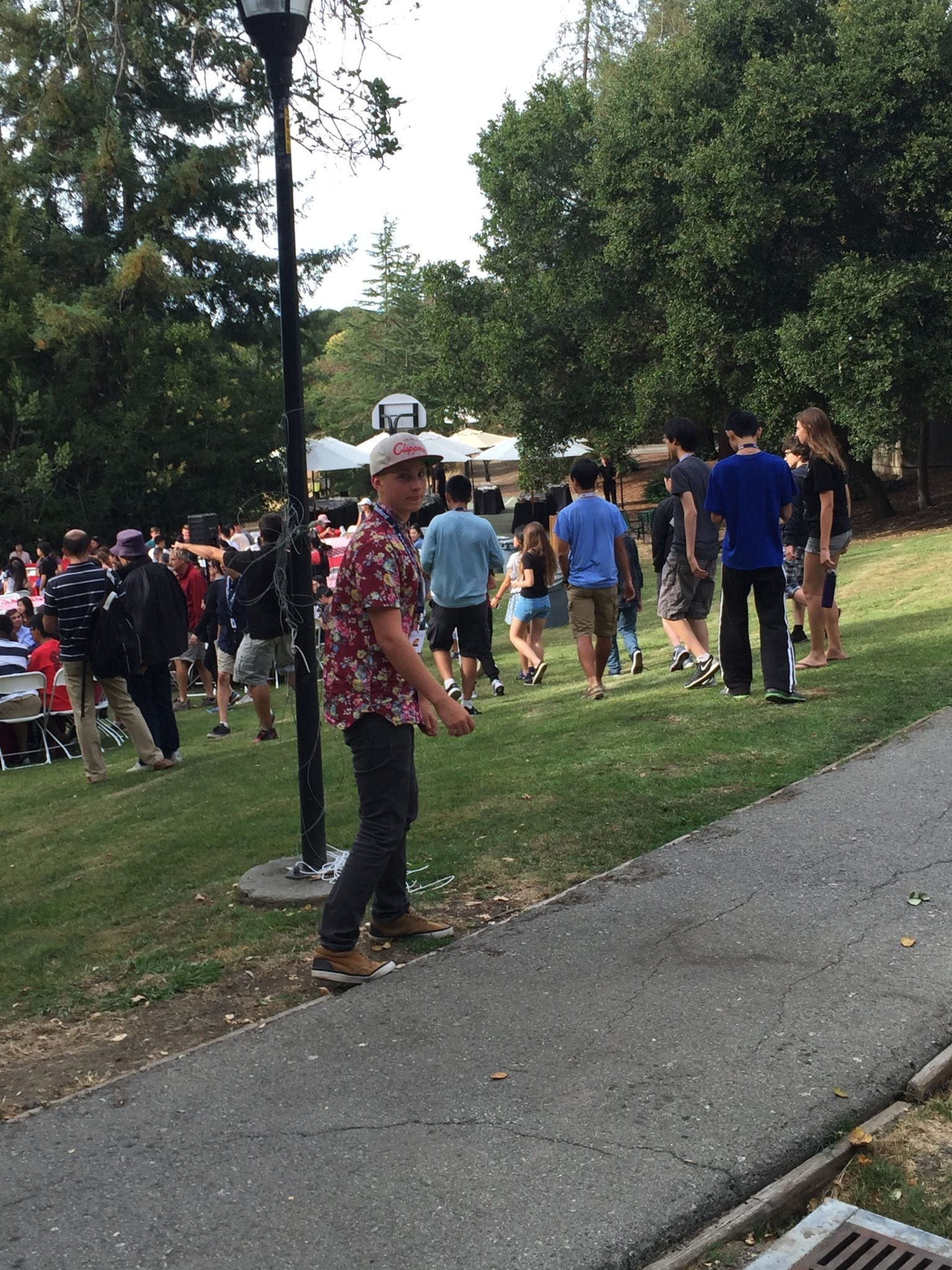
Yes you read that correctly! About 4 years into our homeschool journey, my husband remarked that, “One of the major benefits of homeschooling is kids grow up following their own interests. They do not have peer pressure, telling them something is or is not cool.” Sean has grown up being taught if you are interested in something, you should investigate and learn more about it. We believe the places your mind takes you are more than just your idiosyncrasies; they are part of the core essence that makes you unique. My one caveat to this is that Sean has to stick with something he has invested time in even when it gets difficult and complicated, as happened during this school year with computer programming.
I believe Stanford feels the same. When we took Sean to drop him off we attended a welcome dinner. At the dinner one of the speakers said this to the students, “There are no grades, so there should be no fear of failure. Dare to take risks. These three weeks are about exploring ideas and intellectually challenging yourself.” Which is just what Sean did, but not in the way I expected him to do it.
I do not believe language arts and math should be the only important criteria for measuring intelligence, as is often the case in schools today. For that reason Sean has not been raised to only value them. Many years ago I read about the theory of multiple intelligences, The Theory of Multiple Intelligences, Wikipedia. I have a degree in evolutionary biology, and from the standpoint of evolution and natural selection this theory makes sense. From the standpoint of both a parent and an educator, this theory is observable. Sean has been raised with the understanding that bodily kinesthetic is a type of intelligence and should be treated and valued as such, which is probably why he did not think it would be an issue with his parents when he spent more time at Stanford learning to dance than he did working on computer programming. He was right too. Sean had never, and I mean never, ever! including dancing at teen dances, shown any interest in dancing, despite my love of dancing. I do so love to dance. Nothing structured, but when the music and mood strike, I can dance all night.
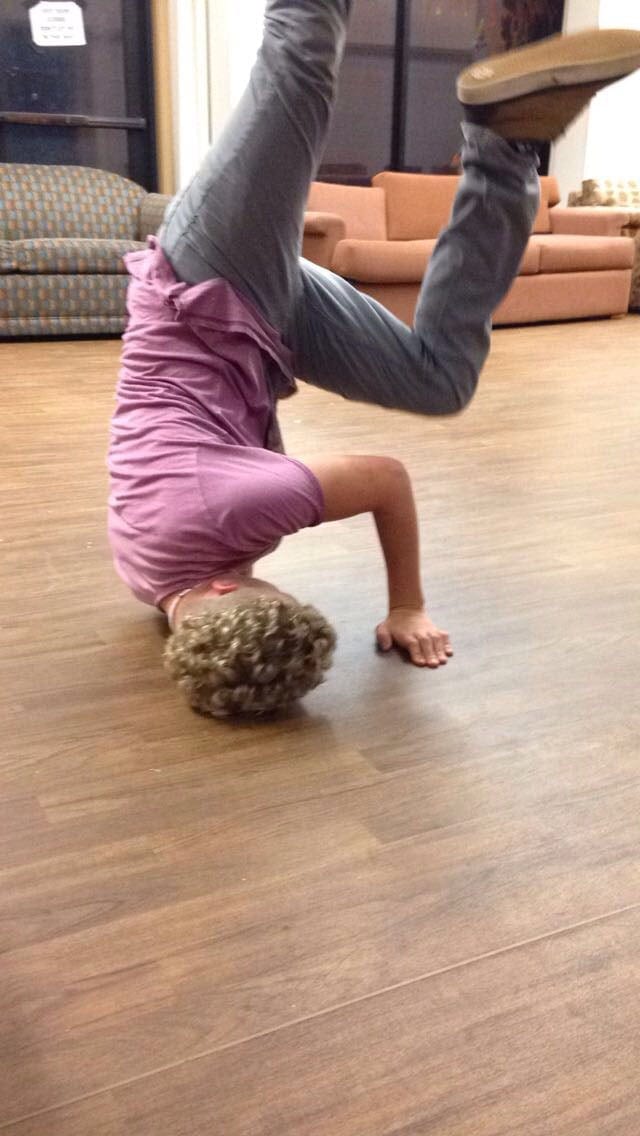
Sean had only been at Stanford a couple of days when he texted me telling me he had a new passion, dance. I was beyond surprised, and began peppering him with worried questions asking about the program, and whether he was studying computer programming. He was. It was just that he had a new interest, oh and by the way, he wasn’t going to do crew in the coming year, and I had to find hip hop dance lessons for him. LOL, Jim and I had a harder time digesting that then we did about him not focusing the bulk of his learning at Stanford on computer programming. It would not be until sometime in October that we got over him wanting to dance instead of row. He definitely dared to take a risk, did not fear failure, explored new ideas, and intellectually and physically challenged himself! I was very proud of him! That did not keep me from joking, though, that I sent Sean to Stanford to learn computer programming and he learned to dance instead. I hope Sean never stops dancing to his own drummer!
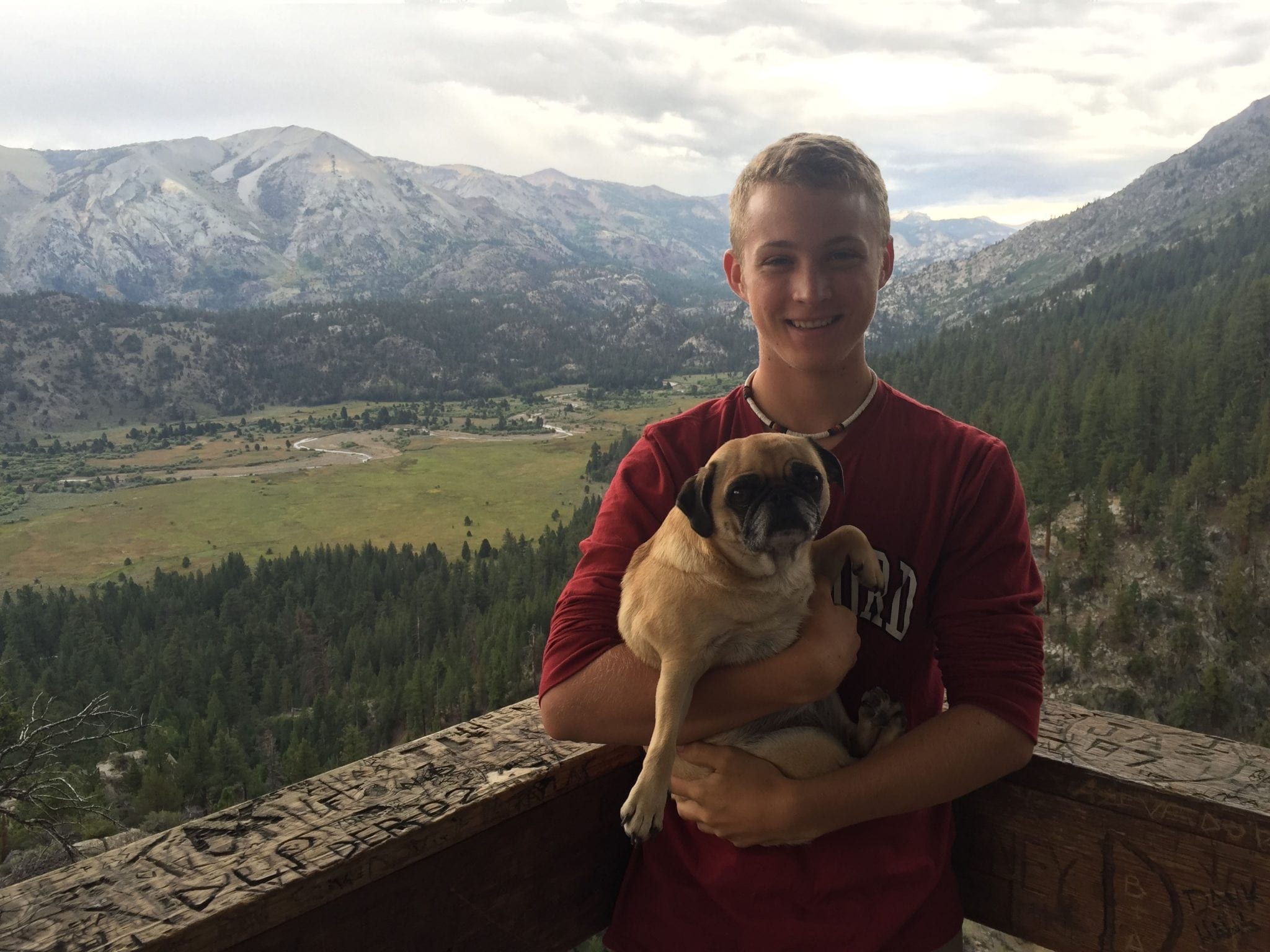
Check out last months post from handcrafting high school here.
On the way to Barcelona
At the airport in San Diego: May 27
It takes a long time to get from the West Coast of the U.S. to Barcelona. We left in the evening of the 27th from San Diego, flew to San Francisco, next stop Frankfurt (I love Germany!), and finally we arrive in Barcelona in the evening of the 28th. I plan on sleeping most of the way! Hopefully… Sean will probably watch movies the entire way.
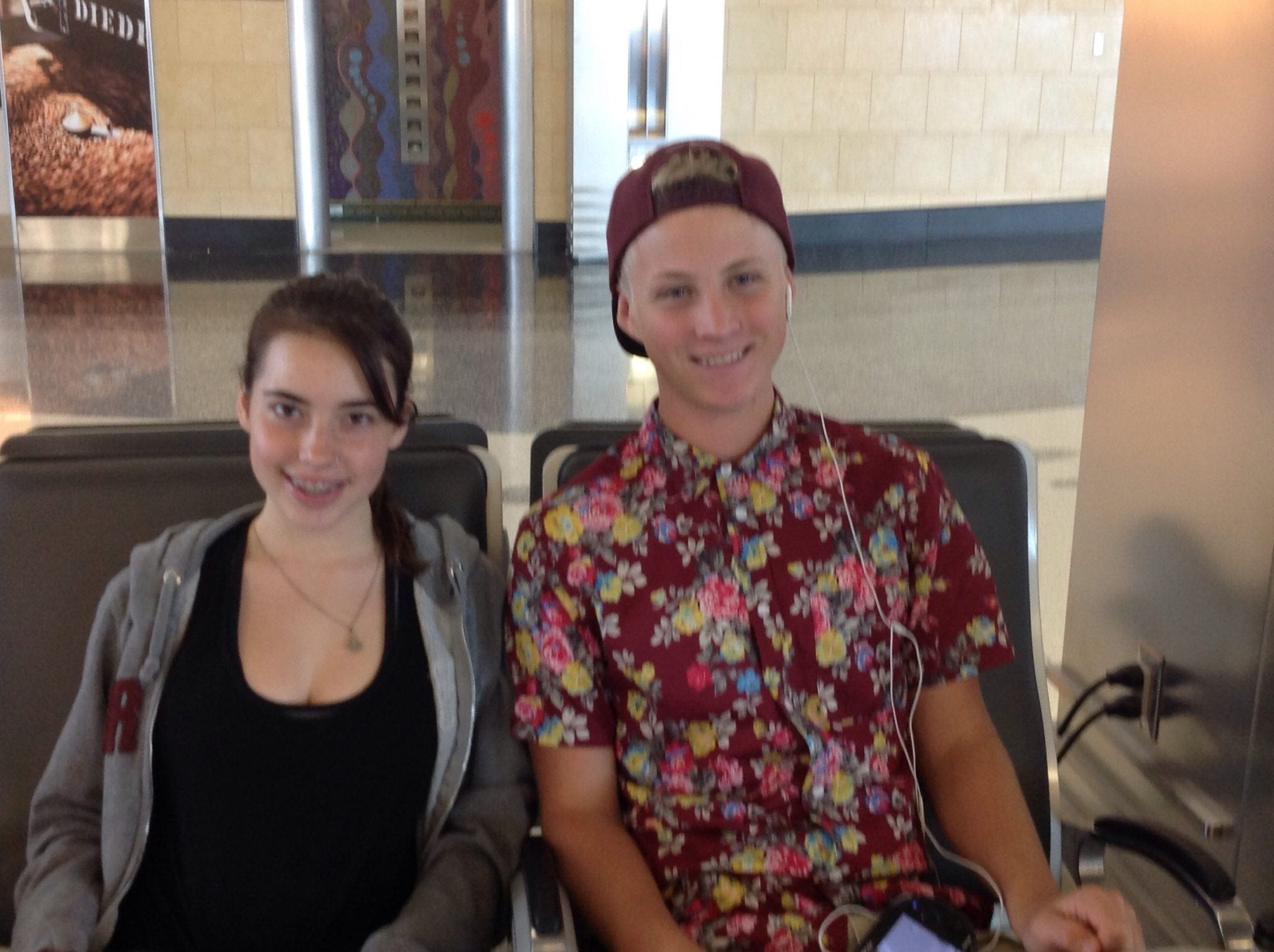
This trip we are taking, Sophia, a friend of ours with us. We have asked friends of Sean’s if they want to go on trip with us before, but Sophia is the first to say, “Sure, I am okay being away from my family for almost 4 weeks.” It probably helps that she and I are super close! I had to borrow someone else’s daughter to have one to travel with us. Good thing I have 2 granddaughters!
Sophia and I are dressed in black in super comfie clothes. No makeup either. The photos will of Spain in a day!
Made it to San Fransisco with no problems. There was a problem with engine 4 on the plane leaving for Frankfurt. We left 3 hours late from San Francisco, but we made it safely which is what really counts. I won’t bore you with the details, but that delay made us late for our connecting flight to Barcelona. The new flight we were put on was delayed… 24 hours later.
Good things Barcelona is a late night city! 😉
It is 2:42 a.m. in Barcelona. We walked around a bit, but Sean wanted to come back so he could sleep.. Sophia probably would have walked more, but she was too nice to tell Sean that. I would have walked much longer, but I Jim was ready to sleep too. Wait until you see photos of where we are staying. I found it on Aire B&B.
P.S. Typos will happen in my travel blog. I just don’t want to take the time to put every comma where it belongs. I am sorry if that bothers you. 🙂
Check out my previous post about our trip here.
Handcrafting 10th grade: The Plan for 2015/2016
Eclectic? Absolutely! Academic? Of Course! Innovative? You Know It!
It’s Organic, Too! (I am a chemist, after all! ;-))
History: American government & politics with writing
History and the upcoming election will be the main focus this year.
- The Homeschool History Project – This is a name I came up with. Sean is designing a website to go with it. I posted about the Homeschool History Project in a separate blog piece, https://blairleeblog.wordpress.com/2015/05/25/the-homeschool-history-project-handcrafting-high-school-year-2-american-government/
- If James, Sean’s 30 year old brother, gets his campaign finance reform NGO started, volunteer once a week for him.
- Big History with online group – https://www.bighistoryproject.com/home – Sean will be doing a lot of history this year. I probably wouldn’t have him also do this, but both of us think he will enjoy and get a lot out of working with a group of homeschooled kids. So it is just a year with a lot of history!
Computer Science
- Work for Thoughtstem, http://www.thoughtstem.com/home
- I let Sean choose between designing a website by himself that will be live by the end of the school year, 2016, or take a series of three courses at UCSD Extension focusing on learning to program in HTML and CSS. He chose designing a website. He already has put in some time on The Homeschool History Project website, and he is enjoying the project. It was getting to be too much to do everything and something had to give. He wants to focus on politics and crew this year, and I can’t blame him. I do to, at least the politics part.
Lit analysis
These will be in addition to the book club books. These are not in the order that they will be read. Before I tell you what the list is, I thought you might be interested in the process I use to decide what books are going to read over the course of a year. I look for books with content that is relevant to what we are studying. I narrow these down based on the quality of the writing, and how likely someone of Sean’s age is to get through the material.
- Beloved, Toni Morrison – http://www.amazon.com/Beloved-Toni-Morrison-ebook/dp/B000TWUTYG/ref=sr_1_1?s=books&ie=UTF8&qid=1432508313&sr=1-1&keywords=beloved Yeah, we’re going there, and Sean is never going to think slavery isn’t as unbelievably terrible an institution as it is.
- Blood Meridian, Cormac McCarthy – http://www.amazon.com/Blood-Meridian-Evening-Redness-International-ebook/dp/B003XT60E0/ref=sr_1_1?s=books&ie=UTF8&qid=1432508385&sr=1-1&keywords=blood+meridian – We are also going to look at how badly Native Americans were treated. I understand that some of the themes running through Beloved and Blood Meridian are for a mature audience. I decided with the first two books on this list that we would deal with the disturbing content when it comes up. They are a part of our history. One of the things we will study while we are reading these books is how government policies enacted at the beginning of our democracy and throughout the subsequent years that were designed to be discriminatory have continued to have negative impacts to the affected people and our country as a whole.
- The Grapes of Wrath, John Steinbeck – http://www.amazon.com/Grapes-Wrath-John-Steinbeck-ebook/dp/B001BKTEZA/ref=sr_1_1?s=books&ie=UTF8&qid=1432508428&sr=1-1&keywords=the+grapes+of+wrath – This will be read when we are working on the environment unit of Earth science.
- The Book of Unknown Americans, Cristina Henriquez – http://www.amazon.com/Book-Americans-novel-Vintage-Contemporaries-ebook/dp/B00H6JFIGO/ref=sr_1_1?s=books&ie=UTF8&qid=1432508471&sr=1-1&keywords=the+book+of+unknown+americans – This book does an excellent job of showing how people are marginalized when we look at them as other, and the real problems with stereotyping people and treating them as if they are all the same because of similarities of skin color, race, or nationality. We will couple this by watching El Norte. A powerful movie that I still remember watching when I was in college. Here is a link to a review of it, http://www.rogerebert.com/reviews/great-movie-el-norte-1983.
- Words Will Break Cement, The Passions of Pussy Riot, Masha Gessen – http://www.amazon.com/Words-Will-Break-Cement-Passion-ebook/dp/B00DMCW1SM/ref=sr_1_1?s=books&ie=UTF8&qid=1432508529&sr=1-1&keywords=words+will+break – We will read this book early in the year. I think it’s important for Sean to understand you don’t just stand up for what you believe in when you can win. Sometimes you do it because of the strength of your convictions.
- Self-Evident Truth series, Michael Clay Thompson – http://www.rfwp.com/series/self-evident-truths-series-statements-of-equality – The four booklets in this series examine how language has been used to change the way we look at the world.
- Book 1: Thomas Jefferson, The Declaration of Independence
- Book 2: Abraham Lincoln, The Gettysburg Address
- Book 3: Martin Luther King Jr’s, I Have a Dream speech
- Book 4: Barack Obama’s speech about race, An Issue This Nation Cannot Ignore
- Outlaw Platoon, by Sean Parnell – http://www.amazon.com/Outlaw-Platoon-Renegades-Brotherhood-Afghanistan/dp/0062066404/ref=sr_1_1?ie=UTF8&qid=1432508637&sr=8-1&keywords=outlaw+platoon – Here are my thoughts after reading this book. “There are so many layers to Outlaw Platoon. It is a book about war, a book about what it means to be a leader and a hero, and a book about what it means to be an idealist in a terribly real place and time. Every American should read this book so they have some idea what we are asking soldiers to do in these far off places so far removed from home.”
- How to Read Literature Like a Professor, Thomas C Foster, http://www.amazon.com/How-Read-Literature-Like-Professor/dp/0062301675/ref=sr_1_1?s=books&ie=UTF8&qid=1435938339&sr=1-1&keywords=how+to+read+literature+like+a+professor. Early in the year we will read this book so that Sean can benefit from it as we read the other books. I think this book should be essential reading for teens who might take the SAT or ACT. I do not think that is the only reason to read it though. It is in interesting insight into the techniques and tropes used in literature.
Blog
Write a weekly blog post for Sean’s blog WiseBread, https://wisestbread.wordpress.com/2015/05/, about the following topics
- Once a month – the election and volunteering
- Once a month – homeschooling
- Twice a month – Sean will choose the topic
Thinkwell geometry
http://www.thinkwellhomeschool.com/products/geometry
Crew
It is the first year on the varsity team! http://www.sdrcjrs.com/
Geology
There are several components to this.
- We will be using my text along with a text I found that uses data analysis for situations in geology. The book has students work through and interpret the data. This logical analysis of science data will be a great compliment to what we are doing in politics.
- Sean will be scripting, producing, and directing 10 min. videos of me going over the more difficult topics from each chapter.
- Sean will be editing my final draft of Astronomy and Earth Science 2 as he works through it.
There are four academic pursuits that will be woven throughout all of the above
- Analyzing written material and pulling meaning from it
- Tight writing
- Being able to formulate an opinion and state that opinion clearly while using supporting statements
- Work on the skill of logically analyzing written and oral arguments where someone is trying to convince you of something. Try to ferret out when someone states an opinion as if it is a fact. Pay attention to the logical process used to form the opinion and how well the facts support the opinion. Study the quality of the sources used to support the argument.
I am not sure exactly what, but something with Thom Jones at Crime Scene Camps, http://www.crimescenecamps.com/onlineclasses.html. I promise you, I am not getting free classes or materials from Thom. His classes are that good!
FYI, Homeschooling High School Rocks!
Check out this Real Science Odyssey Lab Photo Journal here.
Handcrafting High School: Year 1, Month 7
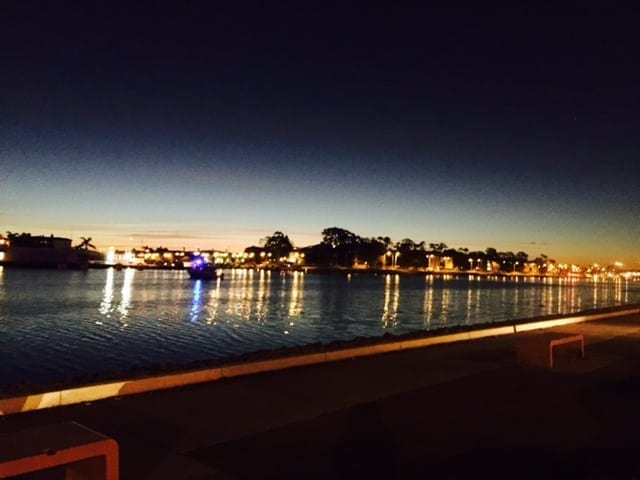
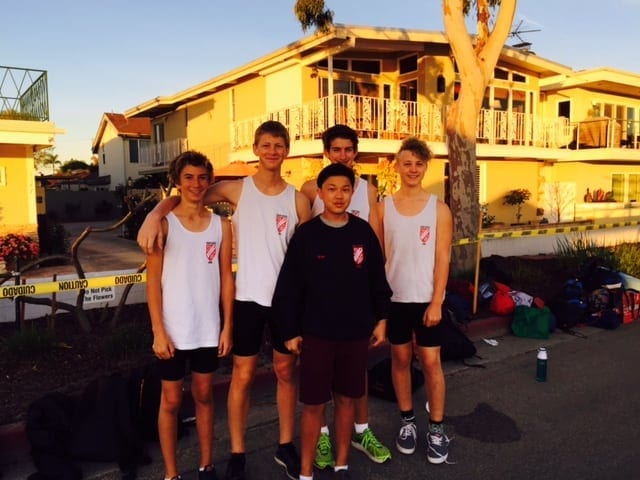
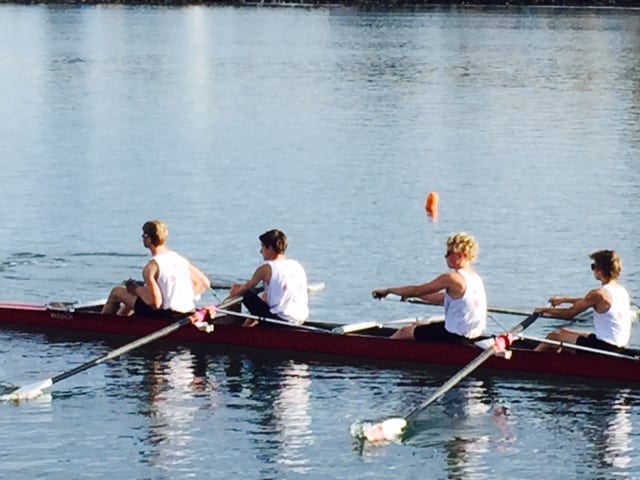
Some months a handcrafted education looks like a carefully detailed pattern has been followed as if I bought something from Butterwick, cut it out carefully, pinned everything meticulously, and sewed all the pieces exactly to Butterwick’s specifications. Other times a handcrafted education looks like a crazy quilt. It has a little of this and a little of that. It looks like I ran out of the fabric that I was planning on using and began to wildly improvise. This month looked and felt like a crazy quilt. It was productive, satisfying, and dizzying. We crammed in everything that we could, with some left over spilling out into the future. (There’s always the summer months, LOL!) But hey, that’s homeschooling! I worked hard with scheduling this month so that between academics and rowing Sean could still have time with his friends. Rowing is a big time commitment, in part because we live an hour away from where he rows. In fact, in April we are moving 55 minutes closer to rowing. We love the house we live in now. It is nicer than the one were moving to, but to cut 1 hour and 50 minutes of driving time out of our day 5 to 6 days a week is big. I can’t wait!
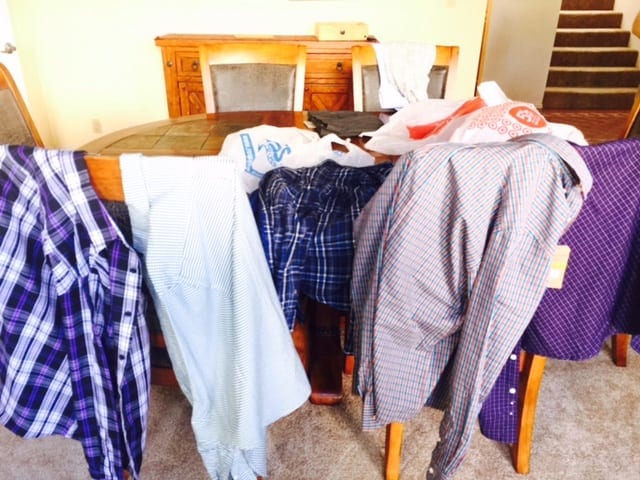
Jim, “When I was shopping for shirts there were a lot of plaid shirts. They must be in style now.”
Blair, “That much plaid will never be in style honey.”
Part of the crazy schedule was because my husband, Jim, went to the Women’s Conference at the United Nations in New York City in March. Jim usually does most of the driving, taking Sean where he needs to go. Jim was at the Woman’s Conference because he believes that gender equality and women’s rights are critical issues that need to be addressed to solve many of the problems in the world today. He wanted to learn more about what women from different countries felt were the key issues faced by women. He thought this would be a good place to get a feel for that. Jim has been working on his Masters for a few years now. He is getting close to the end. His Masters is in International Relations. It may seem hokey but in our house we spend time talking about things like how to make your life matter and making the world a better place for our kids and grandkids (and yours too). My husband hopes to use his Masters as a way of doing that. I don’t know what we will do when Sean goes away to college. One of the things we’ve talked about is joining the Peace Corps.
Academics
Computer science
Sean finished the second quarter of computer programming with C/C++. The first two weeks of March were the last two weeks of the class. The amount of work assigned for those two weeks was intense. There really was no way to get ahead in this class, because each week there were 2 to 4 programs to write and an open book quiz that was really hard. So each week you were writing programs for that week’s assignment. Sean put in 12 to 14 hour days 6 days a week for the last two weeks. I insisted that he take 1 day off each week. At one point we debated about having him take the next quarter of the series, and then decided we were being ridiculous about it. He needed to have time for his other subjects, and he was getting burnt out about computer programming.

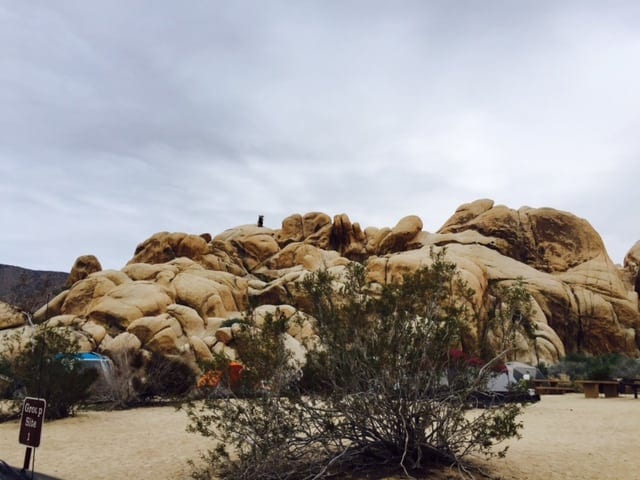
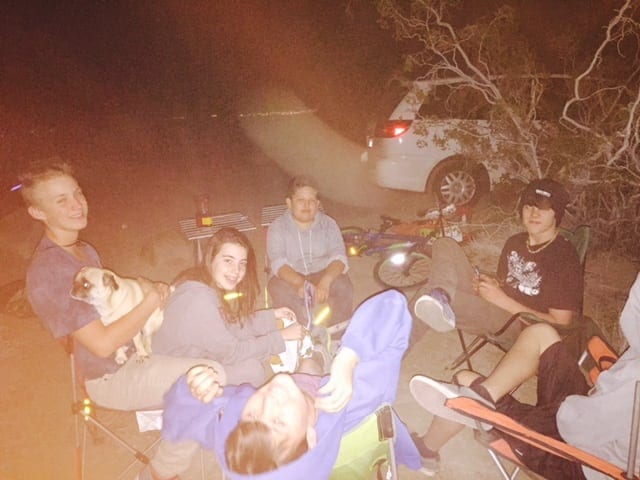
I asked Sean to think of a project that he would like to work on in computer science to finish out the academic school year; something that he thought would be fun. He told me he wanted to design a website for a history project that we are going to do for the next school year. It is an idea that I came up with and when I originally suggested he design a website for it, it was as an academic exercise for him so that he could apply what he has been learning. (A WordPress blog would suffice for the project, but I would have set that up not Sean.) I think the application of knowledge is an important step in the learning process and one that is often overlooked as we cram subjects with information that is supposed to be memorized without applying it. Sean told me he needed one solid day to work on the website every week. I am glad he picked this project, because the last half of March saw him becoming enthused about computer science once again. Yay, his passion became a passion again! As far as all the hard work and cramming, wow, does he know a lot more about computer programming! As he has been applying what he learned over the last year, I have been seriously impressed. Even though I have no idea what he’s doing most of the time.
Math
When Sean and I realized the amount of time computer science was going to take we took a break from the rest of his core academic subjects. Sean continued taking Law and History in Context. The other two “non-play” related things he continued to do were rowing and working every other weekend teaching kids computer programming.
Both Sean and I had a big surprise when he picked his math text back up. For the first time in Sean’s life math poured out of him like water out of a pitcher. My grandmother once told me that in our family math either poured out of you like water from a pitcher it was so easy, or you had to work at it. Math has always poured out of me, and my grandmother and mother, like water out of a picture. Interestingly enough that is not the case for my sister, but it is the case for my nephew, her son. For Sean, he had to work at it just like my sister did. Not anymore, though. Now he can sit down and do what used to be two days’ worth of math in half the time it took him to do one day. Math is now Sean’s easiest subject!
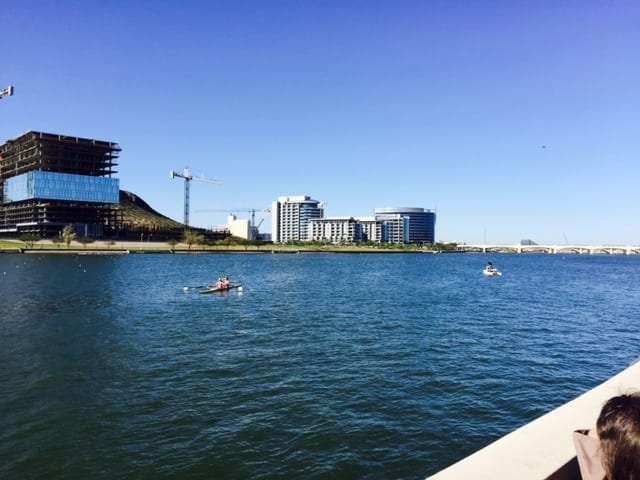
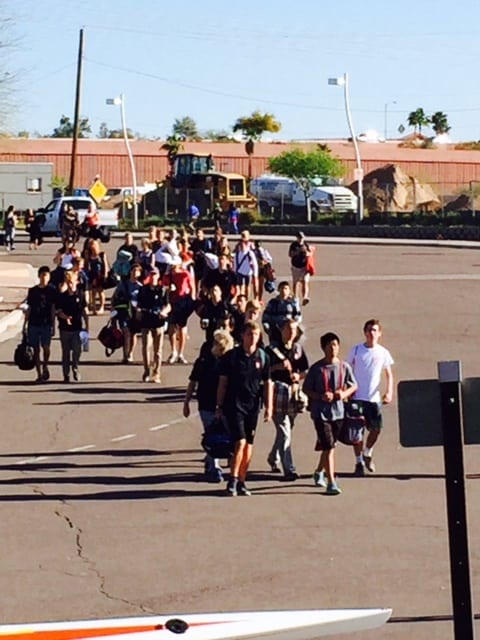
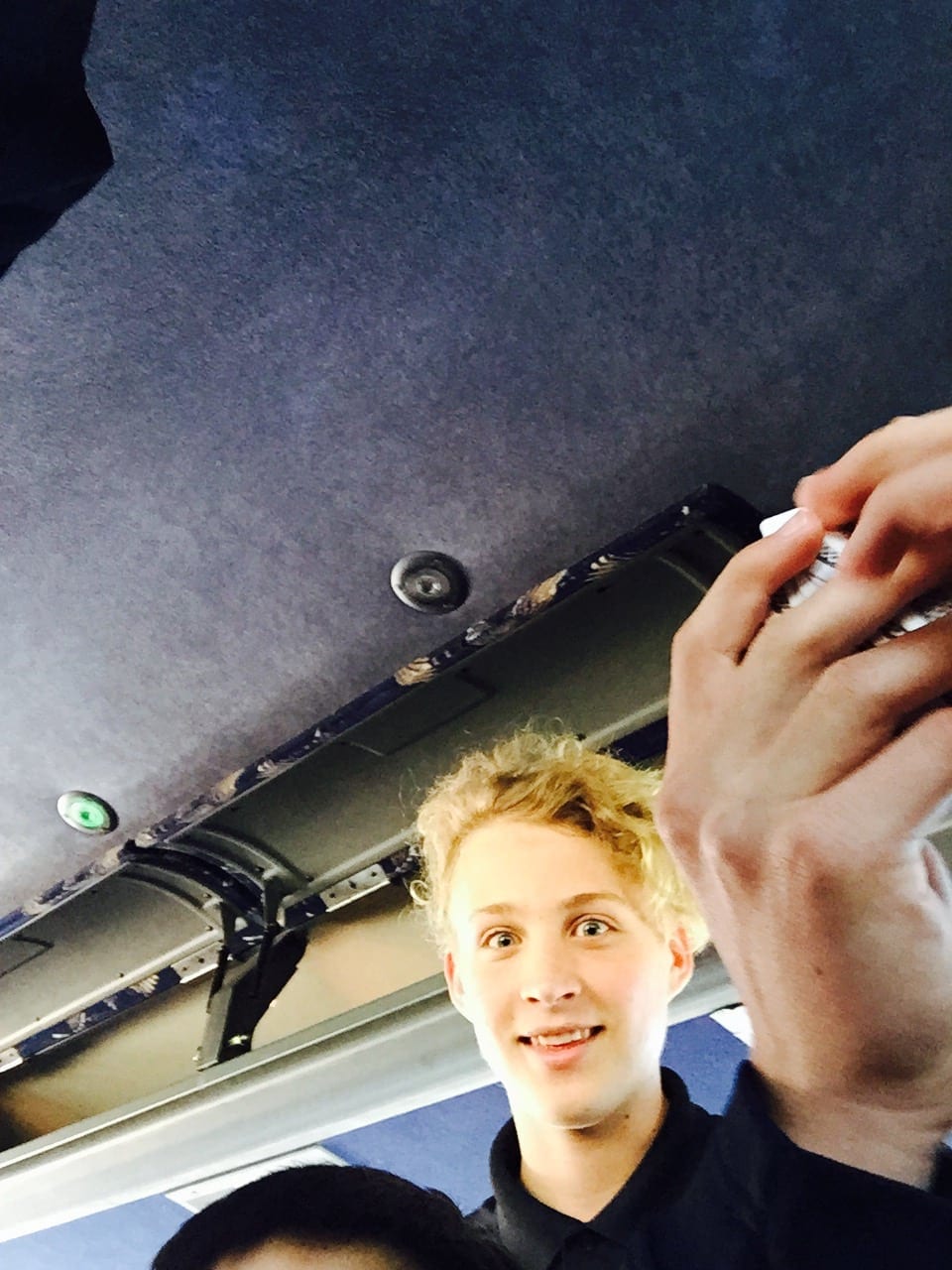
Science
I am so lucky that Sean did high school level biology in eighth grade. Because try as we might I cannot see how we are going to finish the entire astronomy and earth science course this year. Part of that is because Sean has become entranced with astronomy. The course opens as an astronomy and cosmology course and then moves on to become an earth science course. Whereas it is easy to move through math more quickly, it doesn’t make sense to do that with science when someone becomes interested in an area and wants to investigate further. Sean has gotten to the point where he is asking questions about parallel universes that I don’t know the answers to. He has taken all the knowledge I have about the subject, learned more, and is accessing what scientists know or think they know about parallel universes at a level beyond where I am on the subject. It is everything that a teacher could hope for. When Sean was little he used to tell me that I was so smart he was never going to be that smart. I used to tell him that I hoped that he would learn everything I knew and be smarter.
Writing
Writing this year is pushing my panic buttons. I need to go hang out with my dear unschooling friends more. Sean is a very good writer. His main problem with his writing is that he likes to take every writing project and turn it into a big project. Big writing projects take time, lots and lots of time. Something we have not had a lot of this year. Even when he stays within the confines of a five paragraph essay, he tries to cram in as much information as possible, spending hours and days researching the topic. Then me he works for hours trying to get as much of this information into his paper as possible. The problem with that is, the writing isn’t tight. It makes his papers feel like they are not cohesive. The way he puts words together is excellent. As a reader though, you start to lose focus because there is just so much there. It doesn’t sound like much of a problem does it. To become a better writer the formula is very simple level though; you need to write. That is the entire formula. It makes me nervous when we are spending all our time on computer programming and not taking time for writing. I bought the IEW writing program, and it was really simple for Sean. At the end of the day, I do not think it is the best program for someone who already is a good writer and just needs to work on some of the stylistic issues. Some of the stylistic issues Sean needs to work on are big though. Sean does not write a good concluding paragraph. His transitions going from one body paragraph to the next are nonexistent. And he is not careful about making sure that his introductory paragraph has a lead in to each of his body paragraphs. Just as I was starting to worry, along came something very serendipitous. This type of serendipity is actually been the hallmark of this year.
One of the only perks I have ever gotten from all my writing came along this month 😉 I had the opportunity to preview a section of the High School American History Course that my publisher Pandia Press is working on right now. It was not until we had been working with this course for a week that I realized in addition to teaching history the author of the course is attempting something ambitious. She is completely successful in her attempt too. In addition to teaching American history, the author weaves study techniques and the skill of writing nonfiction essays throughout the course. If you take the time to use the techniques she is presenting to students in the student guide and the teaching techniques she gives you in the teacher’s guide, the course can be used as a history course and the bulk of a writing course. The benefits to integrating writing with another academic discipline are similar to what I was talking about when I said it was important for Sean to apply the computer programming skills he learned. I think that to take interesting topics or even just those that are assigned and apply writing skills in a meaningful way is the best way to learn writing. It also makes the academics more integrated, which both Sean and I prefer. I also have Sean write lab reports, and take some notes in science. Sean really likes to write fiction, so I give him time each year to work on his fiction writing too.
Travel Plans
2014 was the first year in a long time that we did not travel anywhere. We had planned on traveling in the fall of 2014, but rowing got in the way. One of the things we did this month was to figure out where we are going to go this summer. Rowing is a nine month a year commitment. And Sean wants to stay committed to it next year. So we have to do our travel during the summer when there is a break from rowing.
On May 27, we leave for Spain for three weeks. I will be blogging every day as we travel. There will be a couple of posts before we leave. We are also going to take the month of August and take a driving trip through the northern part of the United States. We will be stopping at some of the national parks along the way such as Yellowstone. We will be at the Oglala Lakota reservation called Pine Ridge in South Dakota in the middle of August where we will volunteer for a week helping to build houses for the residents there, http://www.re-member.org/. I will also be blogging every day of that trip.
Check out our post on teaching high school and middle school physics here.
Handcrafting High School: Year 1, Month 6
Oh my goodness! What a busy month February was for both Sean and me. There were times this month when I felt like I barely had time to breathe. I actually realized TWICE! that I had showered and forgotten to shave. I remember being super busy close to the end with biology too. There is a point when writing a book where I can see the finish line, and I am ready to be there, so I work as hard as I can even at night. I did not finish it this month, in case you are wondering. (The book has yet to be illustrated or edited by anyone but my husband Jim, Sean, and me. So do not start looking for it soon.)
The photos are a series of memes I found on my computer this month. Put there I am sure because of a back and forth Sean and I have going on, “Is it meant to represent a prism separating light into its individual wavelengths, or Pink Floyd’s the Dark Side of the Moon?” This all started when I bought a pair of pajama bottoms for Sean, because I thought it was cool Target was selling scientifically themed clothes. When Jim and Sean saw them, they immediately said, “Dark Side of the Moon, cool!” I disagreed! Unfortunately they were correct about Target’s intent, but I didn’t give up right away. So… memes and a bit of teasing.
Sometimes this year the academics have come together and Sean has seemed to just “get” it. That was what it was like with computer programming and math in February. Everything just jelled. This was good because Sean needed lots of sleep this month. There have been many days when he was tired all day, ravenously hungry, and extremely grumpy. TEENS! He must be growing again.
On every level, I was happy with our handcrafted homeschooled education this month. I think of the process I use with Sean as similar to how I would create a recipe. I love to create recipes by the way. I almost went into chef school instead of becoming a chemist. There are a lot of parallels between cooking and chemistry. I cannot tell you how many times my family has told me that they love something I made, and I have said, “Hmmn, I’m not sure if I can re-create this recipe. I changed so much, and I didn’t write down the specific amounts for what I used.”
Computer programming is a good example of this. Sean was going to take 3 quarters of programming this school year. Last month I told you he was going to take a break, and not take a class in Spring Quarter. Then he changed his mind, and decided to take the class. Because he has been so grumpy this month, I sat him down and asked what was going on. (Besides the obvious, which is puberty.) It turns out, it was because he really didn’t want to take the class. He has a friend taking the class with him, which makes him want to take it. He thought I wanted him to take it, which made him want to take it. I told him I only wanted him to take the class if he wanted to, but I did want him to do something computer related. The upshot is, he will not be taking the class. He will be designing a website. It was time to tweak that ingredient, exchanging it for something else.
Sean has continued to enjoy the law class and the history class. For one of the classes, Thom, who teaches both, asked Sean to choose a historical event that interested him and learn more about it. From there they talked about the different ways that historical event is portrayed and perceived. It was a great lesson, made even more meaningful because Sean chose the event they focused on. He devoted a couple of days learning about the Watts riots. It is wonderful when Sean becomes captivated with an area of study, coming to me to tell me about what he has learned.
Sean suffered from migraines several days this month. It has been a couple of years since he has had so many in one month. We are lucky we homeschool. It must be difficult for kids who suffer from migraines, who have to attend regular school. One day Sean could not get out of bed. He wanted to lay there curled in the fetal position, sleep, and listen to a book on tape. So he did. On other days when he suffered from migraines that were not as bad we went geocaching or he read. He went to rowing all but one of the days. Rowing helps with the migraines. At first they were a trigger, but after a while they helped alleviate the symptoms and cut down on the incidence of the migraines. His doctor told us this would be the case, so we toughed it out for the period early on when they triggered the migraines.
We heard back from Stanford. Sean was accepted into their pre-collegiate summer session. He will spend three weeks studying Computer Simulations and Interactive Media. I’ll be honest and tell you, I’m excited for him. I’m not excited because I think this means he’s going to end up getting to go to college at Stanford. (Sean has no idea where he wants to apply to college, other than he wants to go somewhere with a crew team.) I am excited because of something I was told once about Stanford.
The daughter of a friend attended Stanford’s Online High School. They were not homeschoolers. Her daughter had always done very well in school. She was on the ski team, and wanted to have more time for skiing. She also wanted to challenge herself academically. Stanford’s online school gave her the flexibility to ski more, coupled with rigorous academics. I asked her what the teaching was like for the on-line classes. She told me that the teachers she was working with were the best teachers she had ever had. She said they made her think of things and look at topics in new ways. She told me that these teachers had opened her eyes to new perspectives. This is why I am excited for Sean. I hope he has a similar experience. I think it likely, given that Stanford cannot tell you exactly what your child will be working on, because they put together a planned project based on who attends. They look over the strengths and passions of the kids who will be in a session and plan what the project will be based on those students. It sounds like the homeschool version of learning, doesn’t it?
As I mentioned last month there were several essays as a part of the application. We went about this part of the application informally at first. Sean and I started conversationally without any paper or computer in front of us. I would ask Sean one of the questions he needed an essay for, and he would answer orally before writing them down. I used this approach because I wanted the real essence of him to come through. When Sean answered the questions on the application I did not want the focus to be on what he needed to write to get into the summer program. When Stanford sent us the invitation to apply, the only thing they knew about Sean was that he was a high school aged kid who had done well in a couple of computer science classes. They did not know one other thing about him. It’s possible that their summer program wouldn’t be a good fit for him. And if it wasn’t a good fit for him, it wouldn’t be worth taking three weeks out of the summer to go to it. I was completely surprised by some of his answers. I got to know him better through this process. There was no right or wrong answer, and I did my best not to steer him in any direction. If he was stumped on an answer I would say, “This is what I think they’re asking.” Then I would rephrase the question, but not in a way that introduced my bias. Again it was important to me to make sure Stanford was a good fit for him. If they didn’t want him because of something he answered in his essay, that would be okay. Whether a program or a college is a good fit works both ways, and not every place or every program is going to be a good fit for Sean or anyone else for that matter. I don’t care what the name is on the logo, if it isn’t a good fit it’s not worth spending the time, the money of life, participating in it.
Here are some excerpts from his essays. These are not all from the same essay, or for the same questions.
I thought this was a clever perspective
“When I was little, I loved building with Legos. Using algorithms and data structures is like building with Legos where you take one piece, add another in just the right place, and you keep adding pieces until you have built something from them. With programming it is even better than with Legos, because you take 2-dimensional characters on a screen, adding them to each other and putting them in just the right place, to build something important people can use.”
I was totally surprised by this one.
“In many ways I am your typical straight A student…” How would he know what a typical straight A student is like?
This is my favorite passage, and it blew me away. I flat out had no idea why Sean was always dragging us into art galleries. In case you are wondering, neither my husband nor I on our own visit art galleries or museums. Sean has always enjoyed visiting them, so we do. For a long time he mispronounced museum, musaam. He was constantly asking to visit “musaams”. One of the things my husband Jim values most about homeschooling is how homeschooled kids seem so much more comfortable exploring their passions and differences. Jim thinks this is because they do not have a peer group telling them something is uncool. How many 15 year old boys would admit to wanting to travel the world visiting art galleries and museums. I can think of some besides Sean, and they are all homeschooled!
“These are only a few of the things I have learned and seen while traveling. Every time I see or learn about something new, the world gets both bigger and smaller at the same time.
It is the same thing when I go to art galleries. In every country and town we go to, I visit art galleries, large and small. When I visit art galleries, I do not look at each piece for its beauty. I look at them to try to understand what the artist’s intent was. This is what traveling does for me. It is almost spiritual as it opens me up to the intent of other peoples, cultures, and times. To me the world is a rich tapestry that I am fortunate enough to be traveling through.”
I wanted to celebrate Sean’s acceptance. So we took a day to visit The Art Museums in Balboa Park, near where we live. On the way there we walked by an artists village. Sean wanted to stop there first to check out the living artists. We never made it to one museum. We spent the day wandering through the village, talking to artists, and watching demonstrations. Glass blowing looks fun!
I was too busy to read much this month that wasn’t research for earth science.
Both Sean and I read:
Golden Son
This is the second book in the Red Rising trilogy. It is even better than Red Rising. I can’t wait for the next book to come out!
Will Shortz Presents Challenging KenKen
I love KenKen when I am really busy. I like to read or work these sorts of puzzles to unwind. KenKen is better than reading if I have things to do in the morning, because I do not get sucked into them, staying up until 2 or 3 a.m. to finish them.
Check out our 5 month update here.
Handcrafting High School: Year 1, The First Four Months: Crew
Crew: Once There Were Vikings, and that Is the Last Time Any of Sean’s Relatives Rowed!
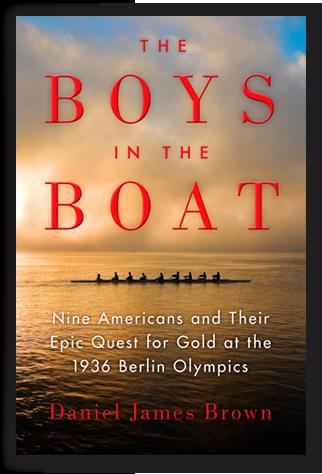
Rowing, or crew as I am just beginning to call it, has been the surprise favorite this year. My husband’s grandparents emigrated from Norway, but they were farmers there and in North Dakota where they ended up. The last relatives in our family that we know of who rowed were Vikings. In fact, everything I know about this sport I have learned from watching my son compete and reading the book The Boys in the Boat, by Daniel James Brown, which is a good read. Honestly I don’t even know the prow from the stern (I think I got those terms right). 😉
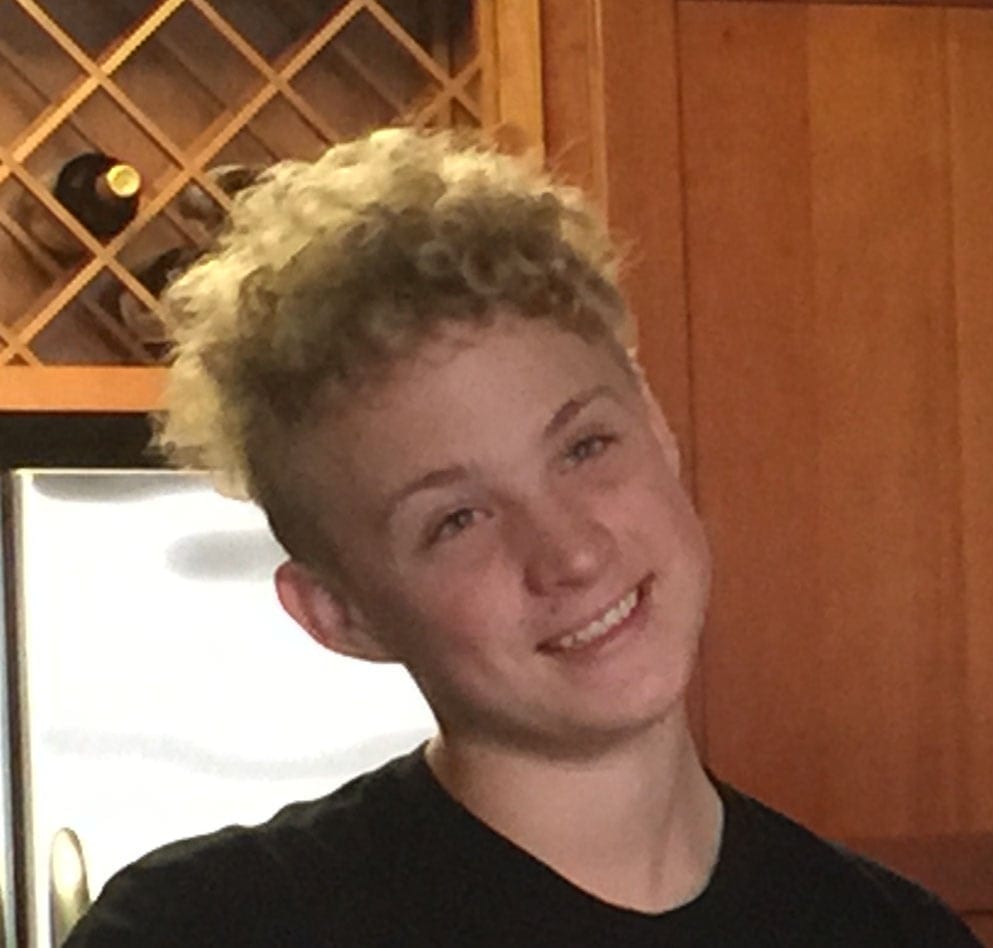
Crew is a physically intense, demanding sport, something we have learned Sean likes very much. The harder the coaches push him, and the tougher they are with the workouts, the happier Sean is. Sean likes everything about rowing. He likes the camaraderie with the other kids. He likes how it is a team sport but that it asks a lot from each individual in the boat. He likes his coaches. He likes the venue in Mission Bay. And he likes the club, The San Diego Rowing Club, SDRC, http://www.sdrcjrs.com/. He has even come to like the nickname his teammates gave him, Broccoli, because of his curly hair.
Rowing was not a planned class. Another homeschooling parent posted that there were free rowing tryouts for 1 week to see if kids liked the sport. I had been trying to get Sean interested in something athletic for the better part of a year, ever since he got healthy again after breaking his ankle. Sean is a person whose mental psyche benefits greatly from regular exercise. I know everybody benefits, but with him it is immediately noticeable, and he’s an awful grump when he is not regularly exercising. He told me he would try rowing, but then changed his mind. Luckily, I forced the issue.
Since the beginning of September, rowing has become a part of our life. Most of the kids who do what is called crew, not rowing, are not homeschooled. Crew practice is from 4 to 6:30ish every weeknight, with an optional practice from 8:30 to 11 most Saturdays. Several of the Sundays have races on them. Sean is on the Novice Men’s Team. It is a team of boys who are high school freshman or who are in later grades in high school but have never rowed before. Next year Sean will automatically graduate to the Varsity Team.
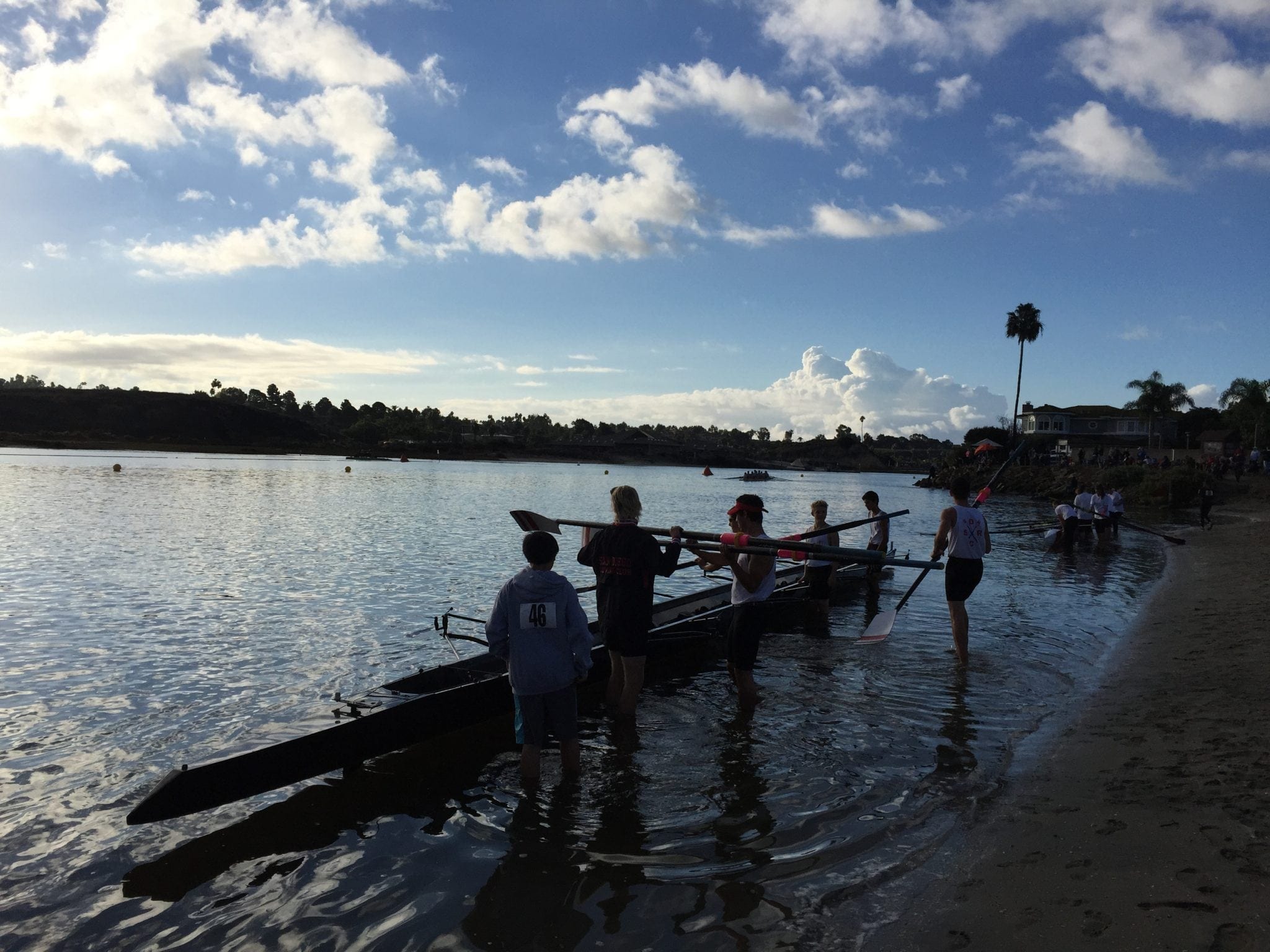
My husband and I took him to the first tryout. We sat in the car and watched this crazy, intense, challenging workout. About halfway through, the two of us looked at each other and said, “Oh, he must be hating this. We should make him stick with it for the first week just to see if he likes it though, okay.” When Sean got in the car the first thing out of his mouth was, “Best sport ever!”
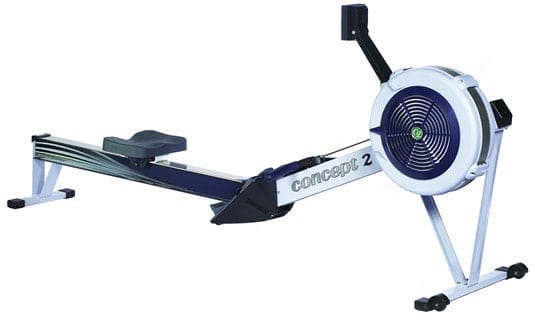
It might surprise you to find out that athletics is a reason we are lucky that we are homeschoolers, but not for the reason most people mean when they say that. For many years, Sean was on a competitive ski team. He was on the race team, then after much begging on his part he moved over to the Freeride team, what a lot of people call the trick team. Sean was very injury prone. Sean has broken his nose, his ankle, both his heels, and the pinky fingers on both hands. More significantly, Sean has also had two complex concussions. You might think from reading this that we are negligent parents who just kept throwing him back out there, but some of these injuries are from things like hopping across a creek while playing tag with friends.
The first complex concussion he suffered was in an event where he was jumping and he over rotated on the jump. He landed on his nose, breaking it, and suffering a complex concussion. It was the worst thing I have ever witnessed in my entire life. The second complex concussion was a freak accident where he turned out of the way to avoid a snowboarder and into a tree. Once you have one complex concussion you are much more susceptible to others and you get them from a much lower force of impact. I won’t go into the details of what it was like having a child with a complex concussion. (It was a dark time for us, though. I could relive it in talking if it helped someone, but not in writing.)
When Sean went to the concussion specialist, the doctor asked me how good Sean was at school. I replied that he was a good student. The doctor told me that was good because Sean needed to take the rest of the school year off. Sean injured himself in the first week of February. Your child can’t do any academics if you want his or her brain to heal completely. Sean wasn’t allowed to read. He couldn’t exercise. He was unable to do simple math tasks. He couldn’t even play video games. According to the doctor, all Sean could do if we wanted his brain to heal completely was watch TV, and only if he was watching shows that didn’t require any mental focus. If Sean went to traditional school he would have missed so much school, he would be a grade below the rest of his same age classmates. Between the two complex concussions, Sean took almost a year off school. The only left over effect from Sean’s concussions is trauma induced migraines. That and he cannot participate in any sport where there is a risk of getting another concussion.
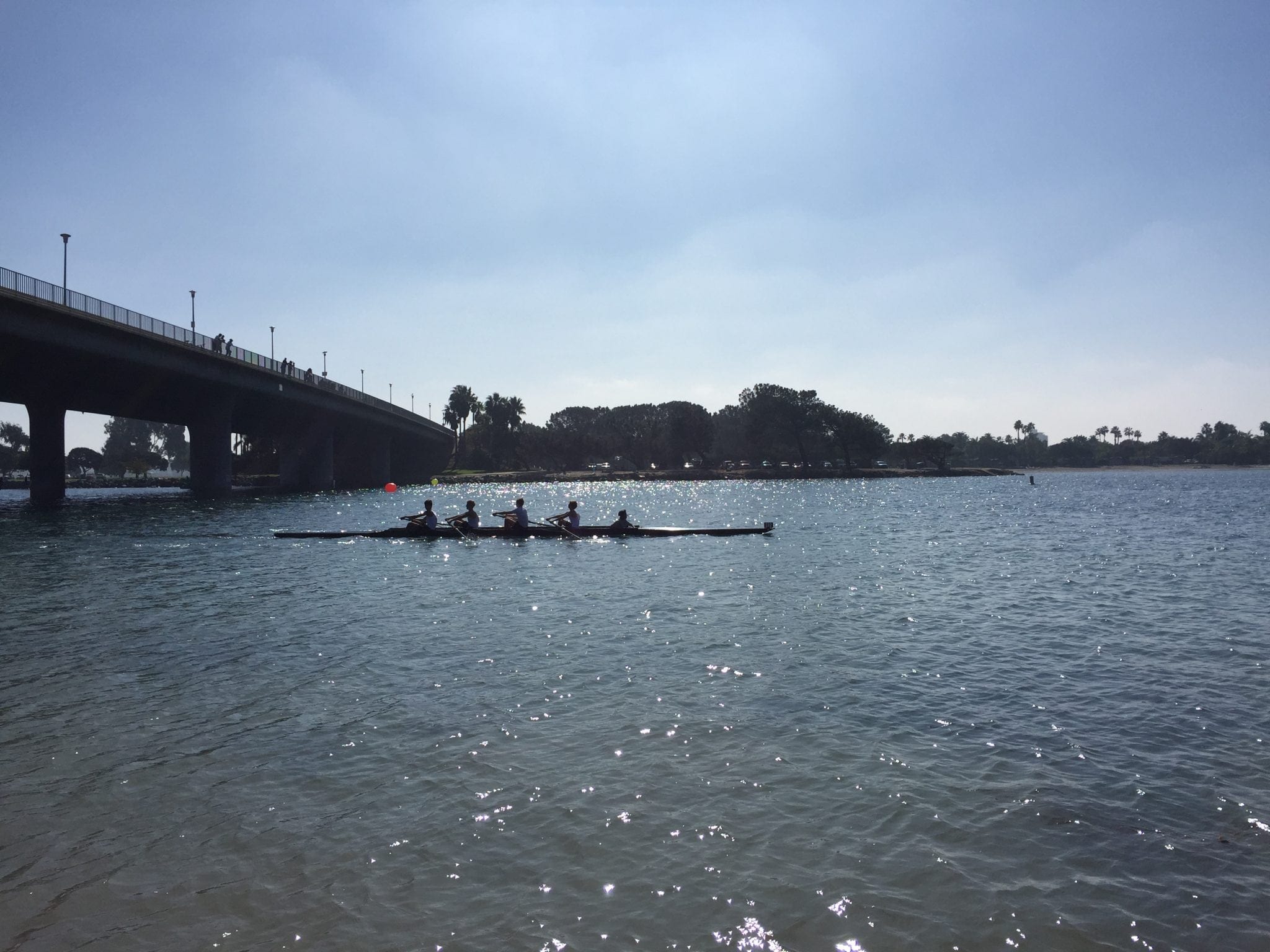
It’s hard to imagine how you could get a concussion participating in crew. (Now I am imagining how a boat could fall on his head while carrying it to the water!) I have been skiing since I was two years old. Sean also started skiing when he was two. Sean, my husband, and I really, really love to ski. I was lucky enough with my skiing that I never seriously injured myself. My son wasn’t so lucky. Sean’s mental health is linked to his participation in intense physical activities. When he is not participating in them, he gets very down. When he is participating in them, he is sunny, joyful, and very humorous. If you have a kid who needs this sort of physical activity then you know what I mean. It is like turning a light switch on and off. Crew is the first sport he has tried since skiing that he loved enough to want to participate in on a regular basis. We are lucky to have found it.
Read about handcrafting high school language art here, and about learning science here.
Handcrafting High School: Year 1, The First Four Months: Language Arts
Language Arts: How We Came to Be Homeschoolers
My son Sean was an early reader; I was an early reader; my father was an early reader; my paternal grandfather was an early reader. We all started reading at about the same age, between three and four years old. I’ve been told by someone who seemed to know what they were talking about that early reading, just like early walking and early talking, is a trait that runs in families. In addition to coming from a long line of early readers, I love to read. When people remember me as a child, the thing they’re the most likely to remember is what a bookworm I was. I still am. When Sean looks back on his childhood, one of the things he will probably remember is all the time I spent reading to him. I would still read to him even now, but he would rather read to himself these days. 😉 You might think that being an early reader would make kindergarten at a traditional school easy. If you think that, you would be right and wrong. Any class is easy if the other students are learning what you already know how to do, but you miss out on the essential skill of learning how to learn, which to me is the most important thing to learn during your school years. If you don’t learn how to learn, when you do get to subjects that are hard, you will not know how to learn the material in them. I volunteered in Sean’s classroom and was bothered when the teacher would call the rest of the class up to the front to do work and would leave Sean sitting working on a coloring page. I didn’t blame her. When Sean started school No Child Left Behind was the law of the land, and she was doing what she had to do. No other child in his class knew how to read. Obviously that was where her attention needed to go. From my standpoint though, Sean didn’t need any more work on coloring. At the first parent-teacher conference his teacher told me, “Well, you have nothing to worry about.” Whether that was true or not was a matter of perspective. His teacher was pretty awesome actually, don’t get me wrong. She followed that comment up with a discussion of what she would do to develop some academic tasks that were meaningful for Sean. At the second parent-teacher conference his teacher said to me, “Aren’t you a stay-at-home mom? Why aren’t you homeschooling? If I didn’t need to work, I would’ve homeschooled my kids.” Before going on I should digress a bit and tell you that I had thought about homeschooling Sean, but I got cold feet worrying that I would fail him somehow, so I put him in traditional school instead. I owe Sean’s kindergarten teacher a debt of gratitude. She is the person that gave me the courage I needed to homeschool Sean.
That Was Then. What about Now?
I break language arts into two main categories, the mechanics and the craft. The mechanics includes spelling, grammar, and writing. The craft includes writing and reading.
The Mechanics: The least favorite, the most favorite, and something new
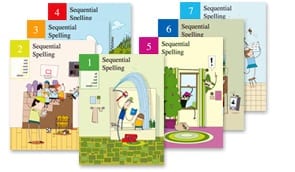
Spelling, the least favorite subject for both of us: Over the past 9 years I have come to HATE‼ spelling. I hate this academic subject with so much passion, heavy sigh just thinking about it. 🙁 Being a strong reader does not guarantee you will be strong at spelling. My guess is that most high school students do not have spelling as a separate class. Sean still does. We have been working through Sequential Spelling for the past four years, and I highly recommend it if spelling is a problem area for your child. It has greatly helped to improve Sean’s spelling. Even with this effective spelling program his spelling is just okay though. Do not use the IPad App btw. It is terrible, and is coupled with even worse customer service. The DVDs are much superior.
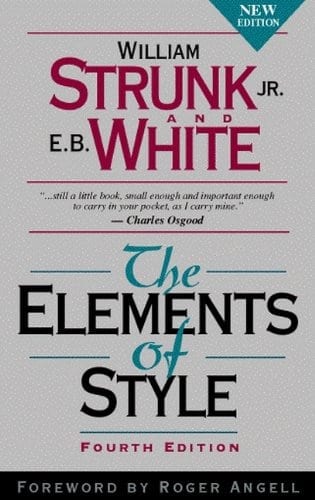
Grammar, the most favorite of one of us: Grammar is Sean’s favorite subject of all time. The laugh is on me, because this was my least favorite subject (until I started homeschooling my son in spelling that is)! Sean has always loved diagramming sentences. Grammar this year started with Sean reading through The Elements of Style by Strunk and White. Sean reviewed the rules for punctuation. “Where is the diagramming, Mom?” “Sorry Sean, there isn’t any this year.” Going forward he will only work on grammar as it relates to punctuation. He does miss the diagramming, but I noticed at the end of last year that he was weak on some of the punctuation rules. I know he misses diagramming sentences, but that particular skill wasn’t improving his punctuation!
The Mechanics of Writing, something new: Sean is incredibly creative with his writing. In the past he has fought any type of writing program that did not focus almost entirely on the creative side of writing. I have been fine with this. The craft of writing, in my opinion, is much harder to learn than the mechanics of writing, but you do need the mechanics. In the past Sean used Michael Clay Thompson’s language arts series and Bravewriter, both of which he (and I) loved and learned a lot from. This is not to say these programs do not focus on the mechanics of writing, but I do not think that is their primary focus. At the beginning of December, Sean and I discussed what to do to make sure he has a good understanding of the mechanics of writing. He needs to make sure he has the skills necessary for the writing portion of the SAT and for his college classes. I was really worried and was going to do something really structured. Sean talked me into compromising and letting what was supposed to a three paragraph essay be a three page story. It turned out my worrying was for naught! The paper was great. LOL! I could have worse problems; I am sure some of you are not sympathetic at all! The Craft: Two beloved academic pursuits The Craft of Writing benefits greatly from a focus on reading: Writing and reading are intertwined at our house. I tease them apart to think of the scope and specifics, such as what books Sean will read, then weave them back together. Writing to me is an artistic endeavor. It is individual, meaningful, and fulfilling. It is also hard. Writing something that others want to read is harder than chemistry! I think it is the hardest subject we work on in school. It is hard to assess as an educator too. Like science, I think the homeschool setting is the best academic environment to work on the craft of writing. To improve your craft with writing, you need time to write without artificial deadlines. I think working on becoming skilled at timed writing (which we are going to work on over the next school year) is a ridiculous waste of time. It is an essential skill because of the SAT, but an irrelevant skill when it comes to crafting writing pieces worth reading! My absolute favorite book about the craft of writing is Wondrous Words by Katie Wood Ray if you are into that sort of reading. So what did we use these past 4 months, you are probably wondering…
- Comics and Graphic Novels (CGN): This is a Coursera Course, https://www.coursera.org/course/comics. Someone recommended it on the Secular Homeschool Teens Facebook group. This course turned out to be much more than I expected. When I signed Sean up for the class, I thought it would be a filler class to get him started. The class turned out to be much more in-depth and meaningful than that. It was an excellent course. Sean and I both really liked the teacher, William Kuskin. Sean spent the first four months of the school year reading the comics and graphic novels recommended in the course.
https://www.youtube.com/watch?v=yLytwSqUReI
The specifics of why I was so impressed with this course. It focused on
- Structure: All good writing has structure. I do not mean, though, that it is formulaic. I mean, all good writing has a structured reasoning for what goes where. Writing is art, so the structure might not be obvious. I have always loved the poems of e. e. Cummings because of the artistry with his structuring of the words he writes. With Sean my favorite author to use when we discuss structure is Gary Paulsen. He is an absolute master at structuring words and sentences to enhance the story. Kuskin spent part of the course discussing topics like the weaving of the illustrations with the words, the panels, the gutters, and shading and the use of color. Then CGN had Sean analyze specific pages of text from comic books and write about what he noticed about their structure. Sean hit his groove with this, noticing things that I did not pick up on until Sean pointed them out. Sean is much more in tune with visual art than I am. I come from a family of visual artists. I am the only writer in the family. Growing up, my family considered me the least creative member of it. My number one fan, my husband Jim, begs to differ with them, LOL!
- The evolution of the genre: Genres of writing evolve and change. This is not easy to show with most genres. CGN is a modern enough genre that the change and growth, the history, can be studied effectively over a four month period. I think it is good for young writers to learn organically that there is growth and development in all writing including their own.
- Literature analysis: There was also a discussion of different genres within the larger, more encompassing, genre of comics and graphic novels. This coupled with the focus on structure led to a decent amount of literature analysis in this course, at least the way we studied it. Sean and I read and discussed several comics and graphic novels over the four months. Some, such as Maus, Planetary, and Hush, he loved. Others, such as Saga and Funhouse, he felt more neutral about. I thought they were all great. He just likes certain genres of CGN better than others.
- Editing the work of his classmates: Many of the students in the class wrote their own short comics as a final project. I printed them out and have had Sean, he is still working on this, critically evaluate each as he reads them.
Don’t just take it from me. This link will take you to other reviews of this course: http://www.coursetalk.com/coursera/comic-books-and-graphic-novels
- My writing: There is nothing quite as satisfying to Sean as to go through and critically edit my writing. I make sure and save an early draft. I have read many times that the best writing teachers write. I use my science texts unless he gets stuck. When that happens I write along with him in the genre he is writing until he gets unstuck.
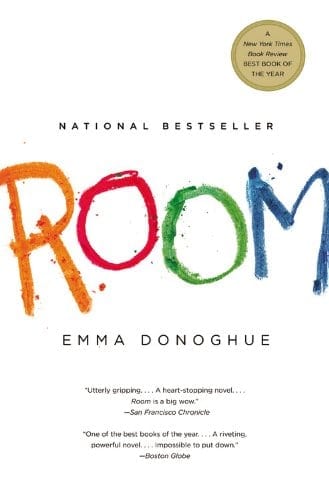
- Reading the books I love this year: This summer Sean picked up a book from my night stand that I had not yet read. I was working through my stack and had not gotten to it. It was Room, by Emma Donahue. Sean loved the book. He insisted I read it right away, it was so good! When I did I realized I would NEVER have given it to my 14 year old to read.
But it did get me thinking about reading choices this year. I decided to depart from a scripted list of books for him and have him read the books I read and love over the year. That is how Sean came to read The Martian. He is about to start reading Me before You, by Jojo Moyes. He reads them, and then we discuss them. I have him send me one email about a technique he notices and likes each day that he reads. It is quite fun and enlightening for both of us! It is very possible none of these books will “stand the test of time as modern classics”, but they will all be really good reads.
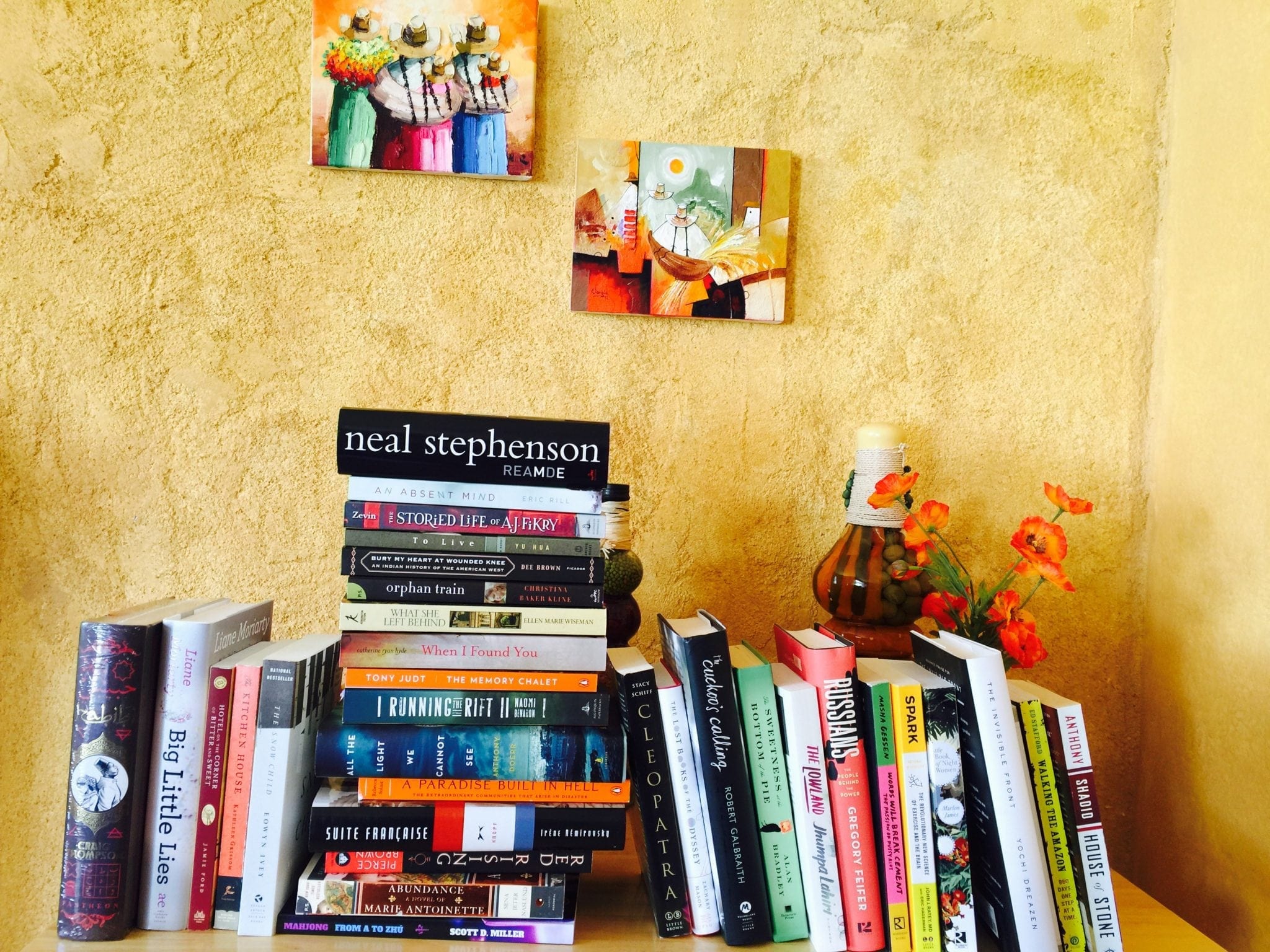
This is my book pile for this year. Sean will not read all these, but I will. Sean will only read the best of the best. That part is very subjective. I will be the one to decide which are the best of the best, someone else might disagree with me. How this pile is selected is that all year, when I hear of a book that sounds particularly interesting to me, I put it on my Amazon wish list. At Christmas time I go through this list and choose books from it. My big present from my husband is the stack of books from the wish list that I decide I want to read over the course of the year. This year I was surprised to find so many books on the list. It was because we spent last December in India, and I didn’t get any books from last year’s wish list. I ordered some from that list too. Some of these books are even from three years ago. We moved about a year and a half ago and some of these books were packed instead of read. I found the box at Christmas time and added them to the pile to be read this year. I love to read. Did I say that already? I will put the names of the books at the end of this for those of you who are curious about the titles. The reason for getting these books in print, not as e-books, is that when books are great I like to share them with my friends, and I hope many of these are great.
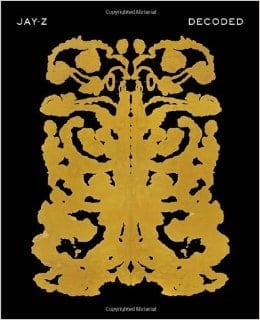
Sean and I particularly like writers (and singers) who are what we call wordsmiths. One of my favorite books for this discussion is Jay Z’s book Decoded, where he decodes the meanings, stylistic nuances, and history of hip-hop music as well as telling some of his own history. Decoded contains some adult themes. I did let Sean read it, but if you would not let your child listen to rap music, this book might not be a good fit. You could always download a sample of the e-book and see what you think. This link will take you to a two page spread of a song that he decodes.
http://online.wsj.com/media/JayZDecoded2.pdf
Blair’s Book Pile from left to right:
Habibi by Craig Thompson
Big Little Lies by Liane Moriarity
Hotel on the Corner of Bitter and Sweet by Jamie Ford
The Kitchen House by Kathleen Grissom
The Snow Child by Eowyn Ivey
Reamde by Neal Stephenson
An Absent Mind by Eric Rill
The Storied Life of A. J. Fikry by Gabrielle Zevin
To Live by Yu Hua
Bury My Heart at Wounded Knee by Dee Brown
Orphan Train by Christina Baker Kline
What She Left Behind by Ellen Marie Wiseman
When I Found You by Catherine Ryan Hyde
The Memory Chalet by Tony Judt
Running the Rift by Naomi Benaron
All the Light We Cannot See by Anthony Doerr
A Paradise Built in Hell by Rebecca Solnit
Suite Francaise by Irene Nemirovsky
Red Rising by Pierce Brown
Ill Fares the Land by Tony Judt
Abundance a Novel of Marie Antoinette by Sena Jeter Naslund
Mahjong from A to Zhu by Scott D. Miller (Sean gave me a Mahjong Set for Christmas.)
Cleopatra by Stacy Schiff
The Lost Books of the Odyssey by Zachary Mason
The Cuckoo’s Calling by Robert Galbraith
The Sweetness at the Bottom of the Pie by Alan Bradley
The Lowland by Jhumpa Lahiri
Russians, the People behind the Power by Gregory Fiefer
Words Will Break Cement the Passion of Pussy Riot by Masha Gessen
Spark, the Revolutionary New Science of Exercise and the Brain by John J. Ratney M.D.
The Book of Night Women by Marlon James
The Invisible Front by Yochi Dreazen
Walking the Amazon by Ed Stafford
House of Stone by Anthony Shadid
Check out our post on teaching history here and check out Sean’s Physical Education here.
Handcrafting High School: Year 1, The First Four Months: History
History: A Repeat of a Favorite Class and Volunteering
The Course: A Brief History of Humankind: This is a Coursera course, https://class.coursera.org/humankind-002, that repeats regularly. It is the best history course I have ever taken. The instructor, Dr. Yuval Noah Harari, from the Hebrew University in Jerusalem comes across as brilliant, even as he makes history accessible to a lay person! There is a book as well, but Sean did not use it. I did though, http://www.ynharari.com/sapiens-the-book/short-overview/. I read it, referred to it, and made a series of questions from it to accompany each lecture. Sean got a lot more out of the class that way. I did not have him write the answers, instead we would discuss them. Some of these questions took us far afield. It was a thought provoking quarter for history. The class is about the big picture not the memorization of dates and facts. Most people I know do not remember much history, probably because they just learned it for the test. History taught the way Dr. Harari teaches it is memorable.
This was the second time Sean has taken this class. I was surprised when Sean asked to take it again at the start of this year. He took it a year ago! He wanted to work on the skill of note taking, and he felt he could get more out of this class a second time. His main reason though was that he liked this class that much! After giving it some thought, I decided that it would be like rereading a book you loved. You do get much more out of the book the second time reading. Both Sean and I have gotten much more out of this class the second time through.
The course is free so even with the book this is very affordable. There are quizzes for the class on the Coursera site. (Sean is working on the skill of test taking this year. Sean is not an experienced test taker, and suffers from pretty severe test anxiety, so he needs to work on that skill.) http://www.ynharari.com/

I thought about having Sean write 4 research papers for history over the 4 months that he took to complete A Brief History of Humankind. I opted for him to volunteer instead. There are only so many hours in the day, and he didn’t have time for both. The way we scheduled the class, without a writing component, was not time intensive. Sean and I watched the video lectures in the car on the way to crew practice. We discussed the salient points covered in the lectures using the guided questions I had put together. We (yes we) took the quizzes. By the way, I read over the quizzes when I was making the guided questions, after I had taken the quiz myself, to make sure we covered everything, and that Sean was very familiar with the terms Dr. Harari tested. I felt it important that I take this class with Sean so that he had someone to talk with about what he was learning. I think history lends itself to intellectual discussion, and this provided a way for us to have intellectual discussions about topics I did not know much more about than Sean did.
Volunteering: We feel strongly about volunteering at our house. We have volunteered for an animal rescue organization (http://www.projectwildlife.org/), helping kids learn to speak English in Delhi, India (http://www.crossculturalsolutions.org/), and now on a re-election campaign.
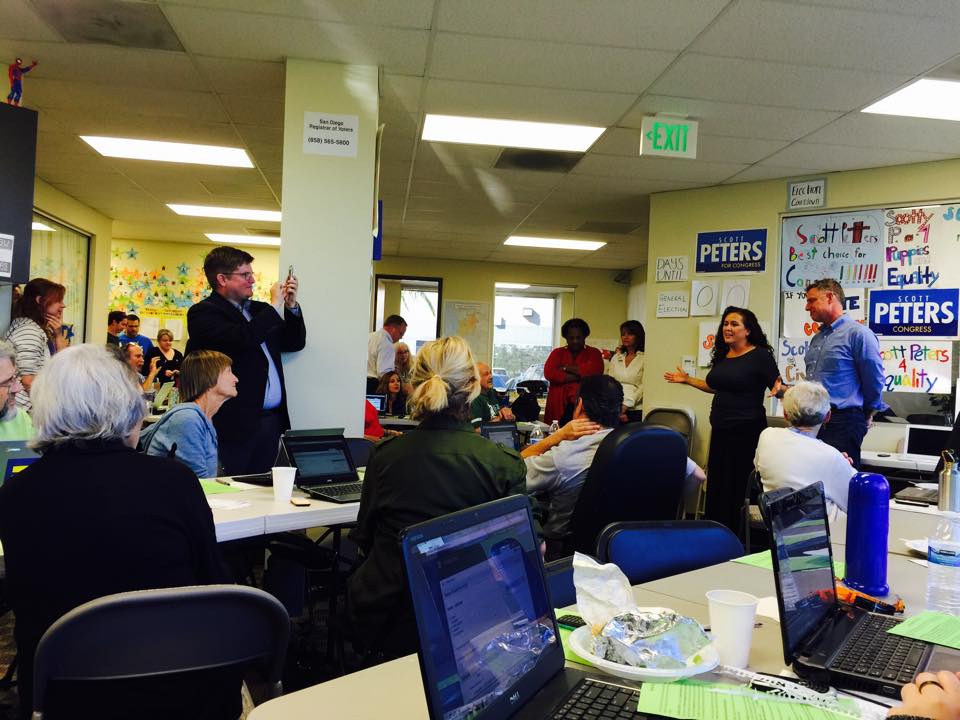
Every election cycle we include the election in our history. I have been corrected by some people that politics are civics not history, but I do not agree with that distinction. Aren’t our political choices a big part of what drives history?
We feel strongly about voting at our house. I think it is important to raise Sean in an environment where he is aware of what is going on in politics. I am raising a voter. I am also trying to raise him to be a critical thinker. I am not looking for him to agree with me on everything, or even vote as I do. I want him to come to his own understandings and beliefs about what is the best course. Democracies work best when all citizens vote. The issues and candidates you support might not win every time, but you will live in a more equitable and peaceful nation, because the majority of the people living in it voted, which means the majority of the people spoke about what and who they wanted for their nation.
I could not wait to vote as I approached the age of 18. I grew up in a family whose members voted, often for different parties and differently on issues. We discussed our reasons, we talked about the issues, and we did not let it become divisive when we disagreed about them. I have voted every voting cycle since I was 18 years old, except for one when I could not make it to the polls in time. I want Sean to take voting as seriously as Jim (my husband) and I do.
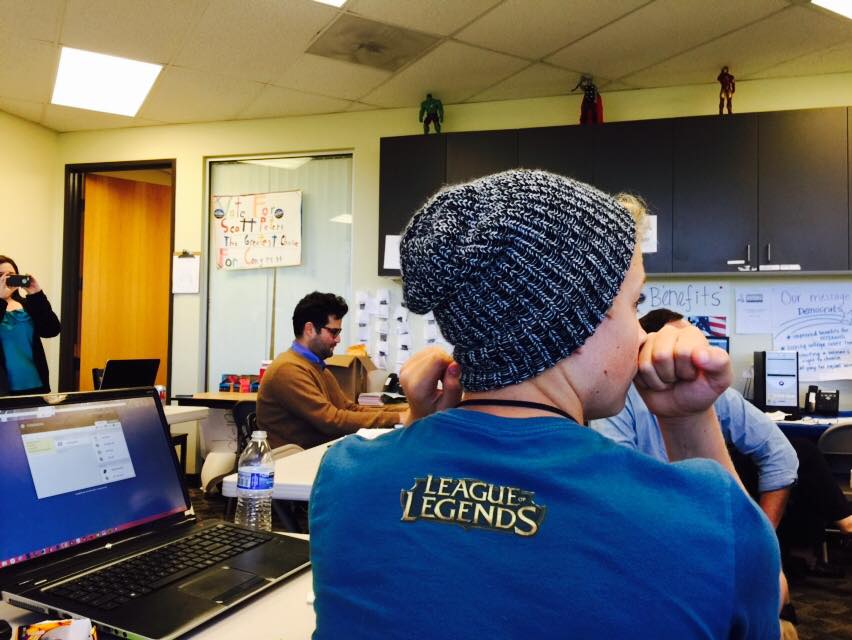
I think the best way to make sure Sean cares about voting and the issues facing our country is by participating in the process. This year Sean, Jim, and I volunteered on the campaign for a candidate running to keep his house seat. We watched the debates, learned about the issues, and paid attention to the results of the election. It made a difference to volunteer for a campaign because we were much more vested in the results.
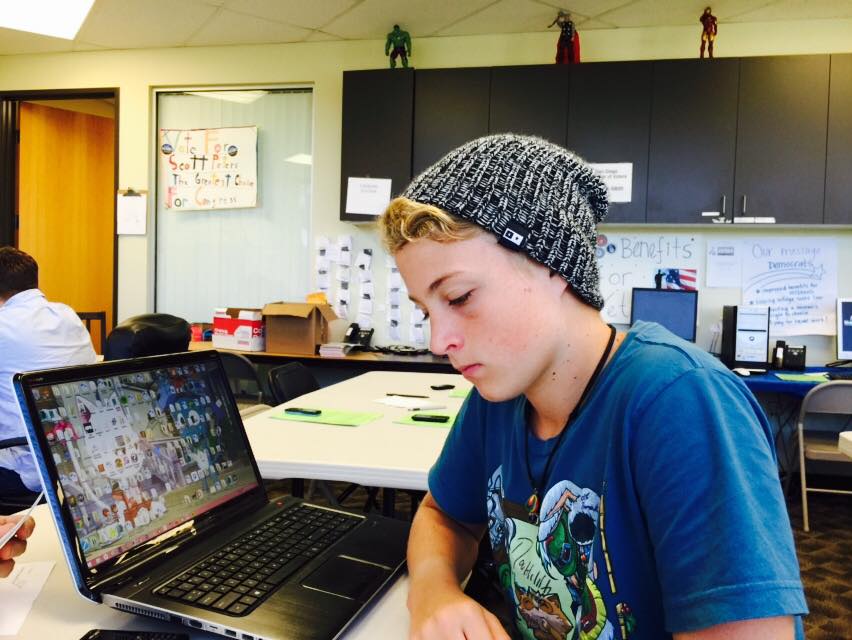
Check out our post on handcrafting science here.
Handcrafting High School: Year 1, The First Four Months: Science
Science: A Parent’s Passion
I LOVE science‼ My son likes science. This is the main area of handcrafting Sean’s education that has focused on the passions of someone in his family besides him. (My husband’s and my other passions are shared by Sean.) I am a scientist, and I know a lot of science. Even though he doesn’t have my strong passion for science, my son is good at science. He has had the benefit of a good science education. I am a passionate proponent of people learning how the natural and physical world works. I do not think of science as an ancillary subject, and I believe strongly that the treatment by our academic institutions of science as ancillary has led to a lot of the problems our world is facing right now.

I want to come clean with you; I did something I caution other parents against doing. I am using my middle school science textbook for high school. I made sure Astronomy and Earth Science was far enough along so that I could use it with Sean this year. Let me start by telling you, it is a middle school text. I am beefing it up by adding more math to it, having him write regular lab reports, and having him read relevant periodicals, books, and on-line articles to go along with the weekly theory, but I am not significantly changing my text. I am calling this course Applied Chemistry and Physics, which it is, on Sean’s high school transcript to make it easier for the colleges where he applies to recognize the coursework this class entails.
It might make me sound a bit like a control freak (I am not btw), but here are my reasons for using my text even if it is a middle school text. My choices of texts and courses are severely limited when it comes to those that are sold to the homeschool community because:
- I will not use a course that excludes or misrepresents scientific facts, principles, models, or theories that are considered core ideas in the field. I am a scientist. I am not going to play silly games about what constitutes good science. I care too much about it. It pains me to admit it, but most of the science materials developed specifically for the homeschool community play this game of omission and/or misrepresentation with many of the core established understandings of science. When I see this it is a signal to me that the person responsible for the material does not have the same passion I do for teaching people how the natural and physical world works, and I just cannot use their stuff.
- I find many public school texts available for homeschoolers to be dry, arcane, and full of advanced topics without enough grounding in the foundational fundamentals.
- Many texts have an inadequate or thoughtless pairing of labs with the theory.
- Often with public school texts, there is just too much material to get through in a year, with too much emphasis on facts that could easily be looked up using your phone (which is what we all do!).
- Most public school texts assume the material is going to be taught by a teacher, so the fit isn’t easy if you are not prepared to teach from it. And even I would rather not put together a yearlong series of lectures for just one student from someone else’s text. That is one reason my texts are written to the student as a really complete series of lecture notes. (That is how I think of my texts.) I consider each chapter in my text to be one (occasionally two) lecture’s worth of material written in a conversational manner. It is also why the Teacher’s Guide has a Text Review. Those would be my lecture notes if I were teaching from my book. It is much easier for me, the author, to write the lecture notes, than for parents who are using my texts.
This does make me sound like a control freak about science doesn’t it?!? LOL!
I have my reasons for using my text, but even so, a year ago it would have made me nervous to use this course for high school. Then two unrelated events happened that made me take a harder look at the science many consider high school level.
- I signed Sean up for a science co-op class to take along with this one. The class met the University of California a to g requirement for a high school science class. The class only met once a month! The labs did not seem to be carefully paired with the theory. They felt more like a hodgepodge of laboratory techniques crammed together. I concluded that if this class met the UC System requirements, then we were doing above and beyond that with my middle school courses.
- Early in the 2014/2015 school year, I was contacted by a parent who is using RSO Biology 2. They had recently moved to New York State. Here is her statement from a review she wrote about RSO Biology 2 on Amazon, “I’m now using this book to teach a science co-op in NY. According to the White Plains school district, the labs in this book can be used to qualify for the biology/living environment Regents Exam.” In a separate email, I learned that to graduate from high school in New York State you must take certain classes and then pass the Regent’s Exam for those classes. After reviewing the material in RSO Biology 2, the White Plains School District told the homeschooling parent that as long as they saved the records from the biology labs this course would satisfy the high school requirement for a year of biology/living environment. The irony was the parent was not trying to get them to approve this as a high school level course. Her daughter was in middle school. When she moved to the White Plains school district they wanted to look at the materials she was using before giving their approval that she could homeschool her daughter! She shared the topics and labs from RSO Biology 2 to get them to approve this book for use in middle school. Instead the school district approved the book for high school (and middle school). Her daughter and the other students at the co-op are getting credit for both, I guess. there was also a comment in a similar vein from a different reviewer on Amazon. This is a quote from their comment, “P.S. I suppose I should mention that before this program, he scored in the 69th percentile on science (7.3 GE) according to a national, standardized test for fifth-graders. This year he scored in the 90th percentile in science (13+ GE) on the same national, standardized test given to sixth-graders. What does that mean? It means he’s got mastery of the content more than anything.”
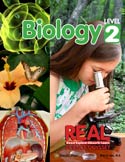
When RSO Biology 2 first came out, people contacted me about using it for high school. My standard response was that it was not written to be a high school level text and there were things that were left out that I would have included in a high school level course. For example, I left out the electron transport chain during the discussion of photosynthesis. I left out a probability exercise showing the number of different combinations of chromosomes that can be made during meiosis and then recombined at fertilization for two diploid organisms with 3 chromosomes in their karyotype. (I did write this though. My publisher wisely had me remove it. It really was advanced even for most high school students. 😉 ) There would be more chemistry woven into the biology. Next school year Sean will study chemistry. I will have to make sure he gets the important biochemistry then.
I spent some time thinking (mildly obsessing my husband and publisher would say, LOL!) about the situation with the Regent’s Exam, and I think I know why the school district felt RSO Biology 2 qualifies as a high school level course. Good science programs are moving away from a focus on memorizing facts and to a focus on science practices. In most cases, the basic concepts and foundational fundamentals are the same for a high school and middle school text. Maybe middle school courses do not check every single box for the more complicated concepts, but there is no way for middle school and high school students to practice most of the more advanced concepts anyway. Very few texts have a strong focus on the application and practice of the science concepts being taught. RSO Biology 2 (and Astronomy and Earth Science 2) have that as a primary focus. There is a focus in these courses on learning the foundational fundamentals and then applying them. A focus on the application and practice of science concepts and foundational fundamentals translates to a focus on using the scientific method in a meaningful way, the way scientists actually use it. It is one of the reasons I have students make their own slides in RSO Biology 2. If you buy prepared slides, you will get a better view of the specimen than if you prepare your own slides. I guarantee it! But if you do that you will never become good at making slides, and studying science should not just be about looking at what others have done. Studying science should include you interacting with the natural and physical world to come to a better, more complete understanding of how it works.

I would have used Astronomy and Earth Science 2 even without these two things happening, but I would have obsessed more, making sure I covered the specific facts I am leaving out of the middle school text that I would not leave out in a high school text. I have a confession to make about last year too. I used my biology text as a high school level biology course in 8th grade. Sean wanted to do biology again in 8th grade. The sequence for Sean’s science during middle school was 5th grade: middle school biology, 6th grade: physics, 7th grade: chemistry, 8th grade: high school biology. He hasn’t had astronomy or earth science since 2nd grade.
So far this has been a great year of science. The sequence of topics in the text is astronomy, geology, hydrology, the atmosphere and meteorology, and environmental science. Sean has only gotten through the astronomy portion. Sean is loving science this year. Astronomy has really captured his interest and imagination. I have to be careful when Sean looks at the supplementary videos and articles, because he can lose a day that way. Not that I mind, it is just that I have to make sure there is nothing pressing when he starts science!

In addition to using my course, Sean has read the following:
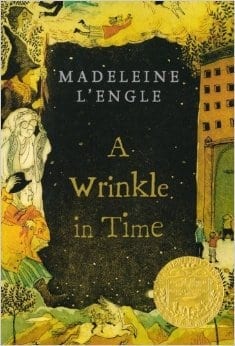
- A Wrinkle in Time by Madeleine L’Engle – The reading level was a little young for him, but I coupled the reading with a discussion of Einstein’s Theories and how there could be “wrinkles” in time. (A topic that isn’t too young for him or anyone else!) Sean loved this. In addition to his studies, he has taken the time to learn MUCH‼ more than I know about parallel universe theories!
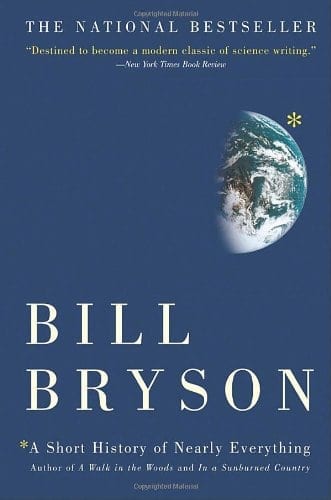
- A Short History of Nearly Everything by Bill Bryson – This book along with my course, I feel, took Astronomy and Earth Science 2 up to the high school level! Sean has loved parts of this book and been lukewarm about others. I should probably state here, my son will enter college with a level of science that will enable him to do well in his science courses. Sean knows more science than most adults, but most adults do not have much science knowledge. Unless Sean changes his mind, Sean’s focus in high school science will not be at the AP science level. If your student’s focus is at the AP science level, this is not a rigorous enough course for you. But because of the focus on the foundational fundamentals, Sean is able to make connections across the science disciplines that are deep and nuanced
.
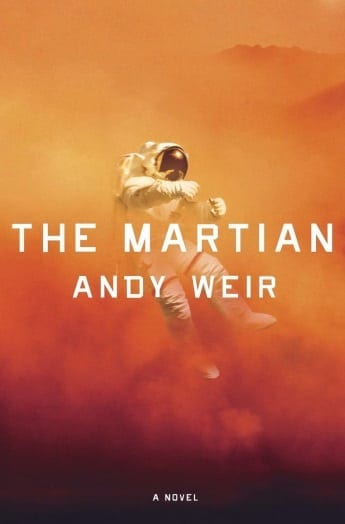
- The Martian by Andy Weir – I read this book in two days. It took Sean a week. This book is science, science fiction, action, and a nail biter. Each day that Sean read this, I had him email me a writing technique he noticed and liked that the author had used, I also had him email me 1 science fact from the book.
I know many of you want to get your hands on this text NOW!! I am peddling as fast as I can, I promise!
Check out our post on teaching computer science in home schooling high school here.
Handcrafting High School: Year 1, The First Four Months: Computer Science
Homeschooling Coding: A Student’s Passion
I have been very thoughtful handcrafting this academic area. I will go through the process of how I did it, so you can see what I mean when I say I am handcrafting Sean’s education. I do not know much about coding, so when it comes to homeschooling coding, I have had to rely on others for how it is best learned and advice on the best course of study. Because of this, I think it will make it more meaningful for you to see how I went about handcrafting this area versus a subject area like science.
Why this has a central place in Sean’s core education: I think computer science, coding, should be mandatory and not treated as an elective. I pay a lot of attention to current events, academics, and how both should be merged for Sean’s education because of where the world is headed. Based on my observations, learning to code should not be treated as optional! At this time, no other academic discipline leads to as many different options for meaningful career opportunities. Traditional schools as a whole are behind the ball on doing a good job of teaching this too. You almost have to homeschool if you want your child to have a good education in computer science.
Three years ago, I bought a canned curriculum designed to teach kids to code. Sean hated it. I made him stick with it for 6 weeks. He never stopped hating it, so I let him quit. But I never stopped believing that learning to code was so important he would have to study it again at some point.
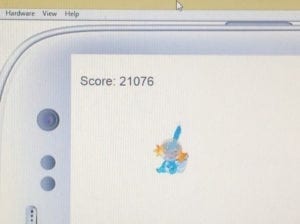
Two years ago Sean told me he wanted to learn to design computer games. Yeah! His interest was piqued‼ This was where it all started. I found a camp he could go to for two weeks during the upcoming summer focused on designing computer games. I also got lucky at about the same time. I was on the lookout, you see. I read an article in my alumni newsletter about a group at UCSD that was starting a Sunday program where kids could go and learn coding. The name of the group is ThoughtSTEM. Sean began attending the Sunday ThoughtSTEM sessions. He also went to the summer camp and learned, as he told me, “It is more fun to play video games than to make them.”
 http://www.thoughtstem.com/home
http://www.thoughtstem.com/home
All along I immersed him in everything ThoughtSTEM had to offer. I made a point of talking to the people running it, emailing them when I had thoughts or questions, and getting the most I could out of their program for Sean. They became Sean’s and my mentors for how to learn coding. The take home message here is that I thought it was important for him to learn coding, so I worked hard at making it happen.
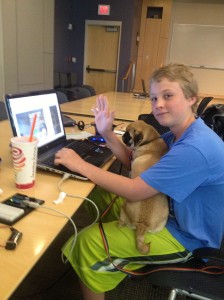
Sean took a high school level class through ThoughtSTEM last year in App Development. He also went through an internship program with them, where they trained him to teach young kids to code. He interned 1 week at a camp in the spring and 1 week at a camp in the summer for them. He participated in a coding faire they put on at UCSD. This year his training turned into a job. Sean works about 9 hours a month teaching coding to kids.
Throughout the 2013/2014 school year, Sean worked on designing websites with ThoughtSTEM. He also learned Photoshop and 3-D design with Maya and 3-D Studio Max. These last were not with ThoughtSTEM; they were through other programs. I learned that Sean likes to code and work with computers to create art.
The focus of this year: This summer I asked our mentors at ThoughtSTEM what they thought Sean should study for the 2014/2015 school year. They suggested Sean learn the foundational fundamentals of coding. Things like algorithms. (This is very ironic if you follow my science posts.)
I talked to Sean about how he wanted to proceed with this and he wanted to learn how to code C/C++. I did some research and decided the best way to make this happen was to put him in a series of coding classes at UCSD Extension. I decided on an extension, not a community college, because the extension classes are 3 hour classes once a week over 9 weeks. That fits much better with our schedule than 2 or 3 times a week over 16 weeks as is the schedule for most community college classes. I signed him into the first of a 5-course series to learn to code C/C++. The first course was called, An Introduction to Computer Programming with Java.
A hoop to jump through first: When I contacted UCSD Extension they told me he could only enroll if a counselor or other administrator from our school district okayed it. They would not take my word that he was ready, even though the only prerequisite was access to a computer with an internet connection. I explained that I was the sole director, administrator, and educator at our home school, and the only person from his “school” who could substantiate that he was ready for this class was me, his mother. They actually told me I was incorrect, and that by law I must be working with someone from the school district where we live. I knew they were incorrect, but I wasn’t sure how to respond. I gave it some thought, because homeschooling coding was going to happen this year! Luckily, I contacted a state homeschool group I am a member of, The Homeschool Association of California (HSC) http://www.hsc.org/home-page.html for advice. They forwarded the issue to their legal department, and within 12 hours an attorney sent a letter to me to forward to UCSD Extension. In addition to them being incorrect about how homeschooling works in California, they were discriminating against Sean because he was homeschooled.
My message to you is, have a state homeschool group you can go to. If you had told me that I was ever going to need legal help at any point while homeschooling Sean, I would have thought you were nuts! But guess what, I did. Thank goodness I had someone I could go to. There are two great homeschooling groups in California, HSC and California Homeschool Network (CHN) http://www.californiahomeschool.net/. I am a member of both. It was also good that I did not give up. I did not get mad at UCSD, but I did stick with it. I wanted to put Sean in that class and I worked at it until he was in. http://extension.ucsd.edu/
Some surprises were in store: Sean was in! Now for the real work. This was a college class. It didn’t occur to me, but Sean did not know that you should take notes, ask questions in class, or use the book and highlight the text or make notes in the book. I had to work with Sean so he learned these skills while he was taking the class. Also, he was intimidated by the fact that he was the only person under the age of 22. Sean thought all the people were between the ages of 22 and mid 40’s. I do not know. I never went into his class with him. He would only ask the instructor questions via e-mail, which bugged me, but did not seem to bother his instructor.
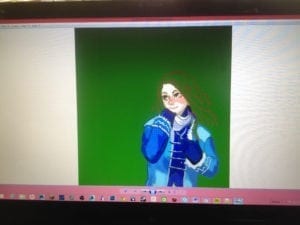
As I told you earlier, one of Sean’s passions is coding to make art. He loves to design web sites. He does not love to code to make programs that are not visual. For him, Google Doodles are captivating; writing a program to calculate the tip and change for a restaurant bill is not. This class was work for him because it focused on the areas that he is not passionate about. At one point, he told me he was done with coding after this class. My response, “Darn, just when it stopped being optional.” That to me is the heart of child-led learning. My child’s passion and my own belief that homeschooling coding was important led us here, but when he stopped being passionate about it, I did not let him walk away. Like I told him, “If I thought when you were 30 you were going to say it was a mistake to stick with coding at the age of 14, I would let you quit. But you won’t say that. I am sure of it.”
Sean is a little more keen on this class now. He graduated the class with 104% in it. He worked hard and got an A+. The teacher sent him an email congratulating him, telling him, “He had succeeded where others had failed!” Do not get the wrong impression that Sean is particularly gifted at this. I just made sure he had the time to work on the programs and get them debugged and turned in before the due date. No procrastination was allowed. When he got stuck he emailed the teacher and got the help he needed.
In case you are wondering, I am not using this class so that Sean can attend college early. Sean will attend college in 3 ½ years. I just couldn’t find any good classes to teach the foundational fundamentals of coding outside of a college setting. I had to find a class for this because I did not want to learn computer programming. 🙂
The plan going forward: Sean has 4 more classes to take focused on programming with C/C++. At the end of that, he will earn a certificate in Programming with C/C++. http://extension.ucsd.edu/programs/index.cfm?vAction=certDetail&vCertificateID=23&vStudyAreaID=14 He will be finished by this time in 2015. In 2016, he plans on starting a series of classes to earn a certificate in Graphics and Digital Design. (He will get back to his passion after picking up some foundational fundamentals!) He will complete the C/C++ Series. I am treating those classes as a mandatory part of his core classes. It is through this series that he will learn the foundational fundamentals for computer programming. It is just one language, but that seems to be how it works with computer science. The Graphic and Design classes are planned but can be changed if Sean finds another area of computer related courses he would rather take. This sounds good to Sean now, but we will have to see where he is at a year from now.
When I read over this post, it seems messy, wandering, and a bit chaotic. I was going to shorten it and clean it up for readability, but decided to leave it so you would get a feel for the messy, wandering, chaotic process I use for handcrafting Sean’s education. This process is the journey, and it is a very personal one. We tried some things that worked better for him than others. Some of the things we tried took fortitude and hard work before he liked them. Some things he loved so much he had trouble tearing himself away from them. Some things he never liked. There is simply no way of knowing before embarking on the journey what it will look like while you are taking it. So far the journey has led to a place where Sean has completed a college level computer coding class in which he learned a lot of the foundational fundamentals of coding, and he has a part time job working in a field he loves. Who knows where it will lead from here, he is still on the journey. This is the academic area he is the most passionate about, but only specific parts of it. He is 15. Who knows where it will lead. And that’s okay, as long he enjoys the journey!
Read our handcrafting high school article for math here.

